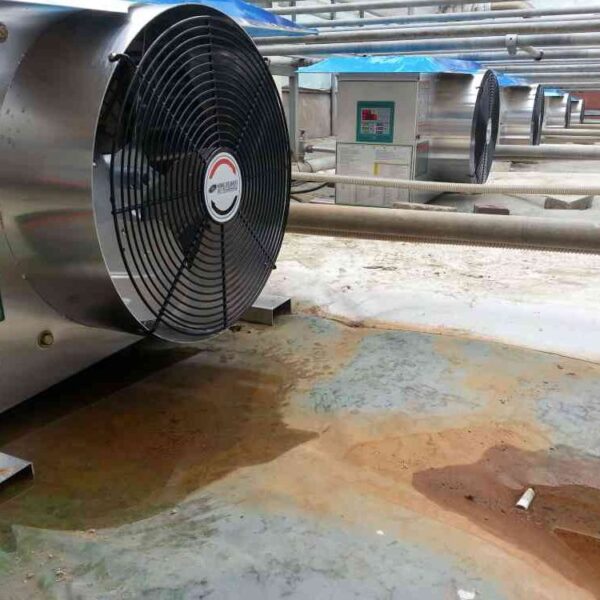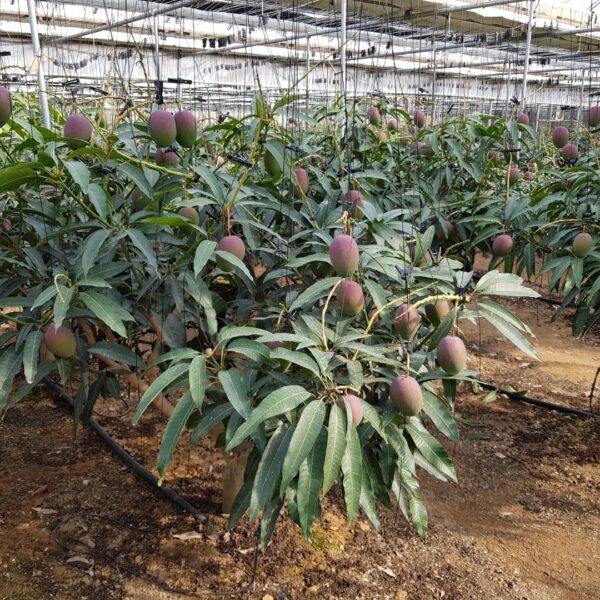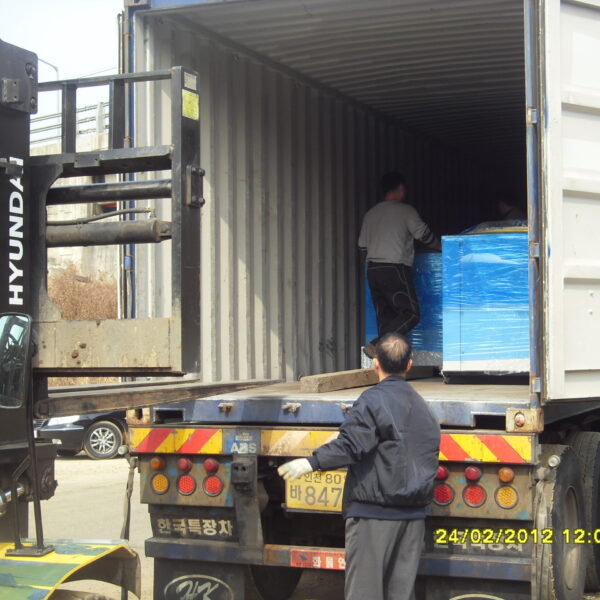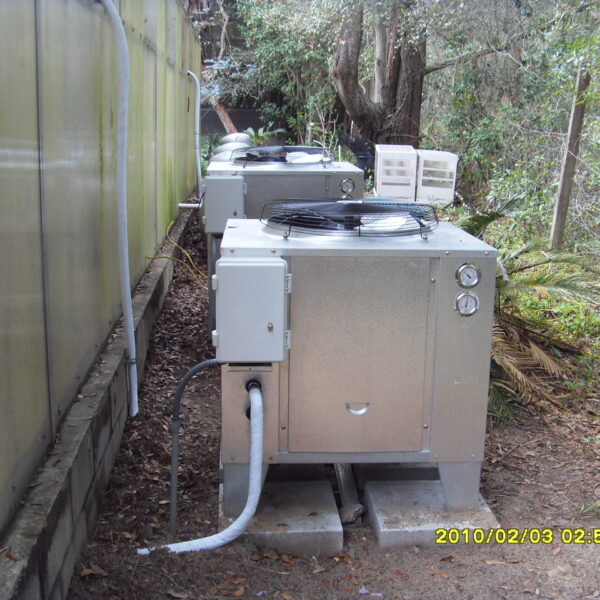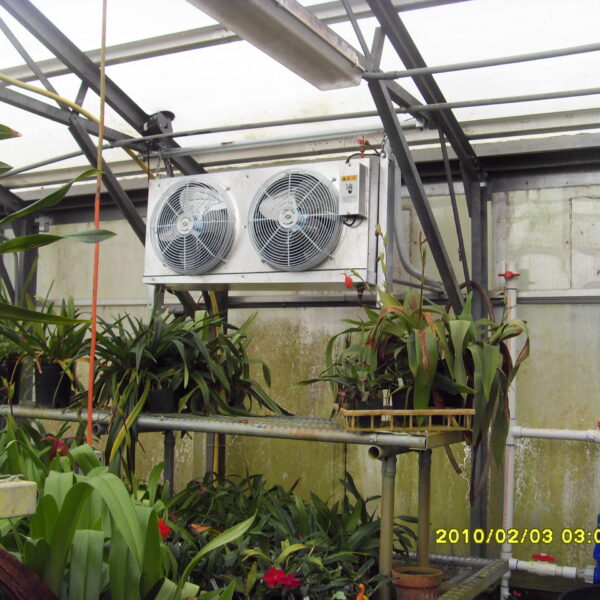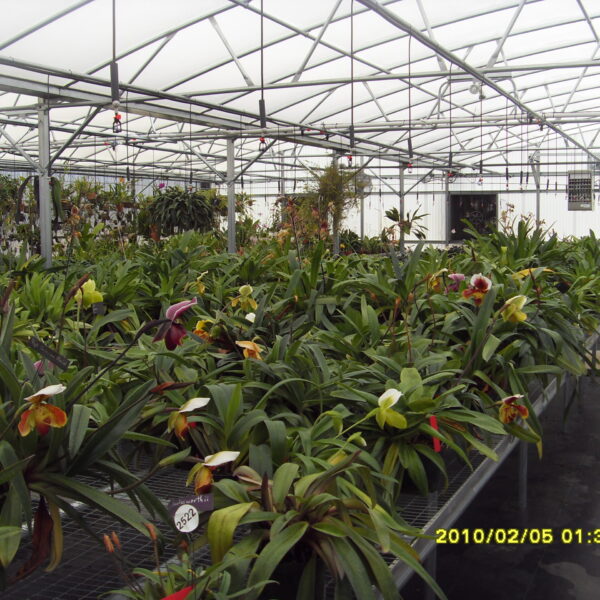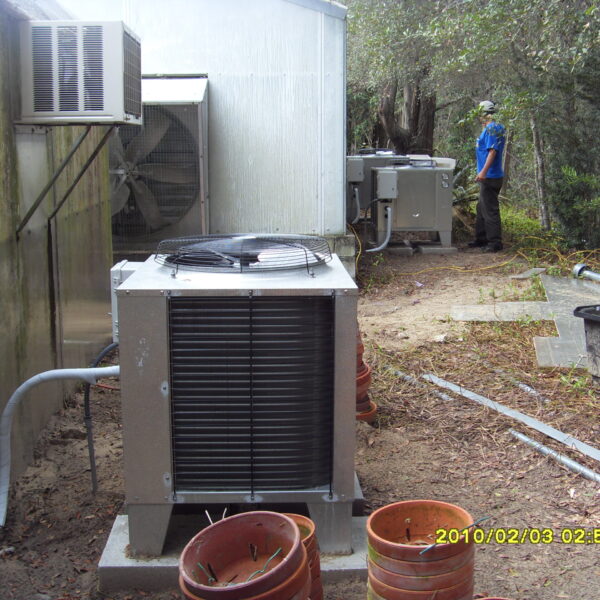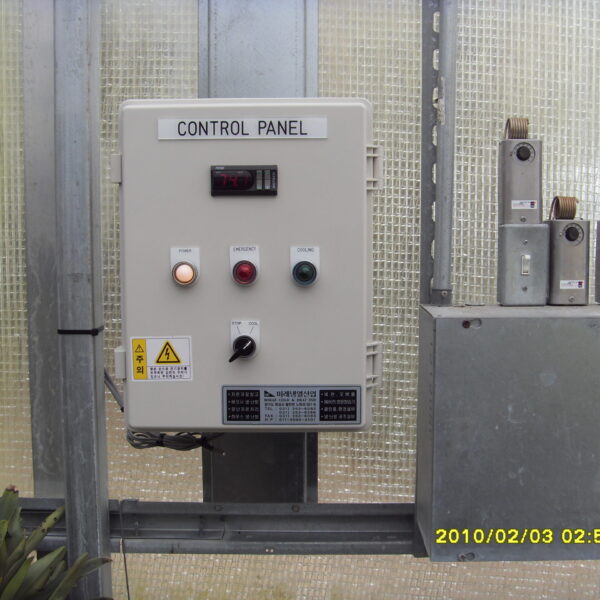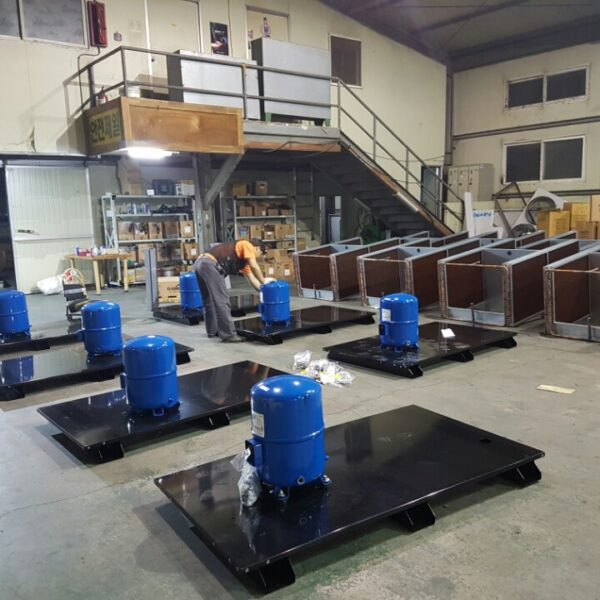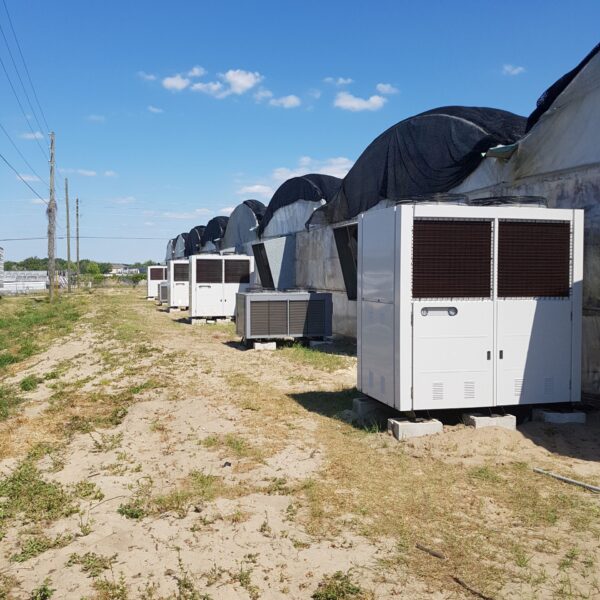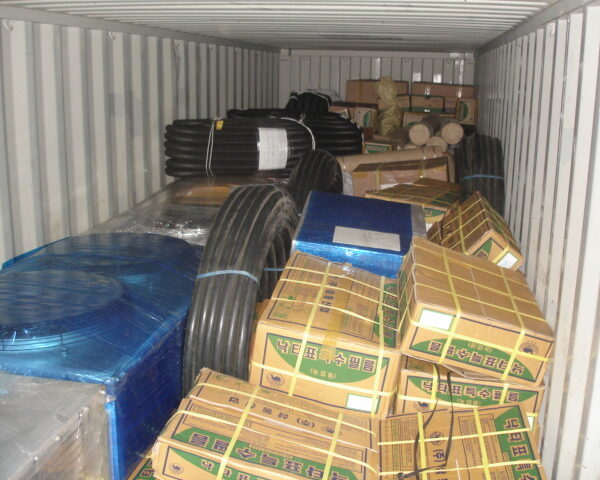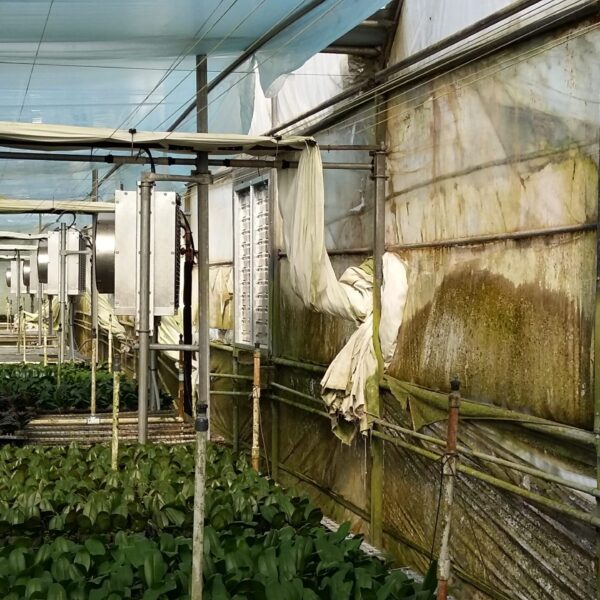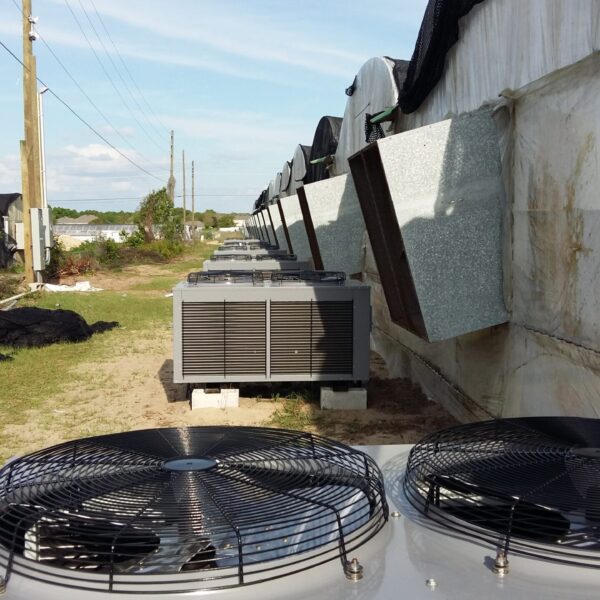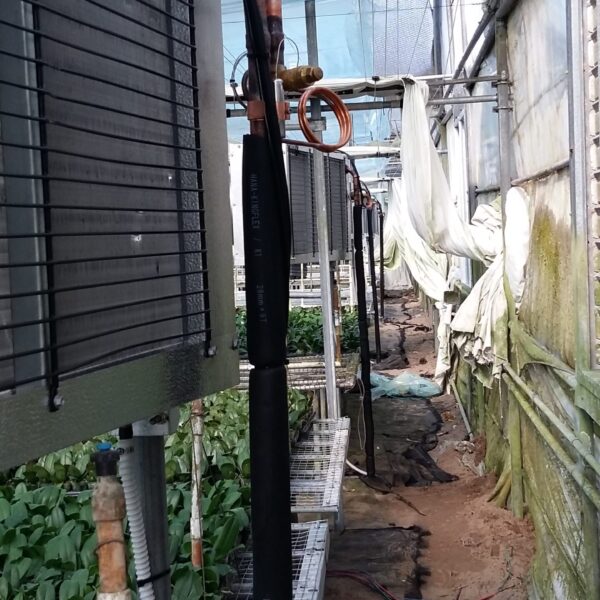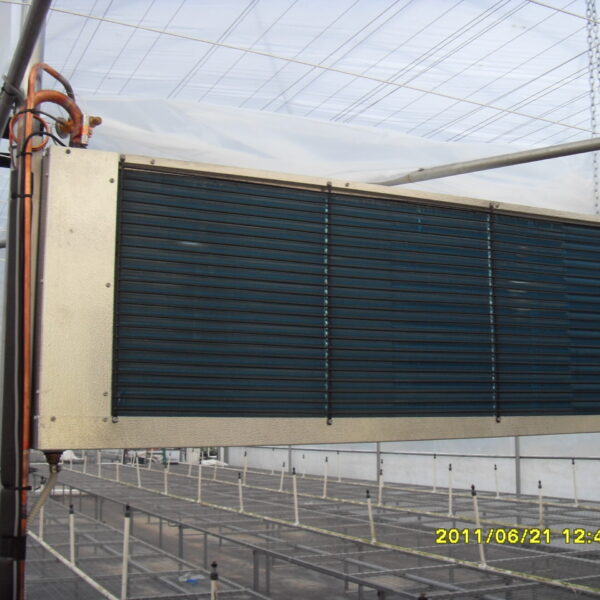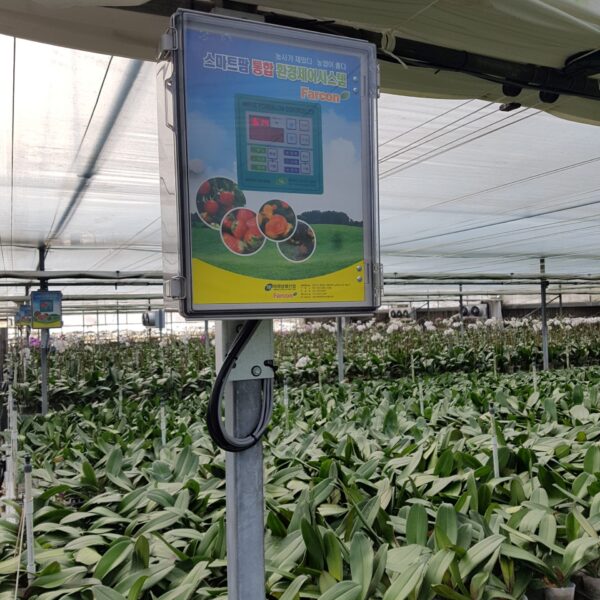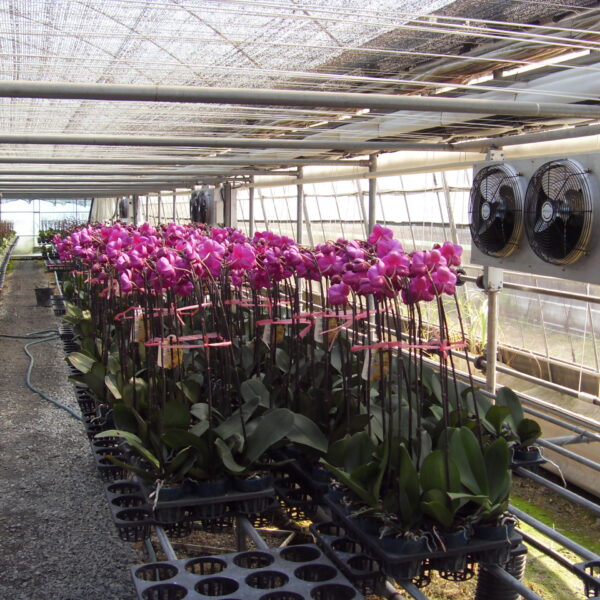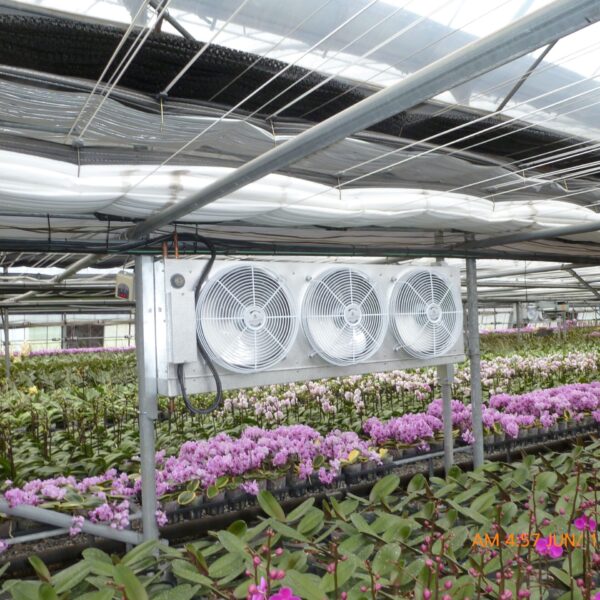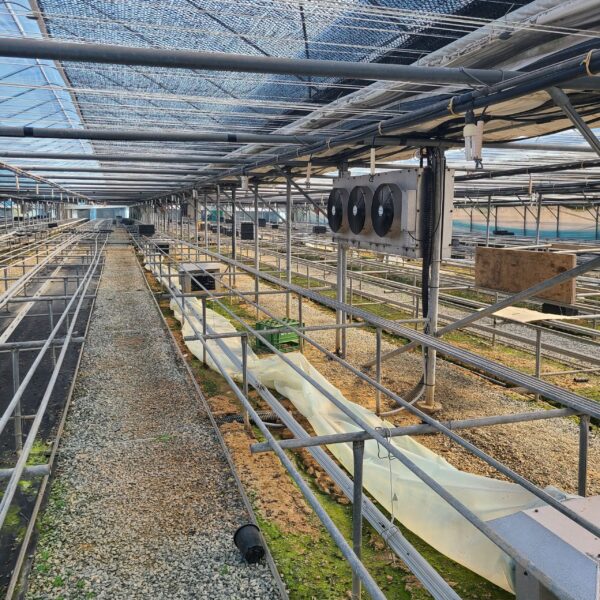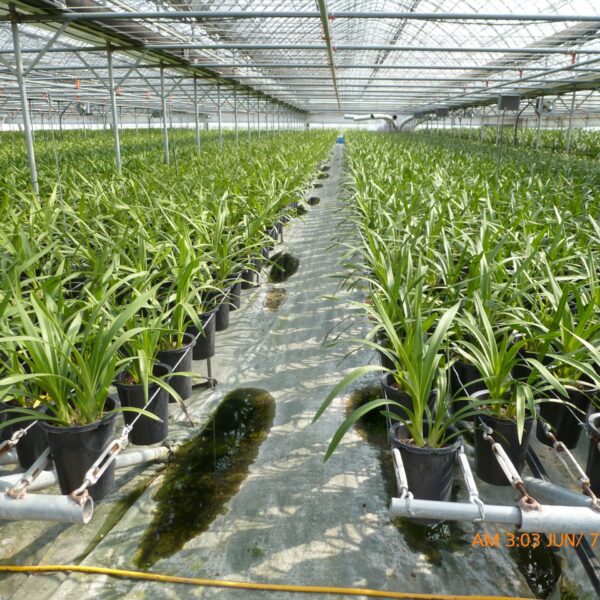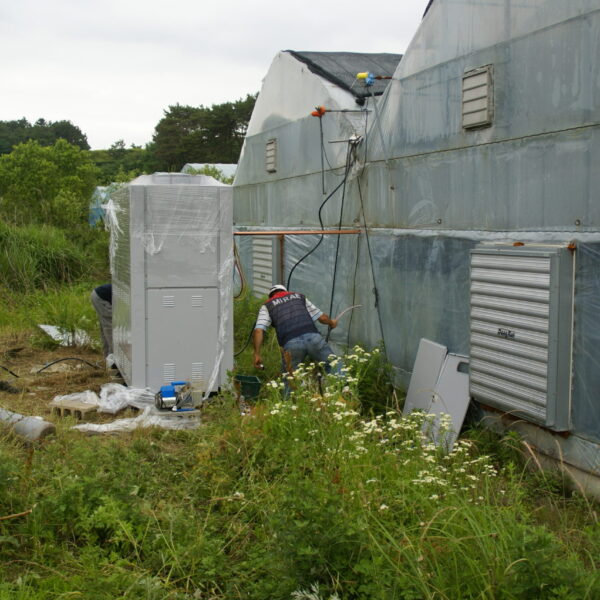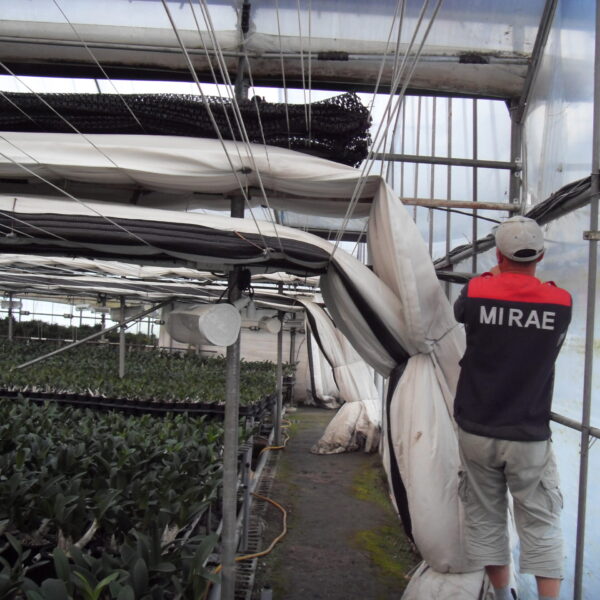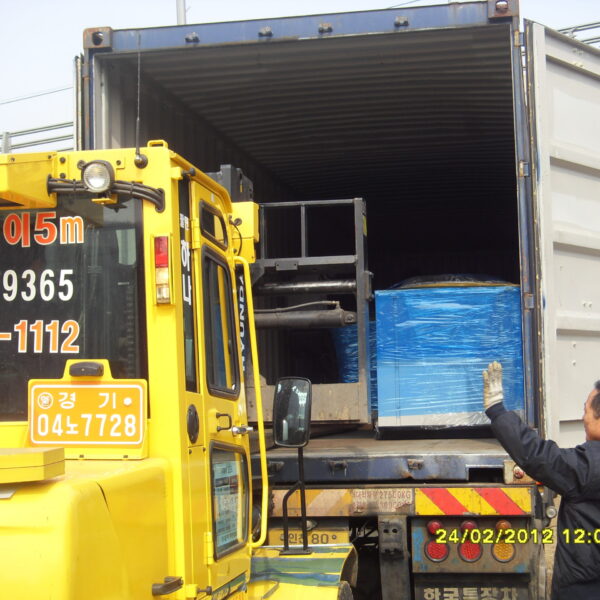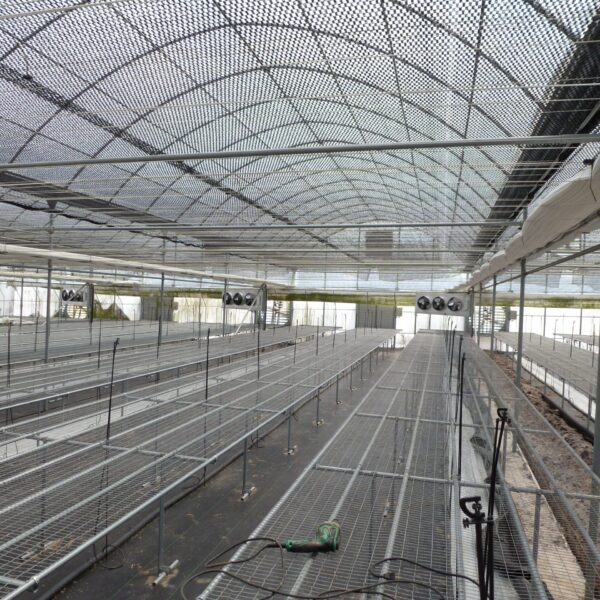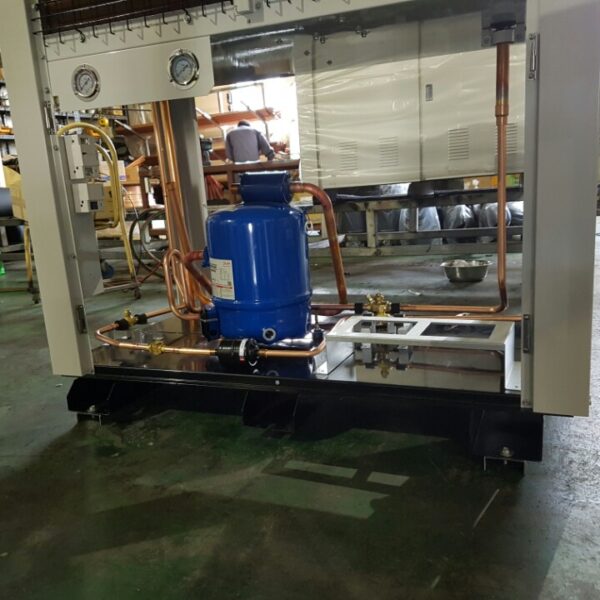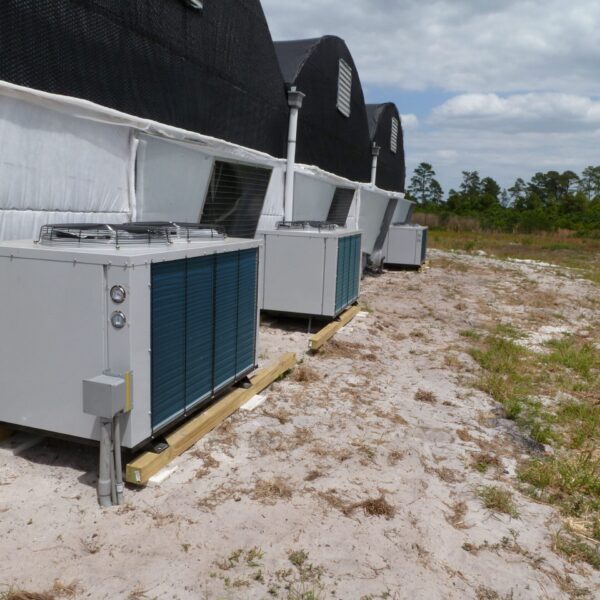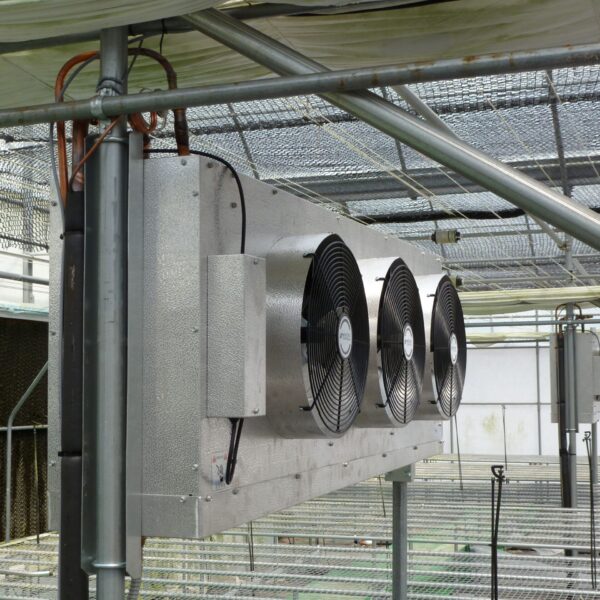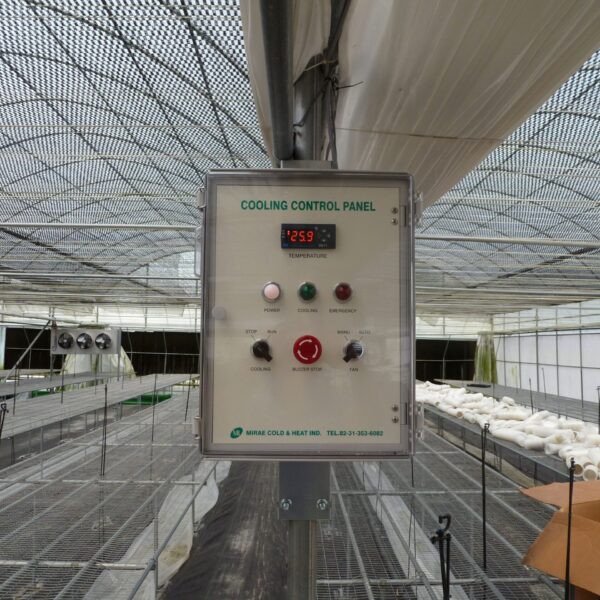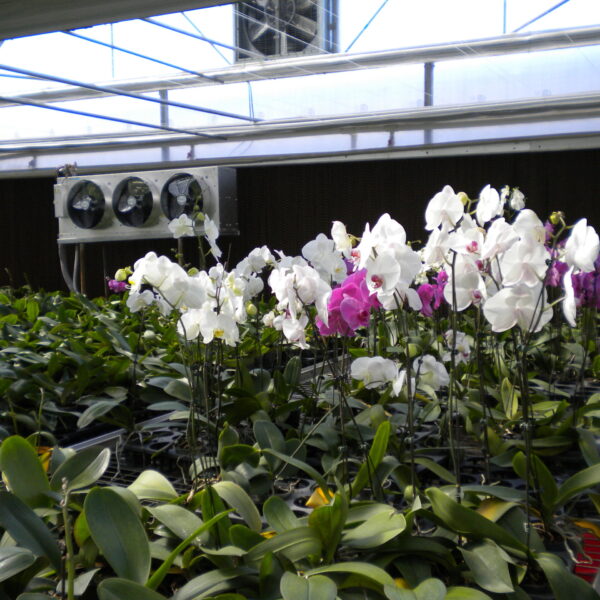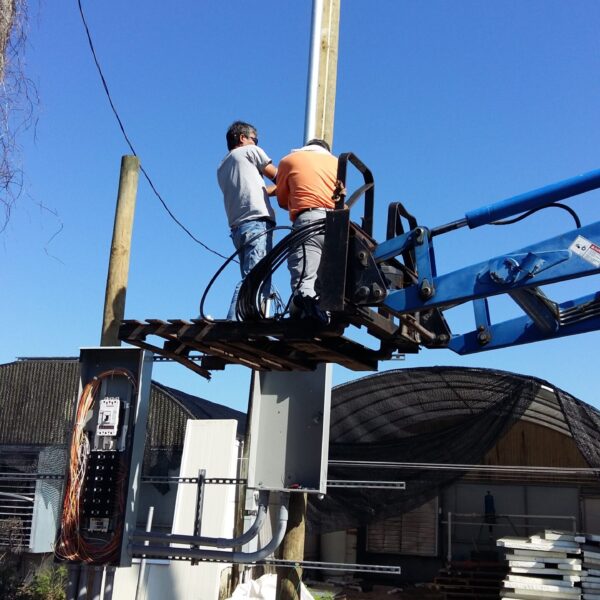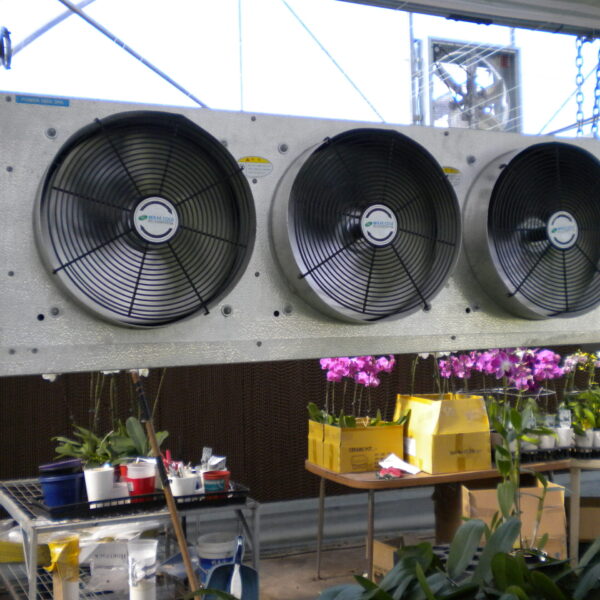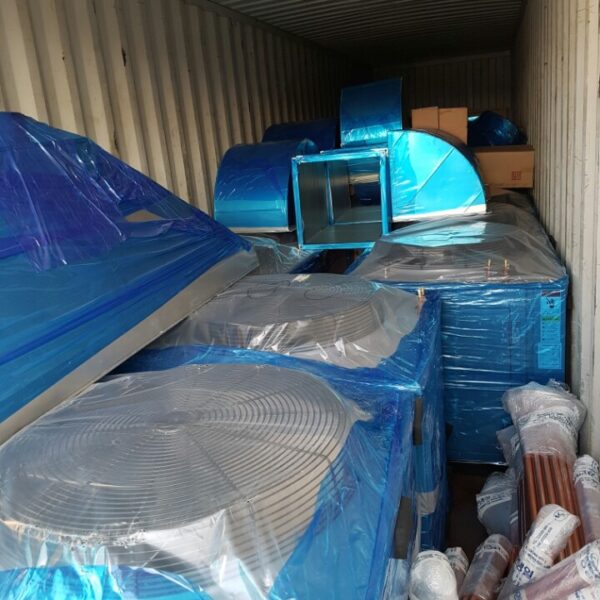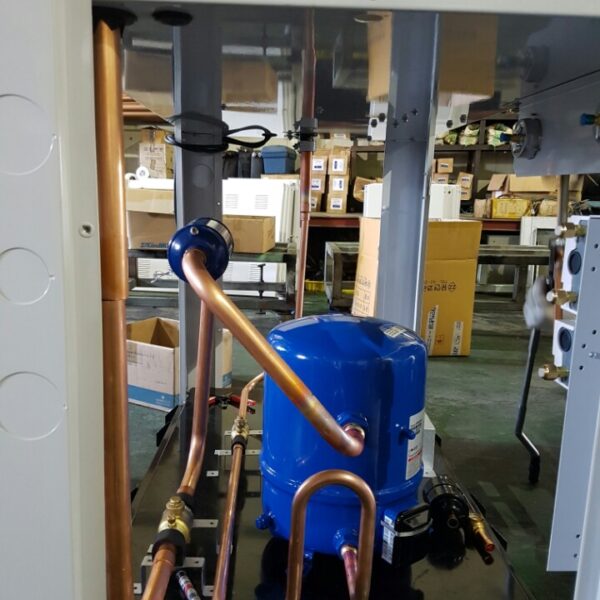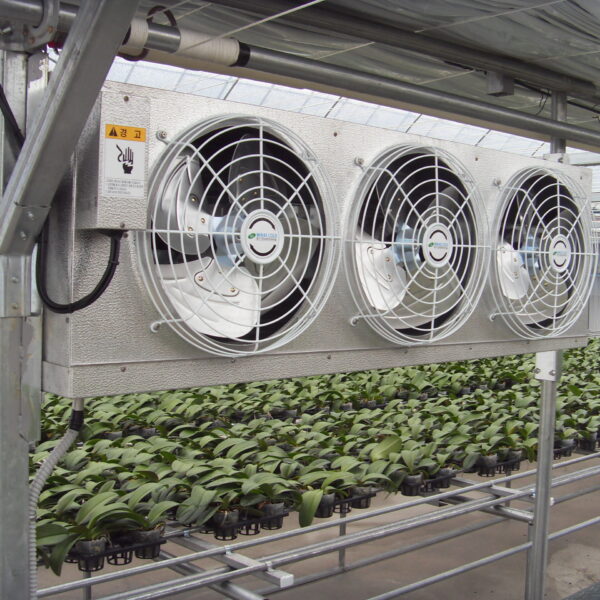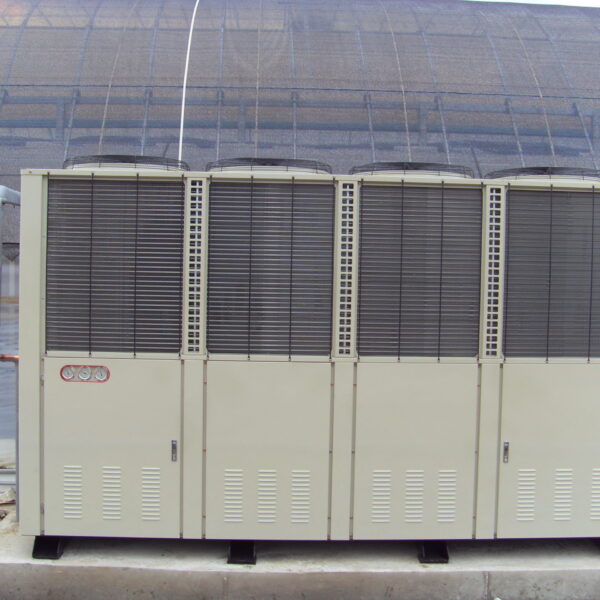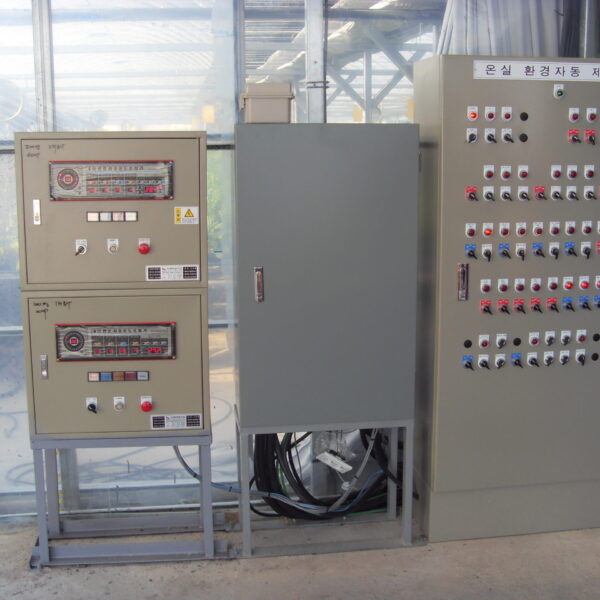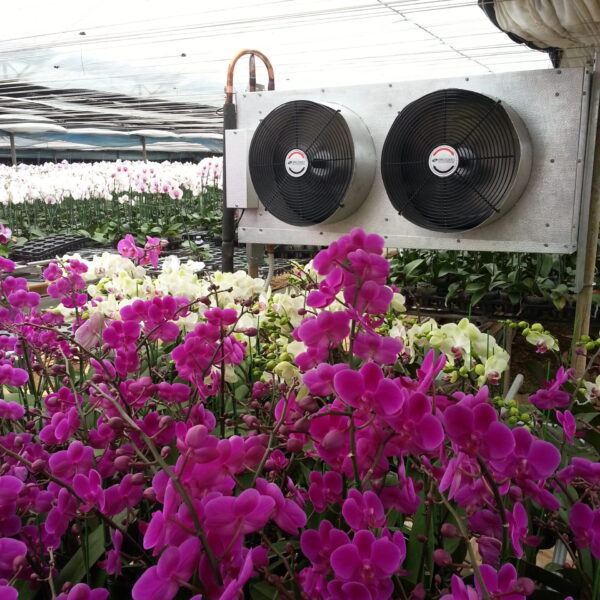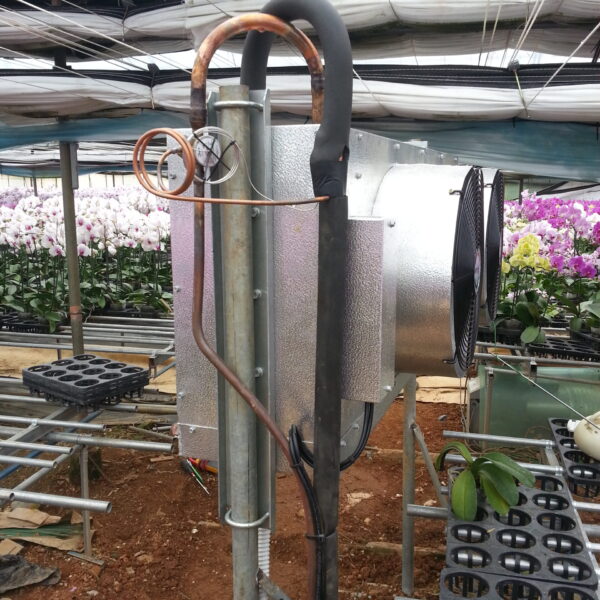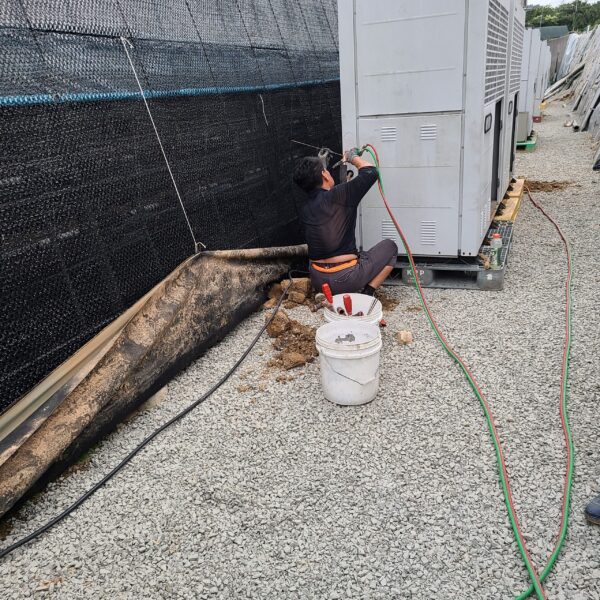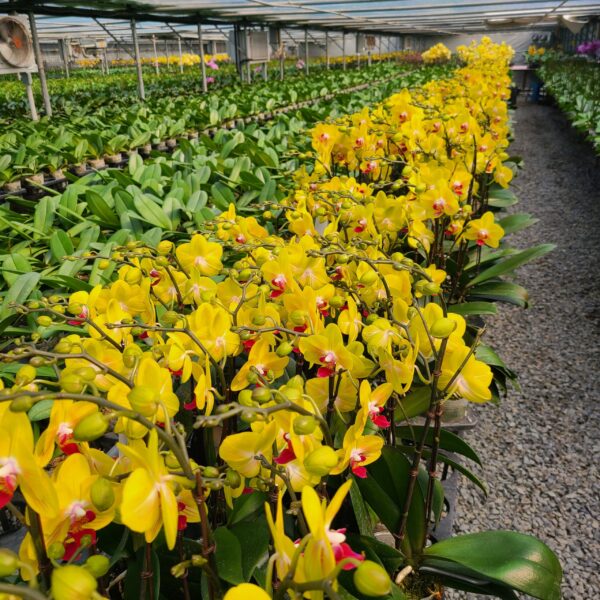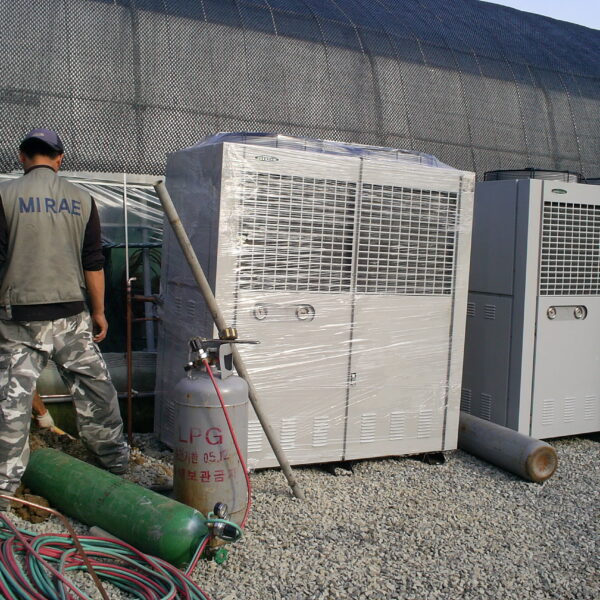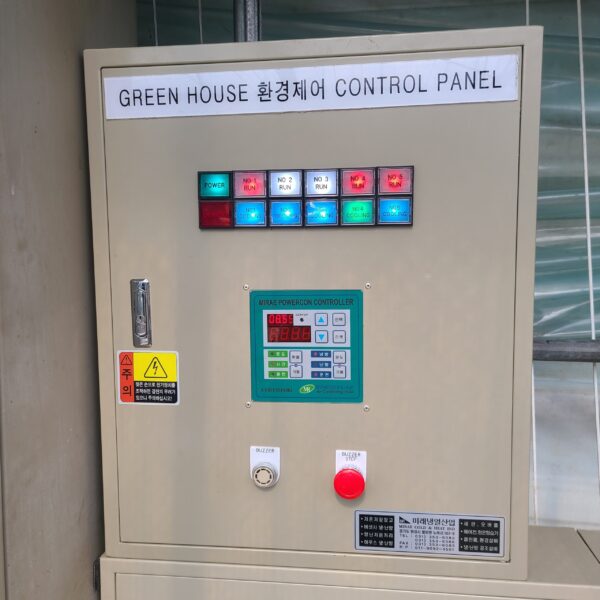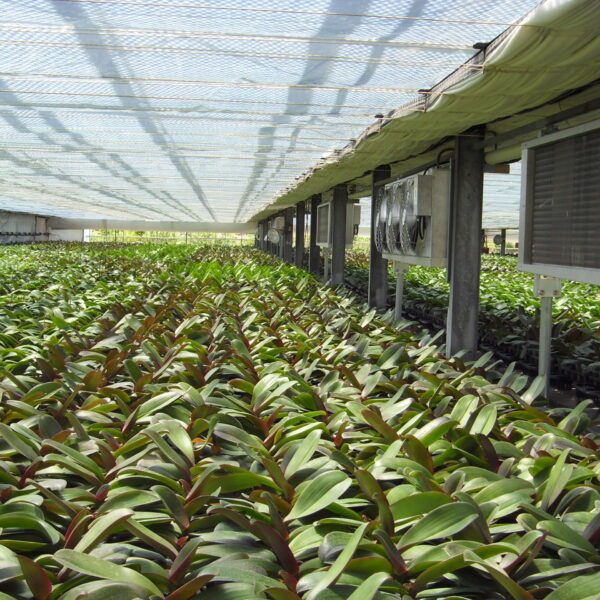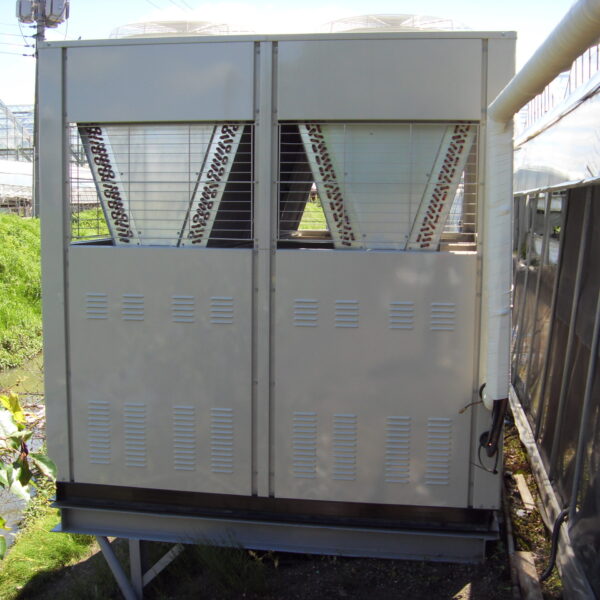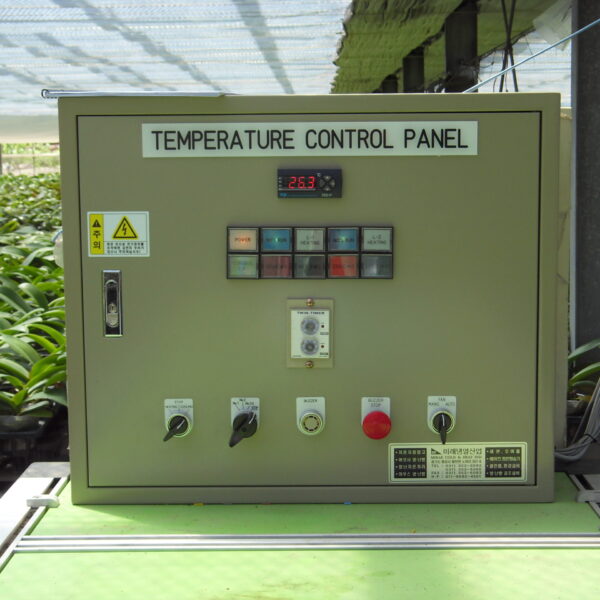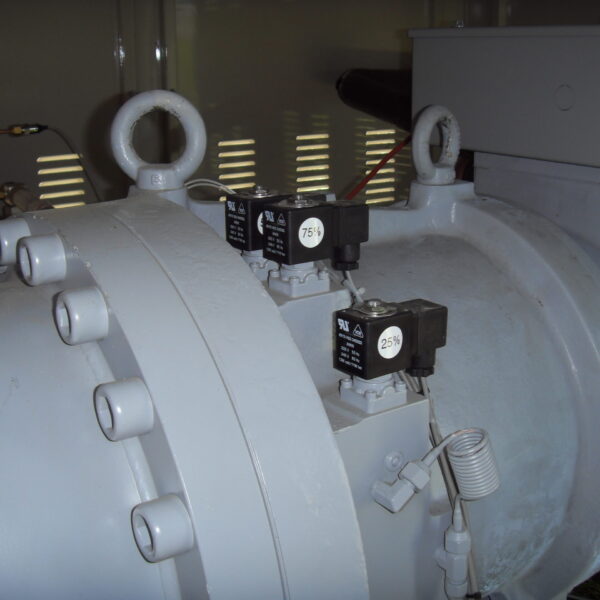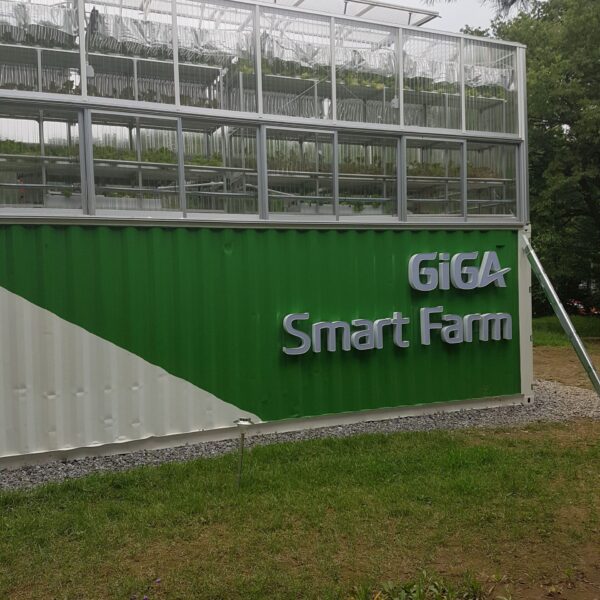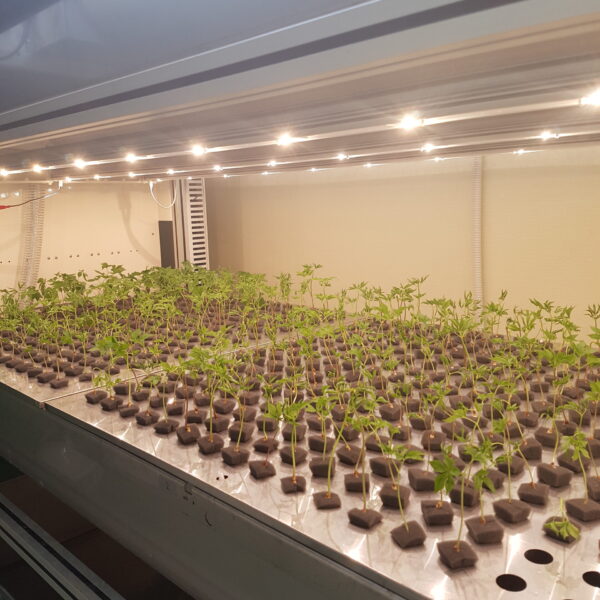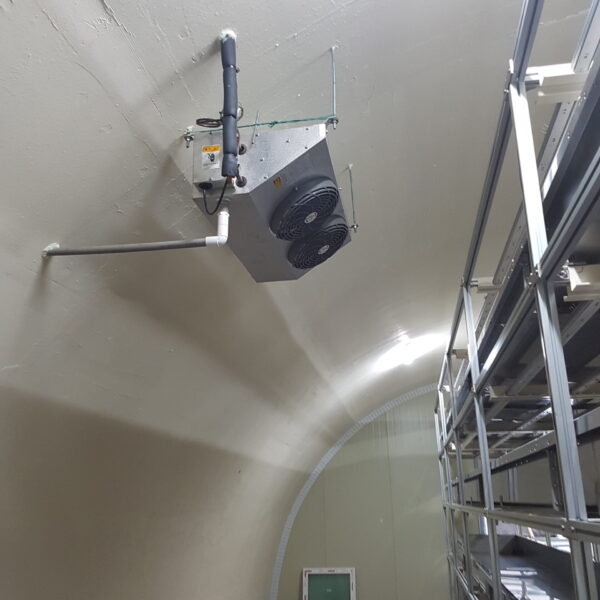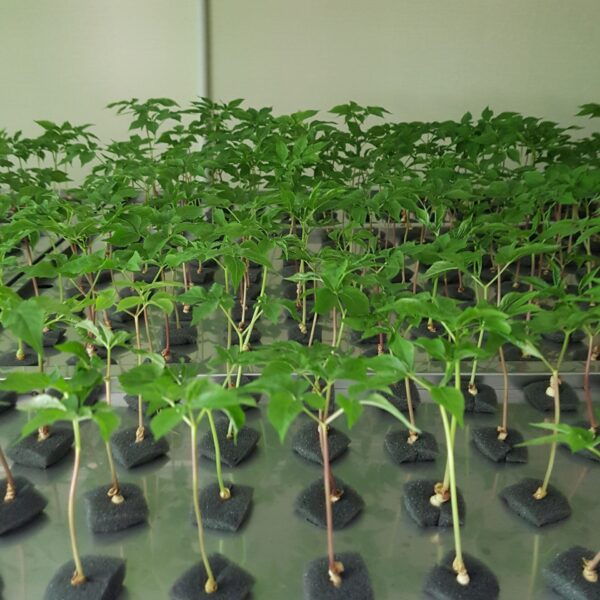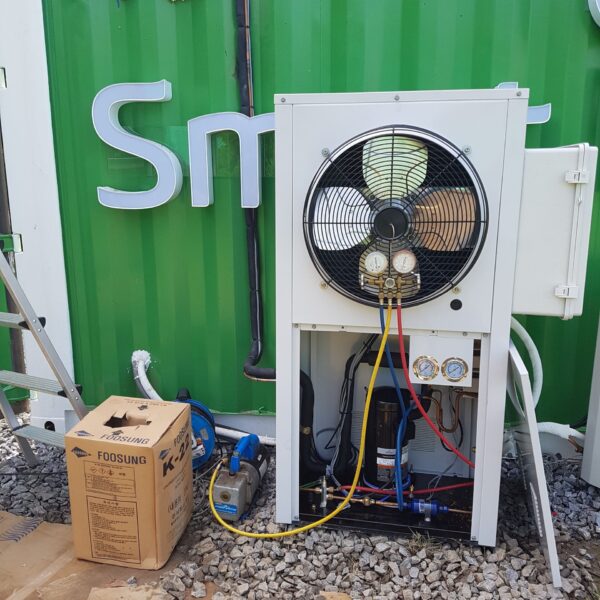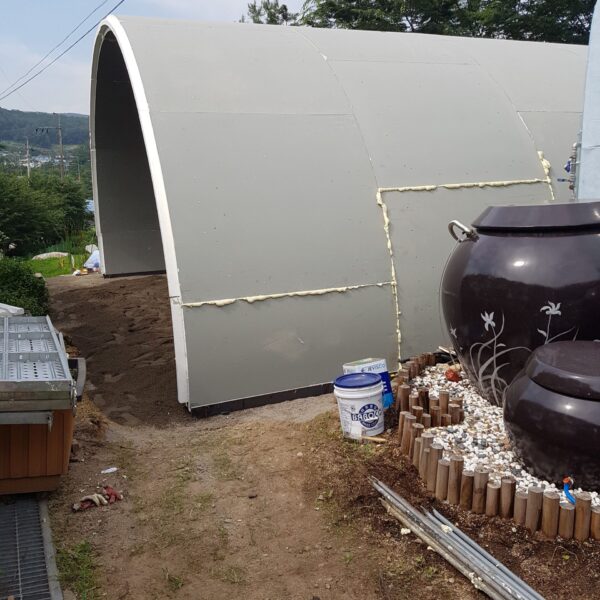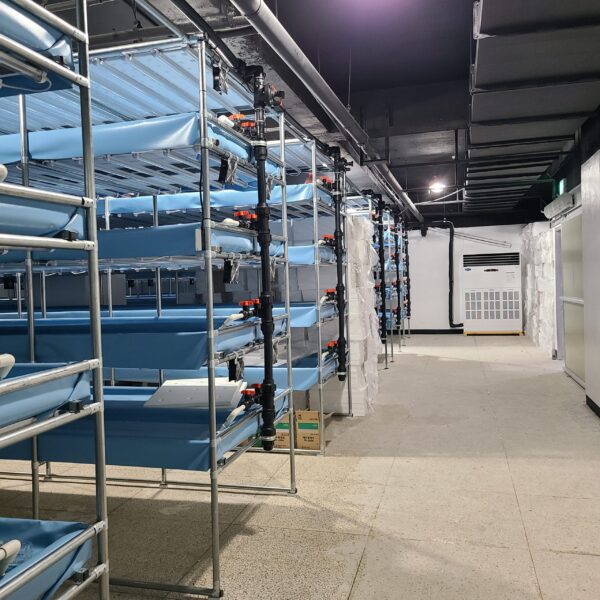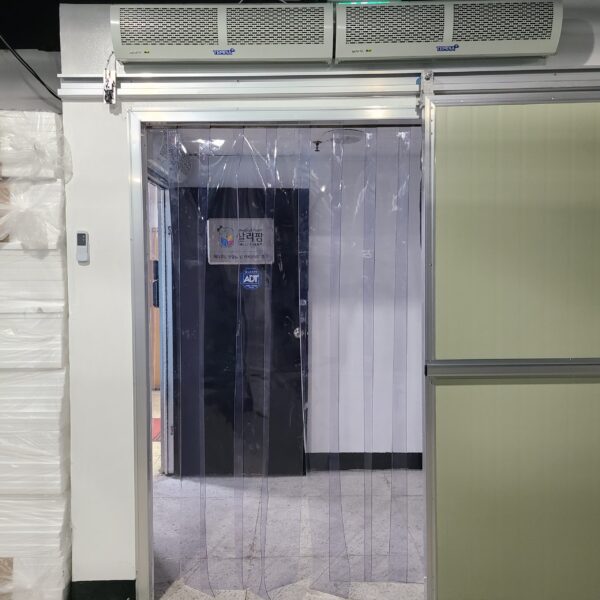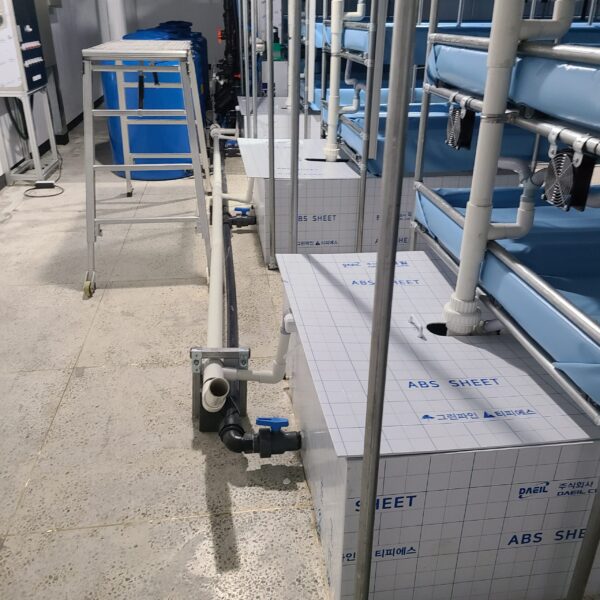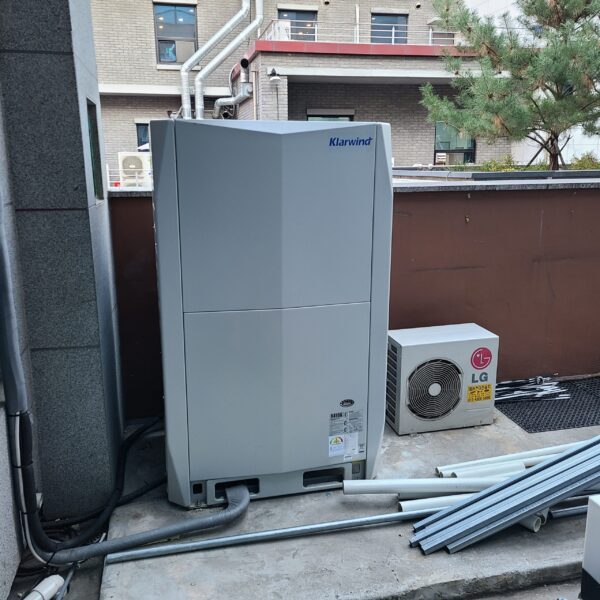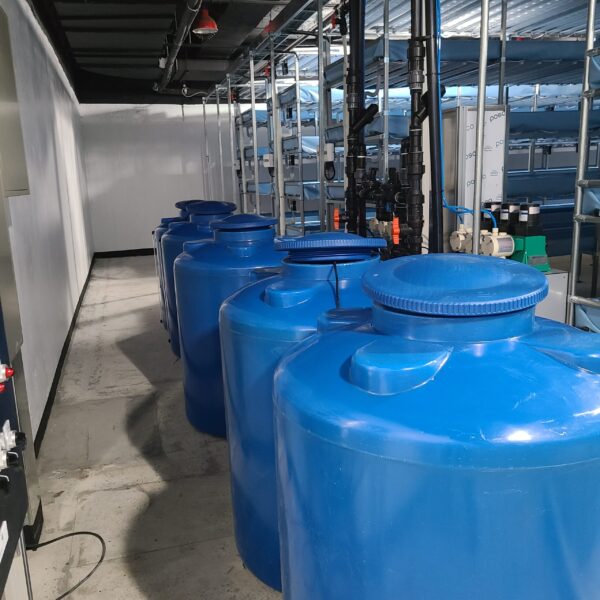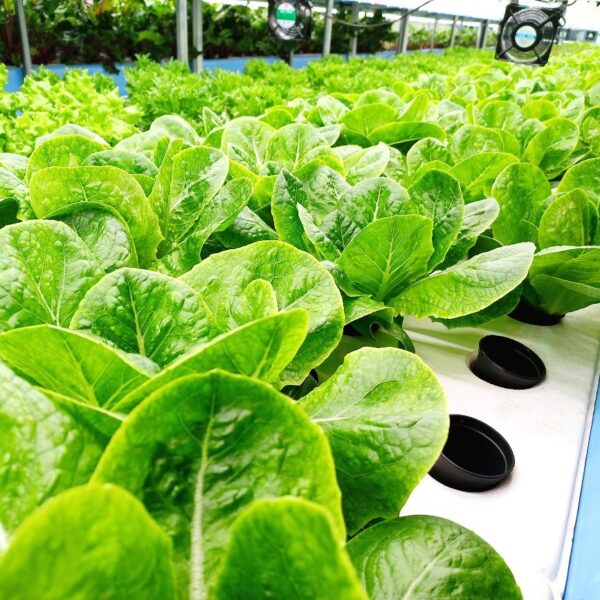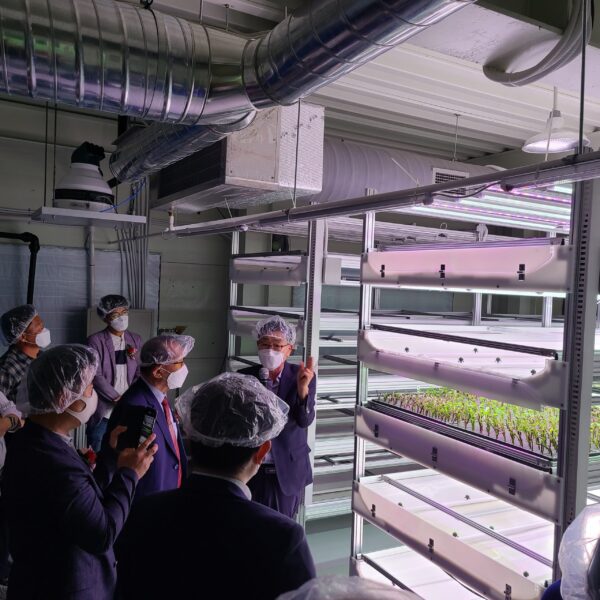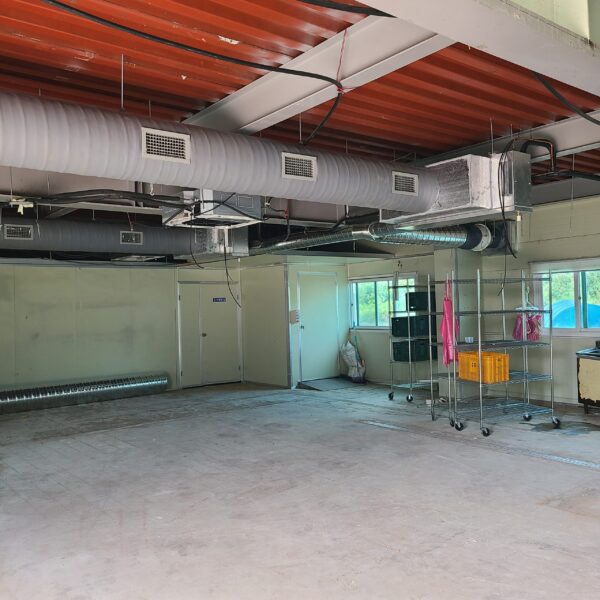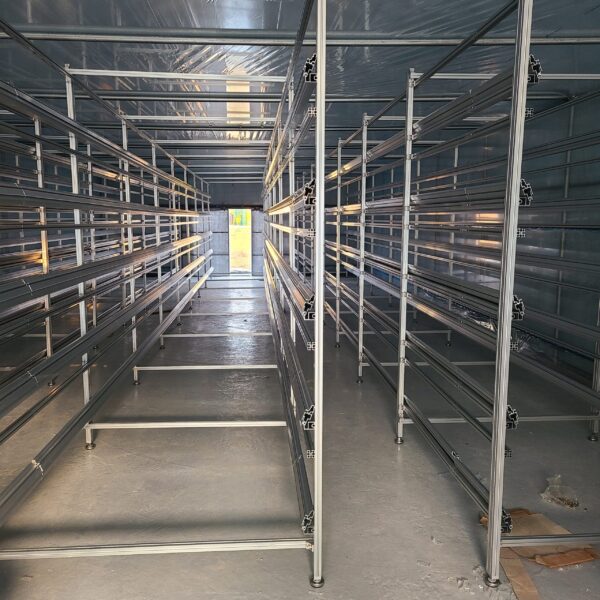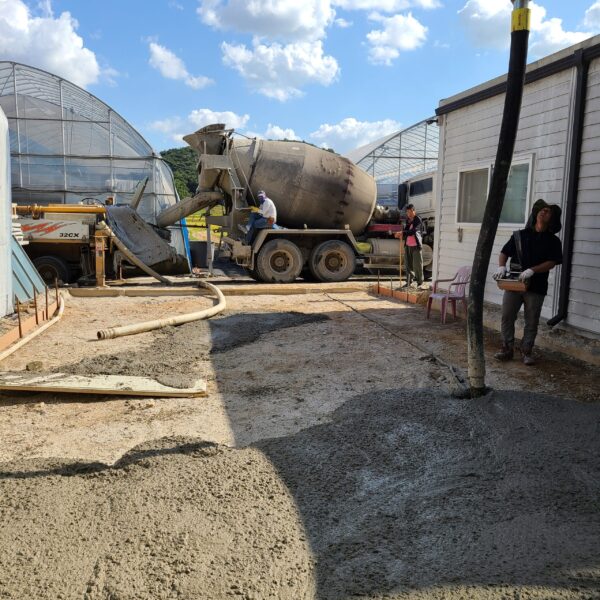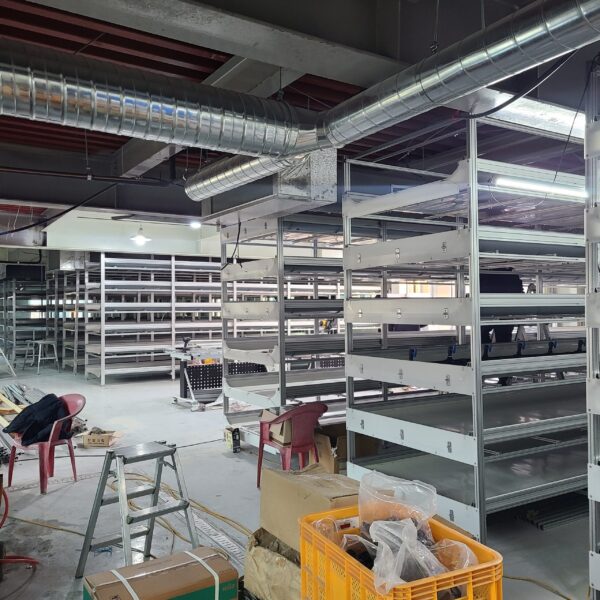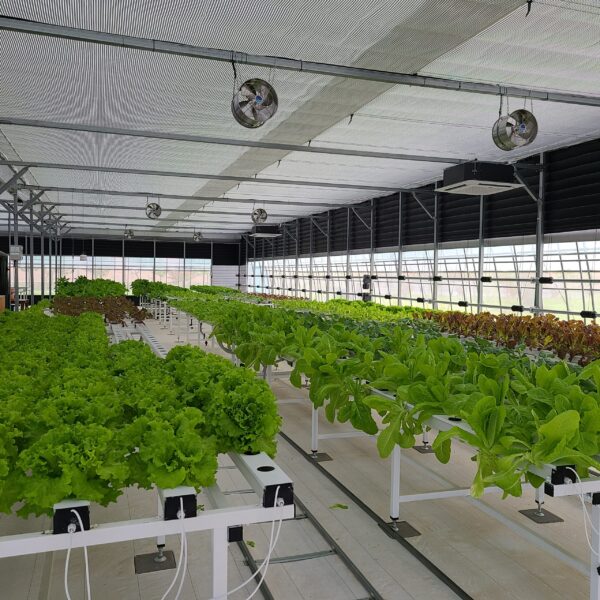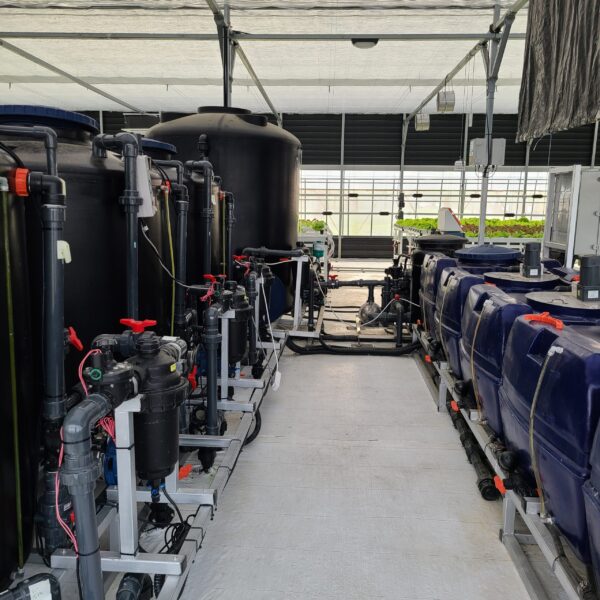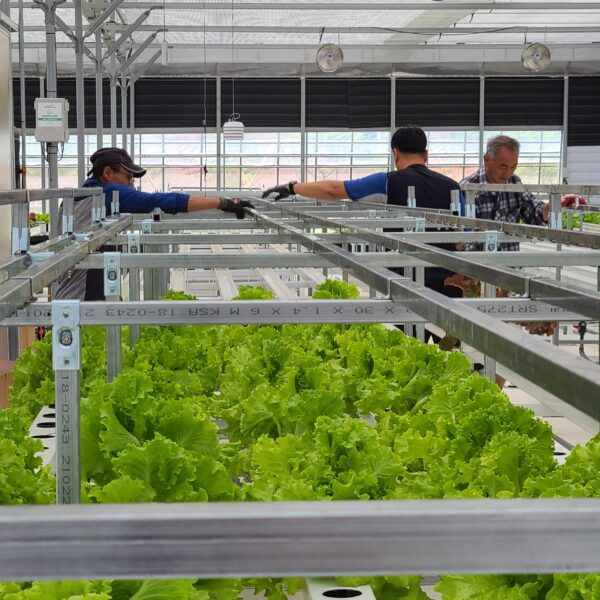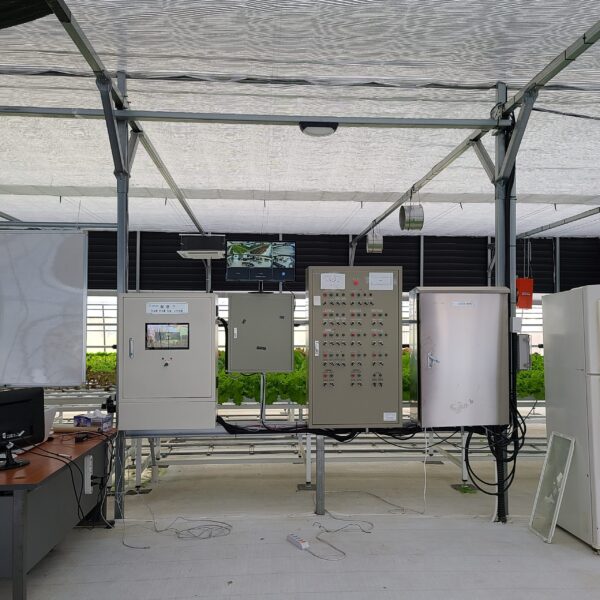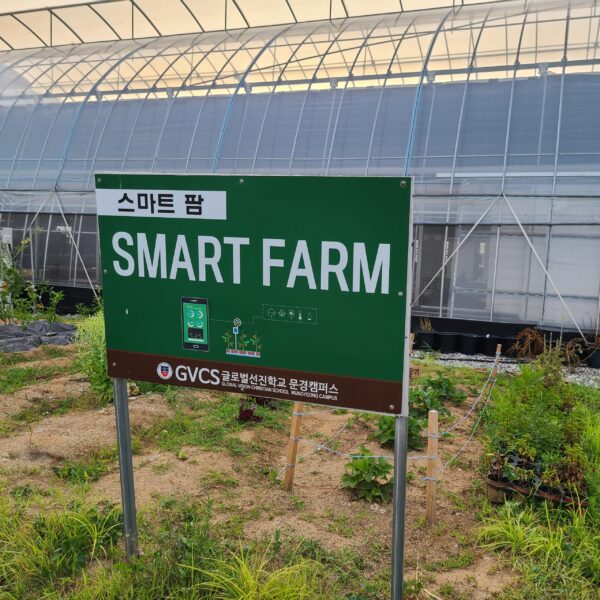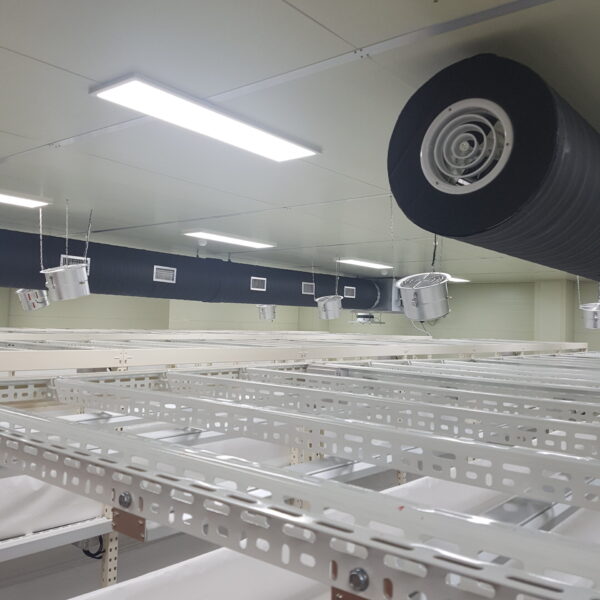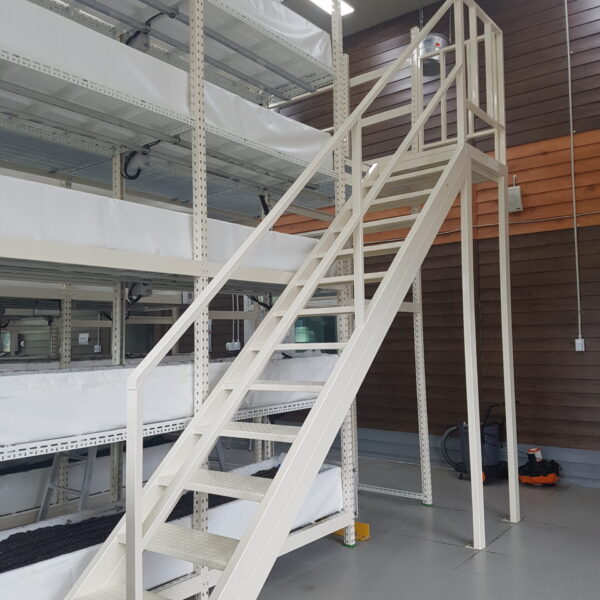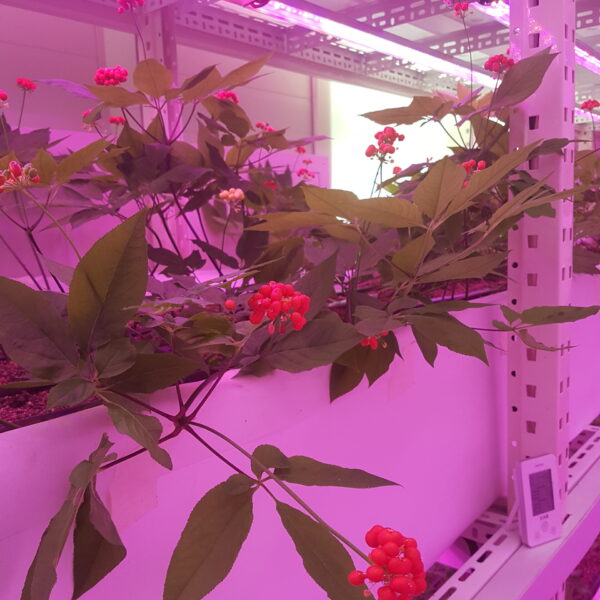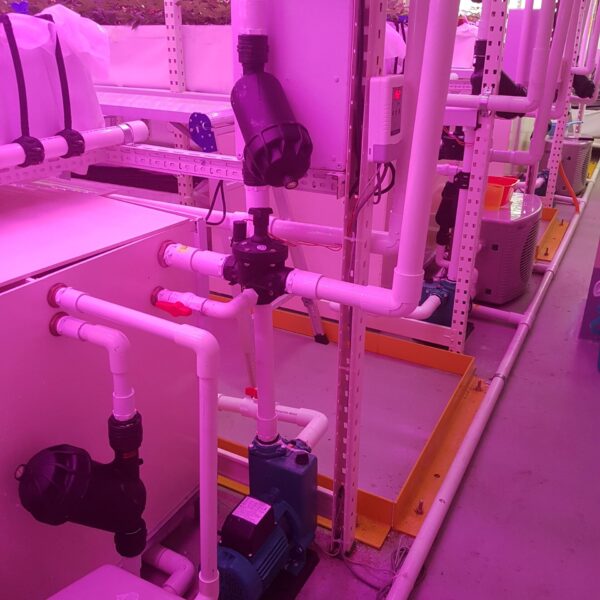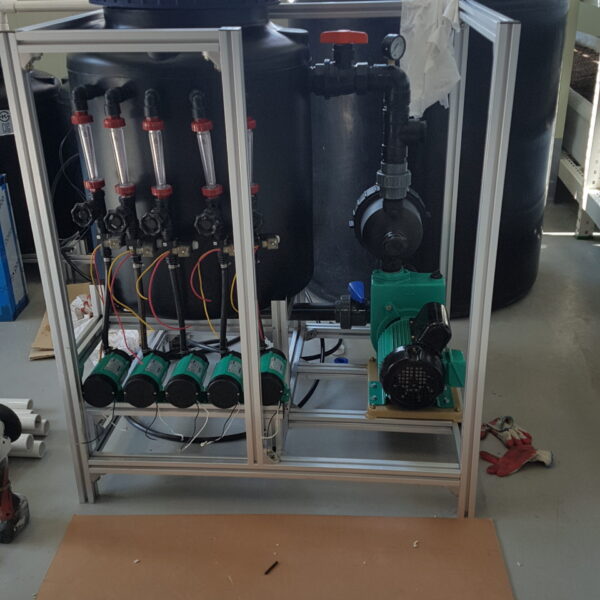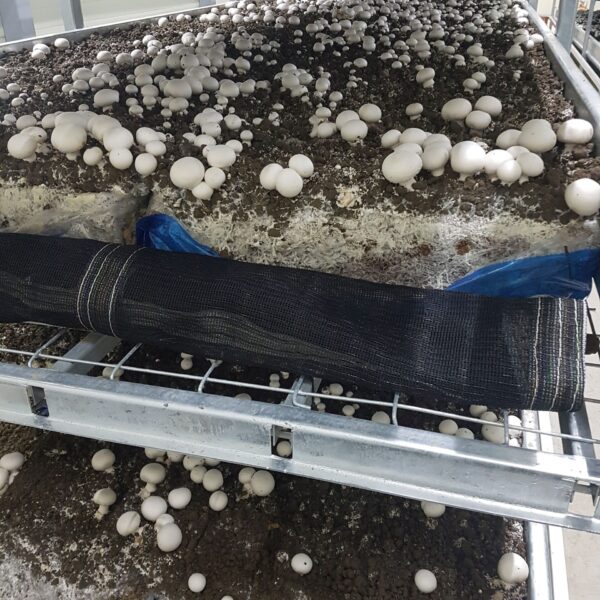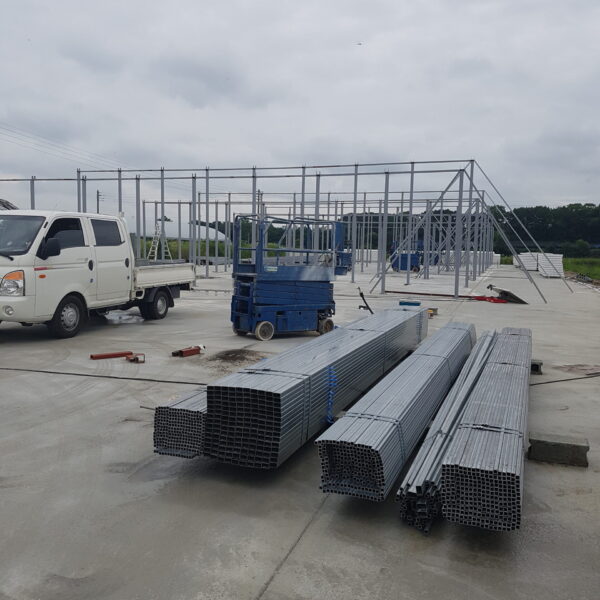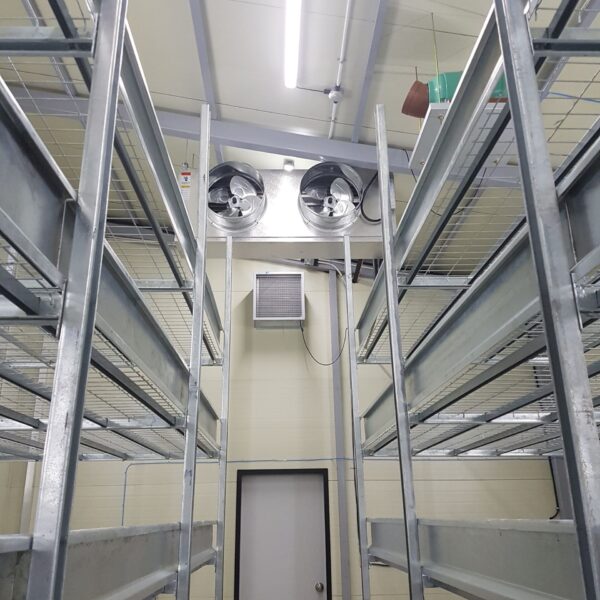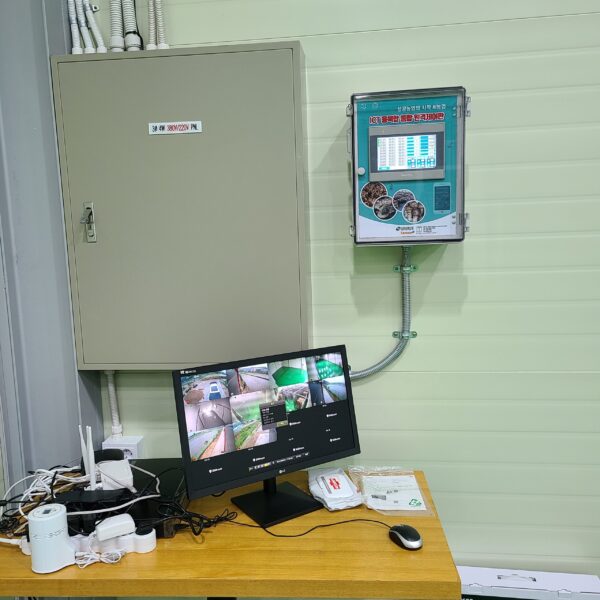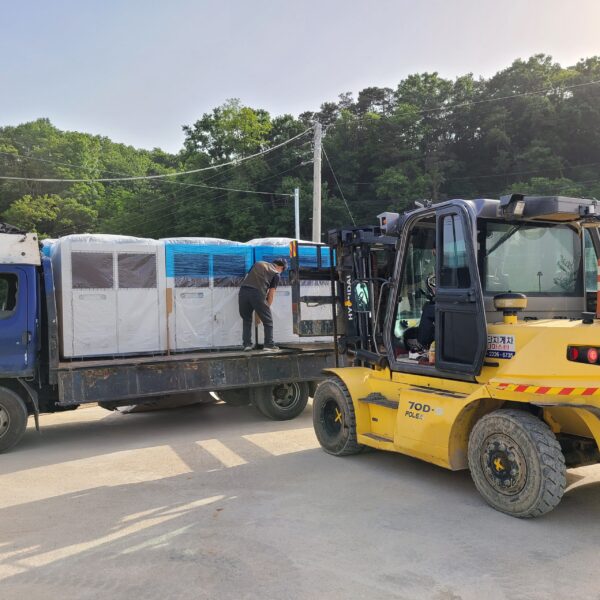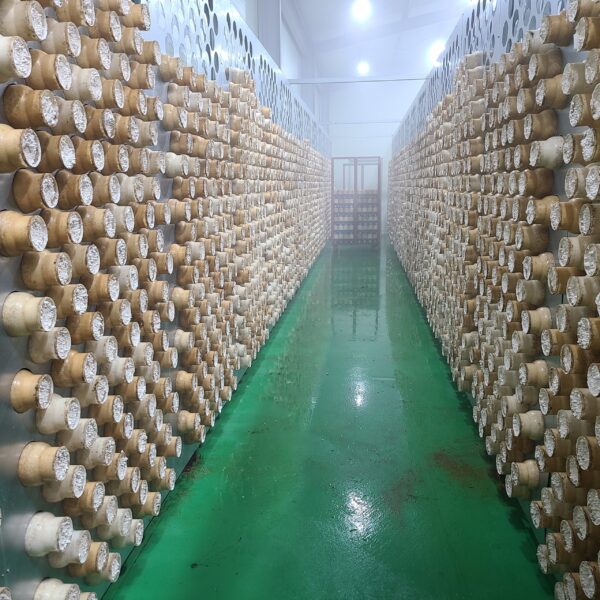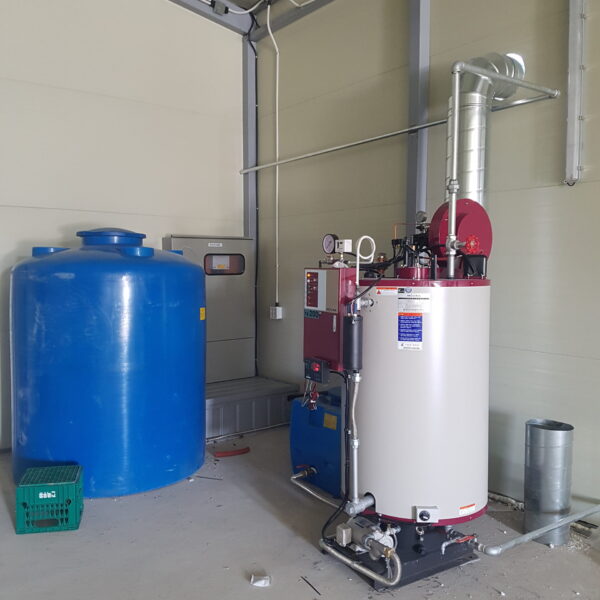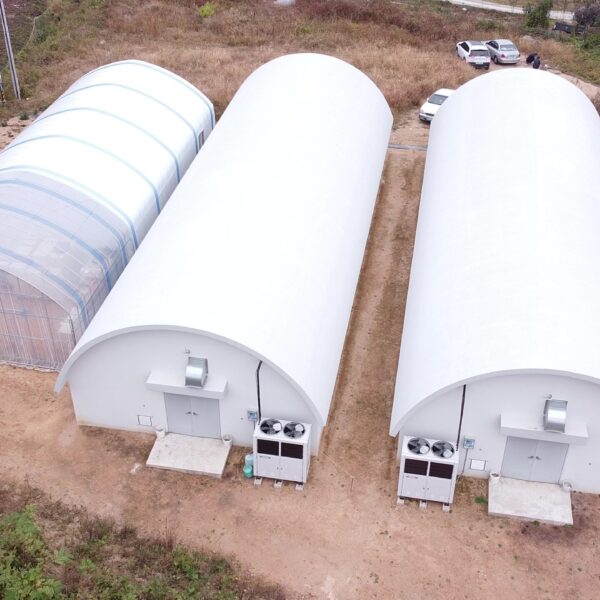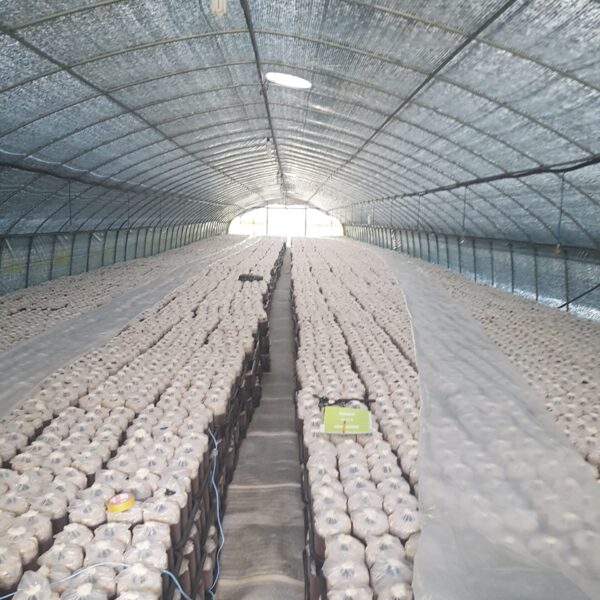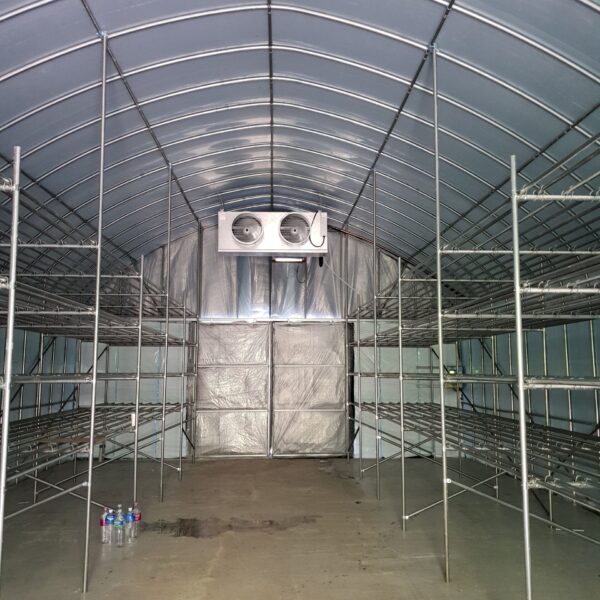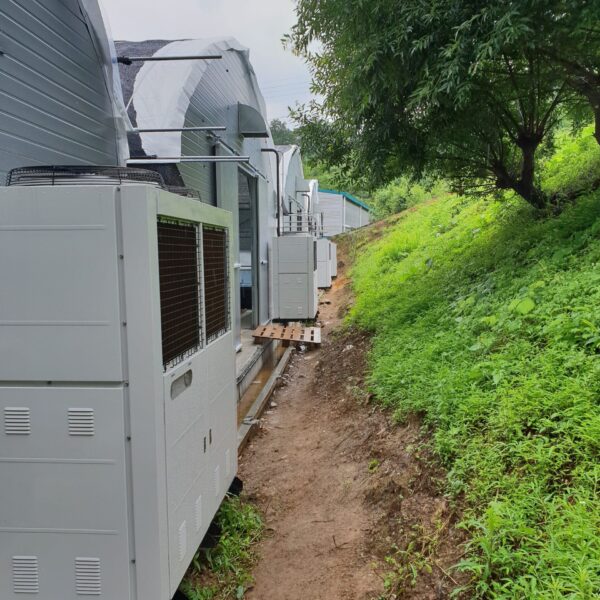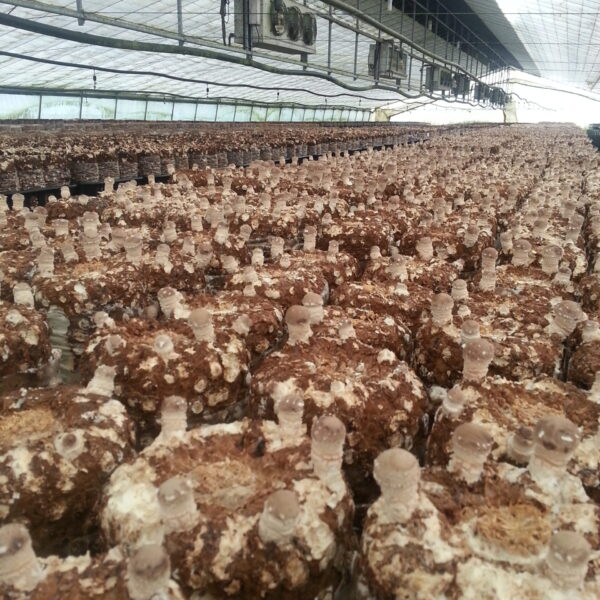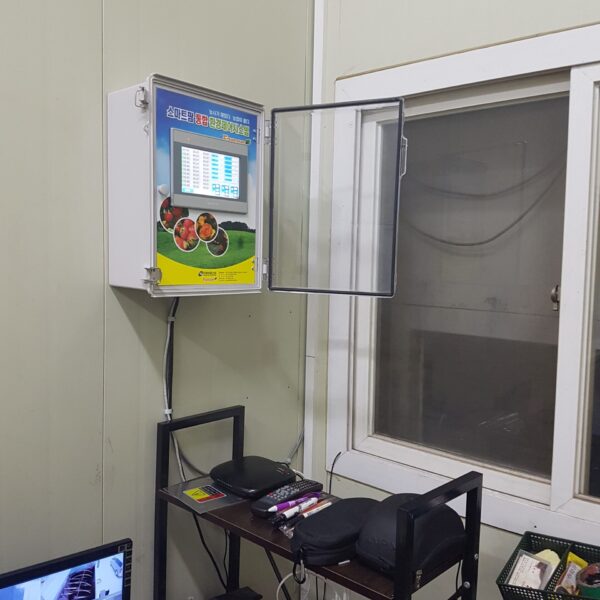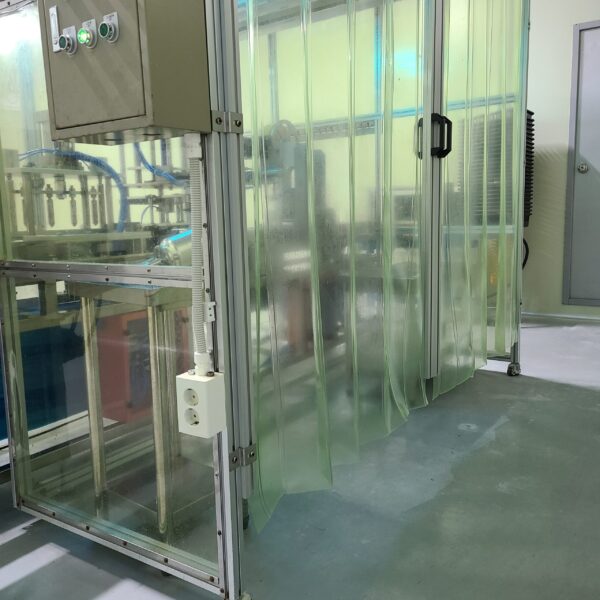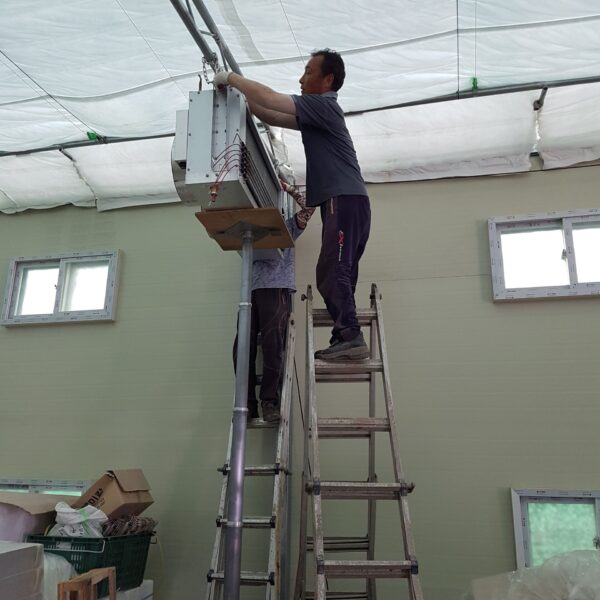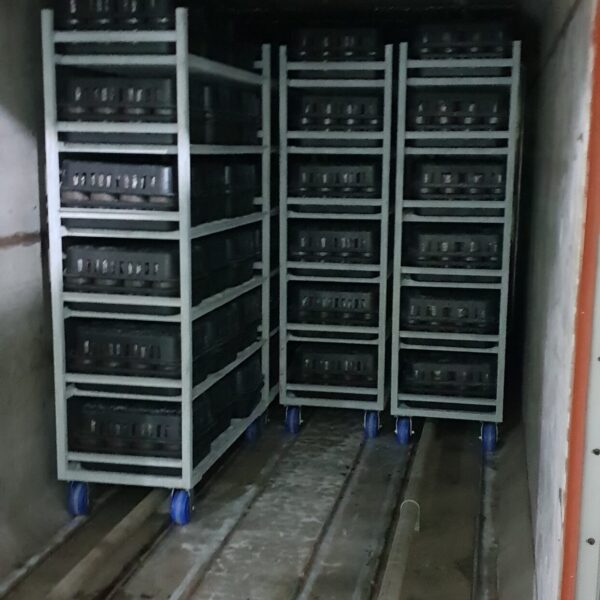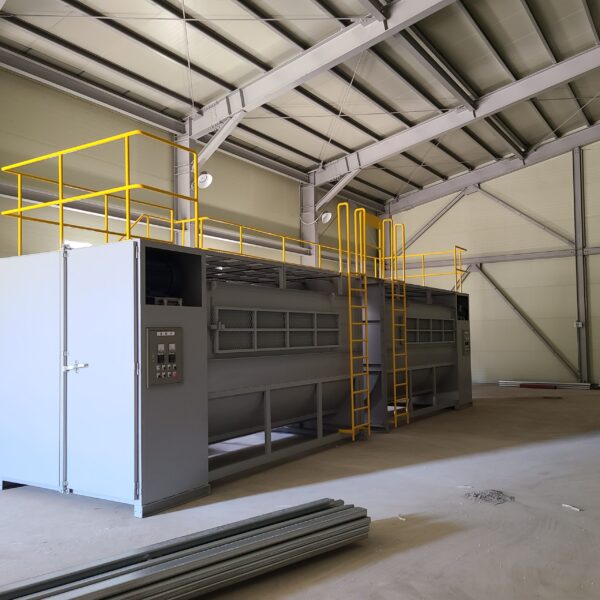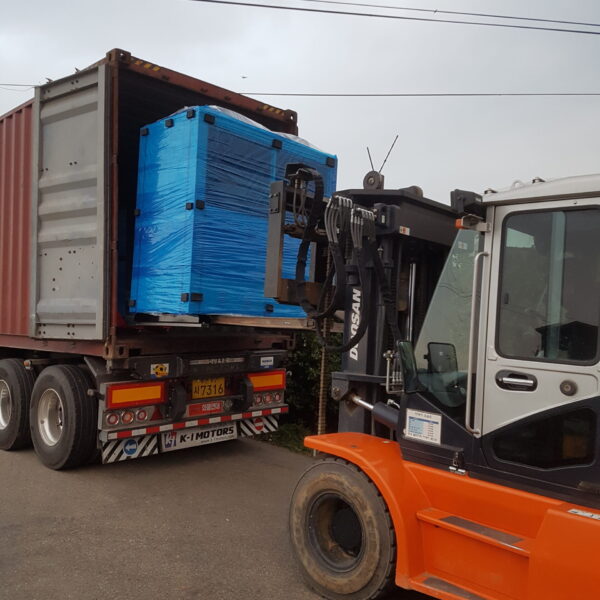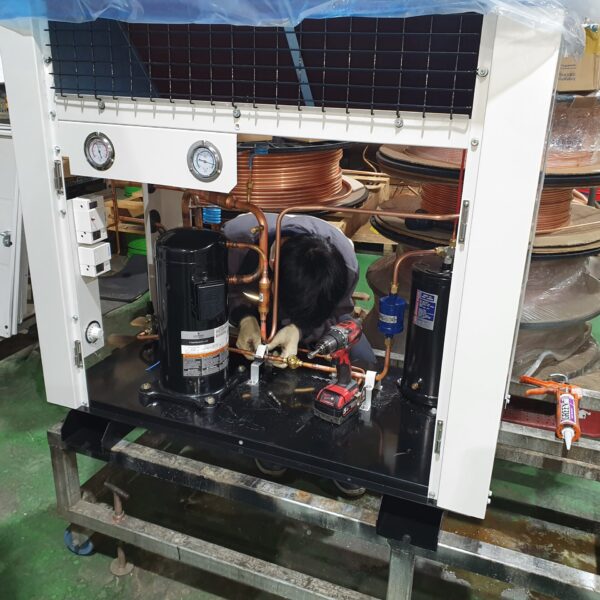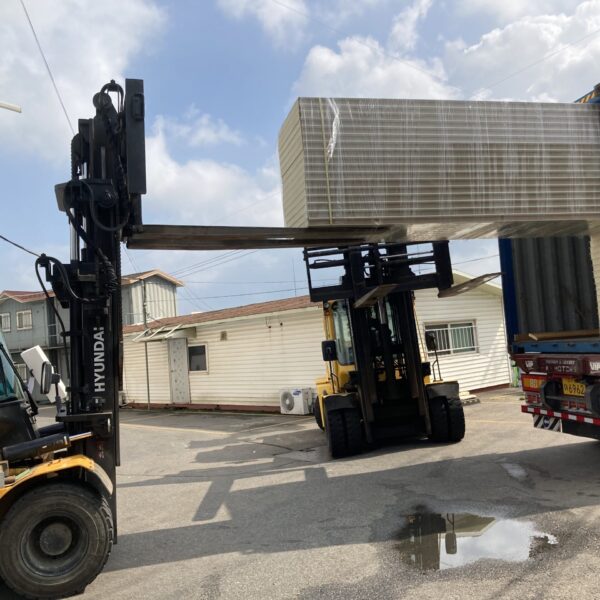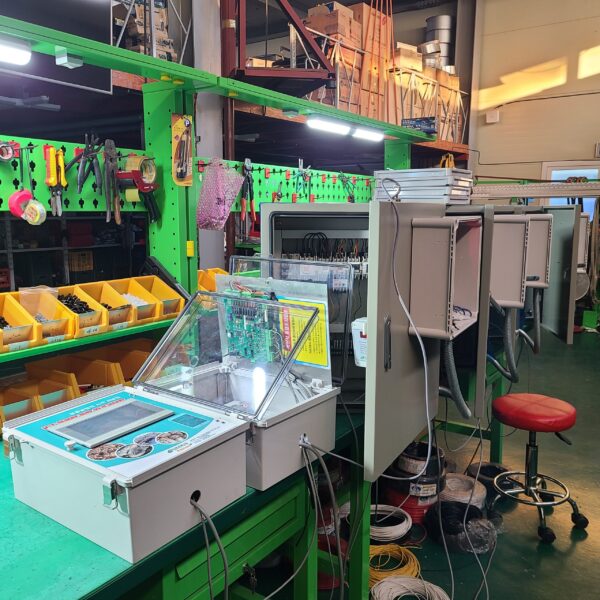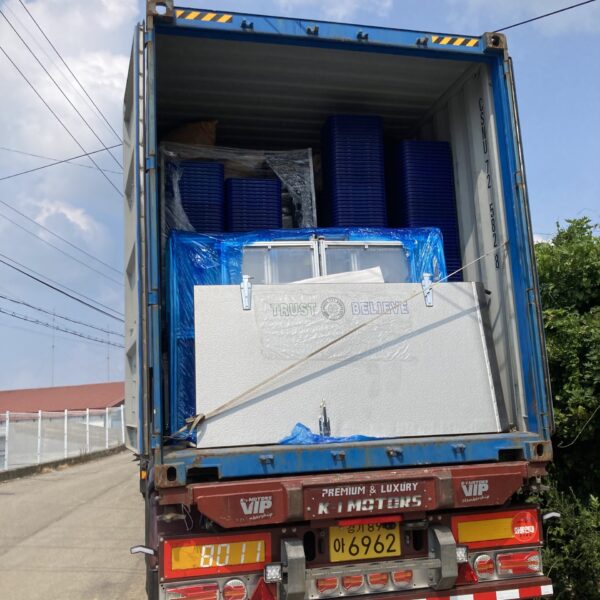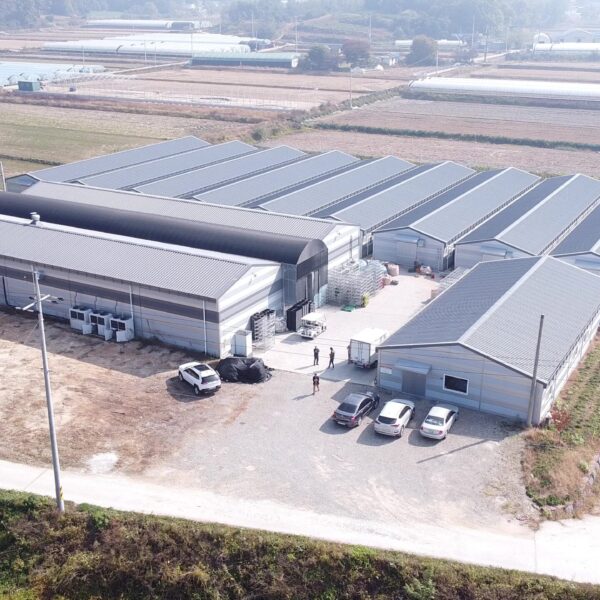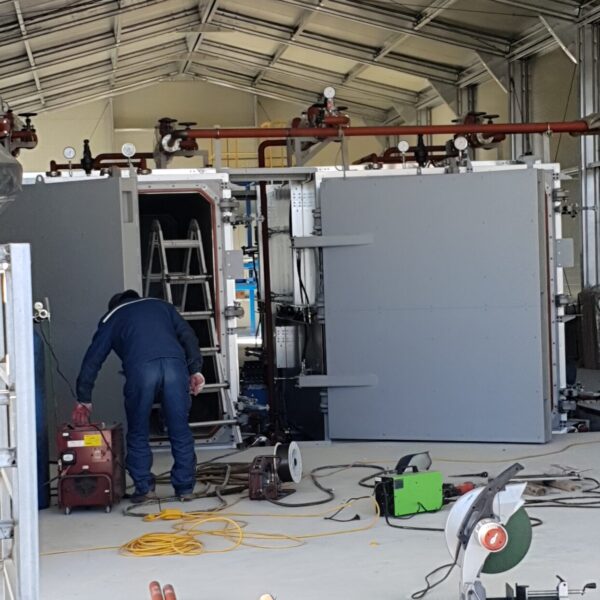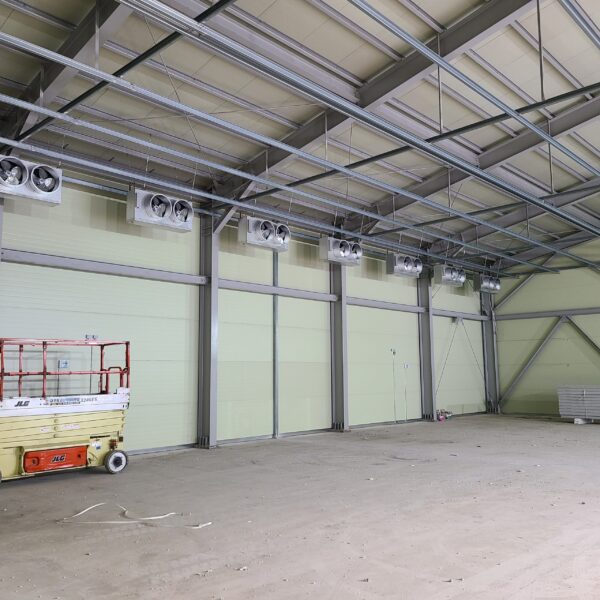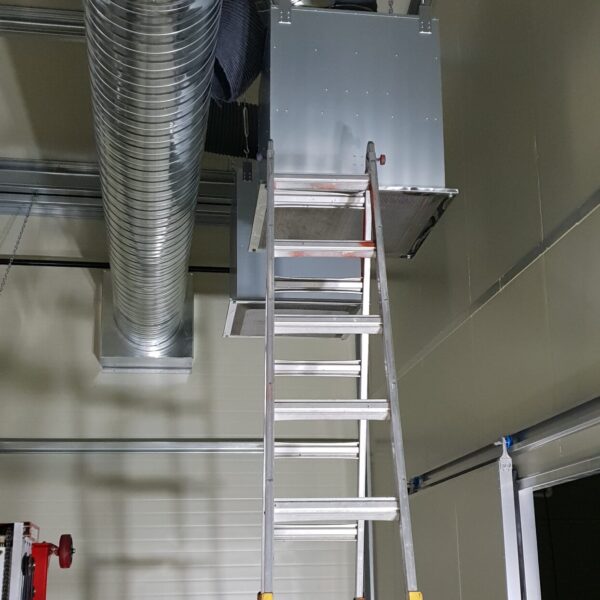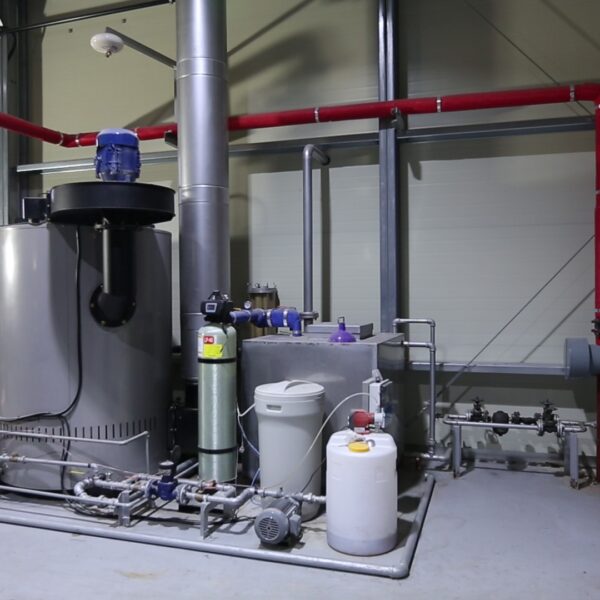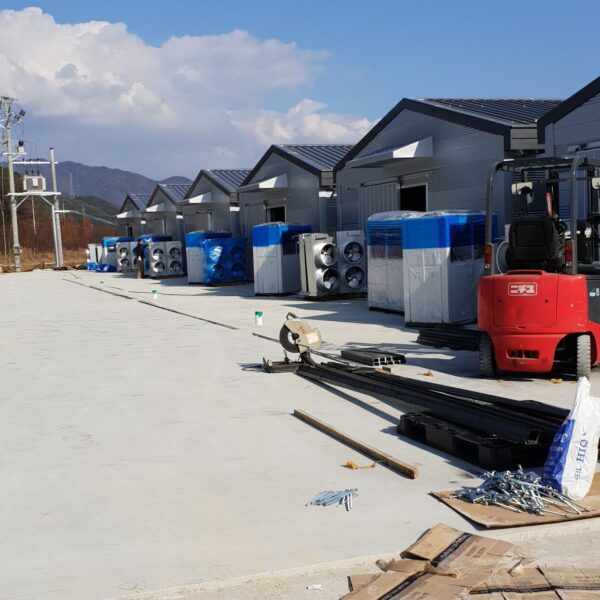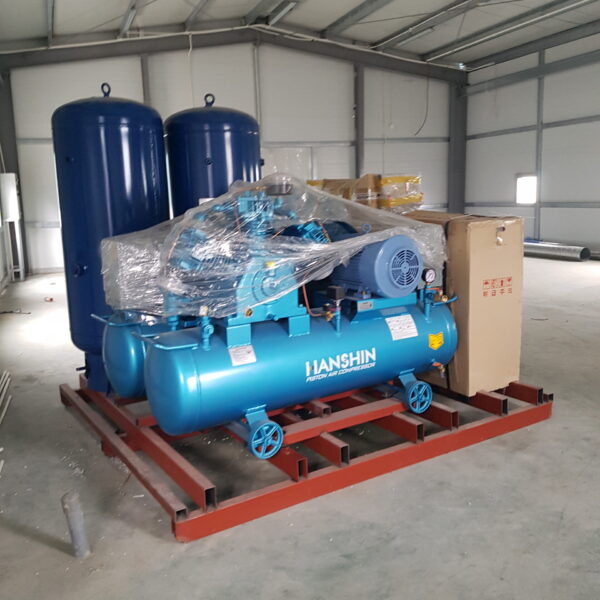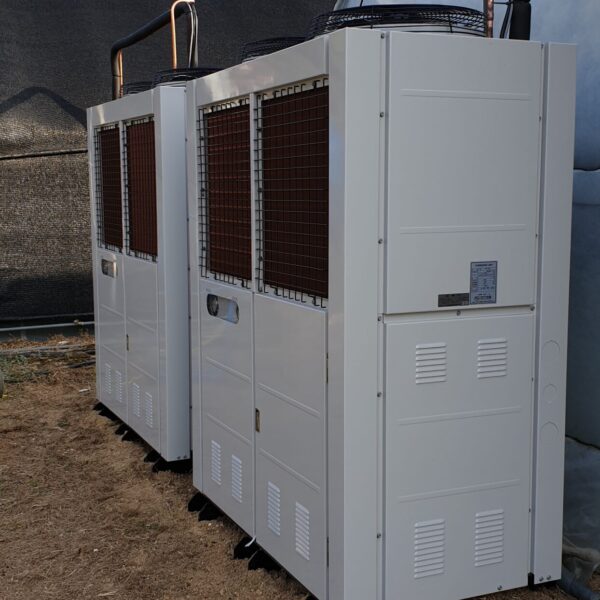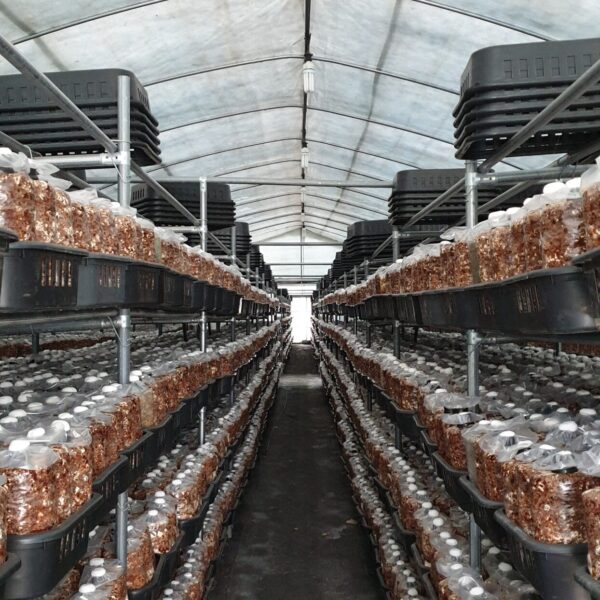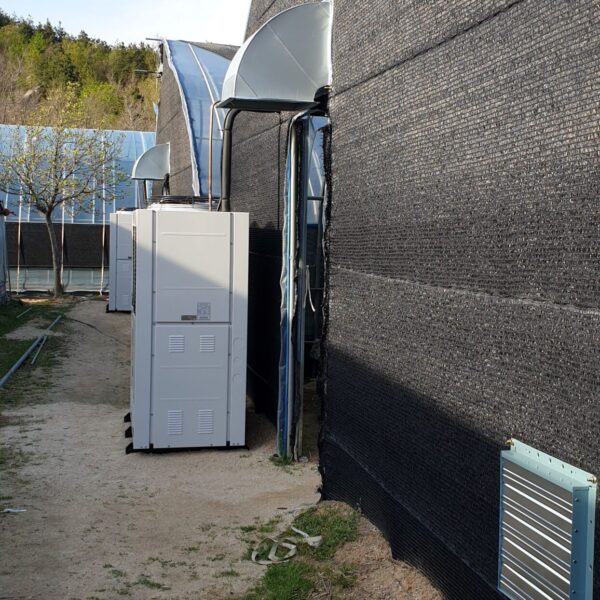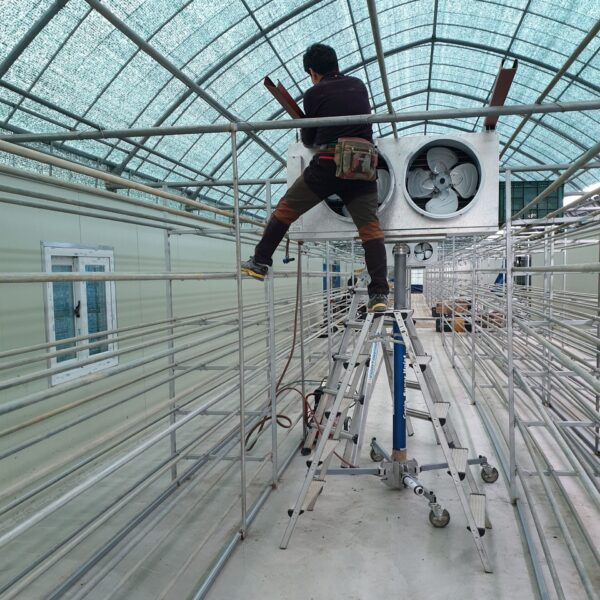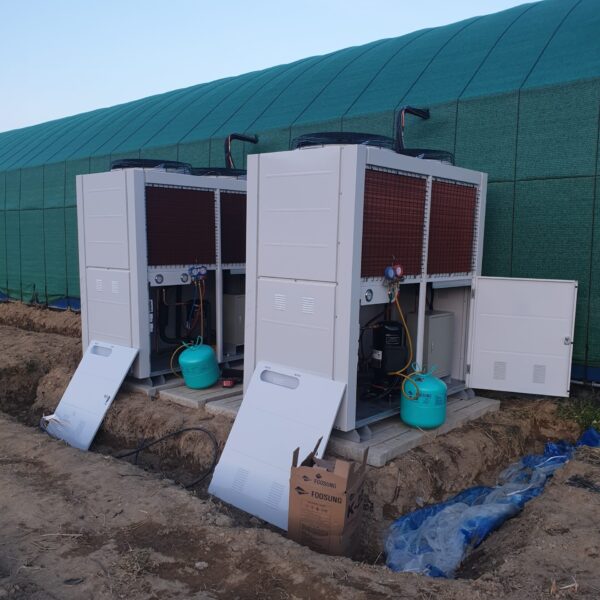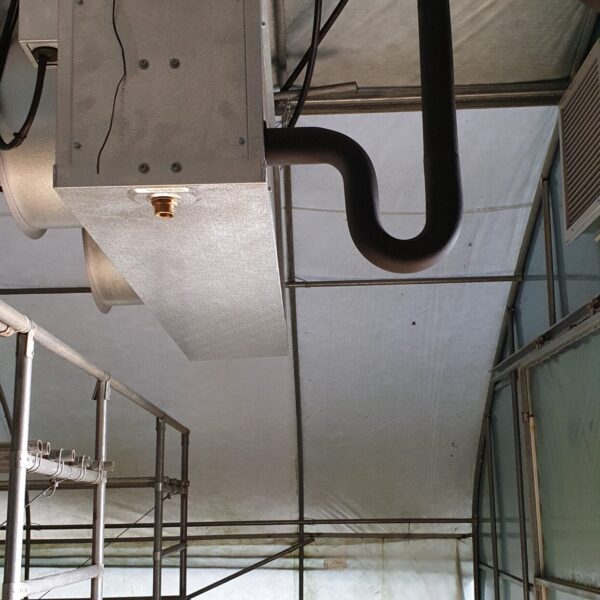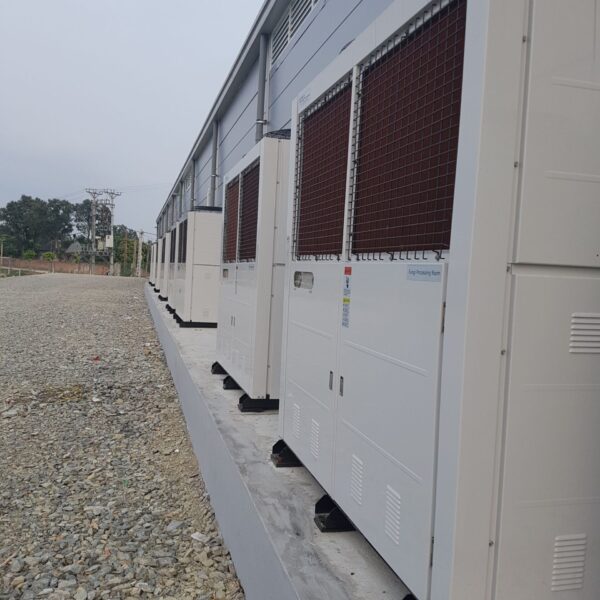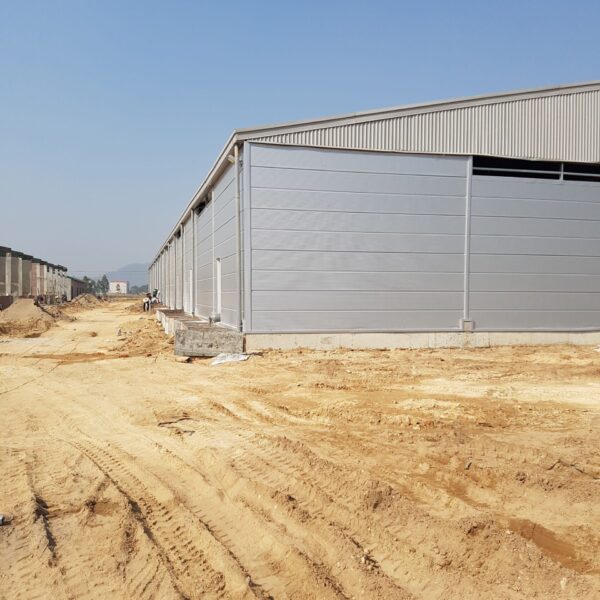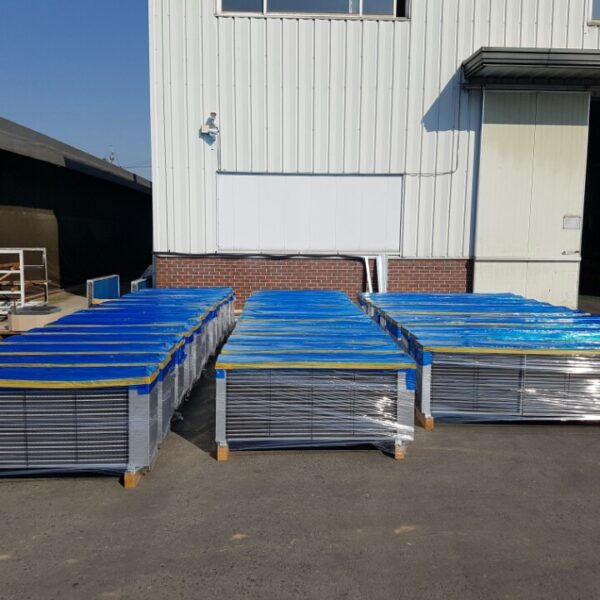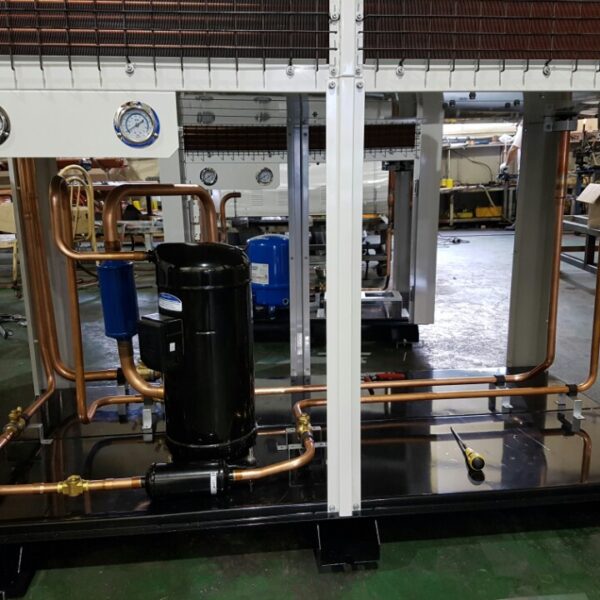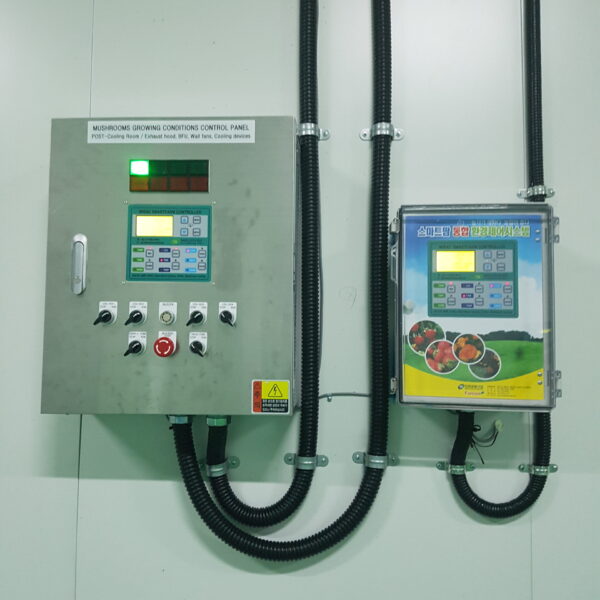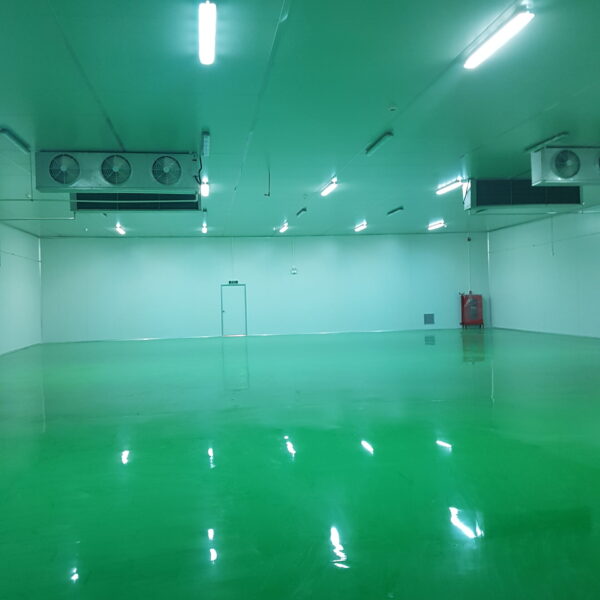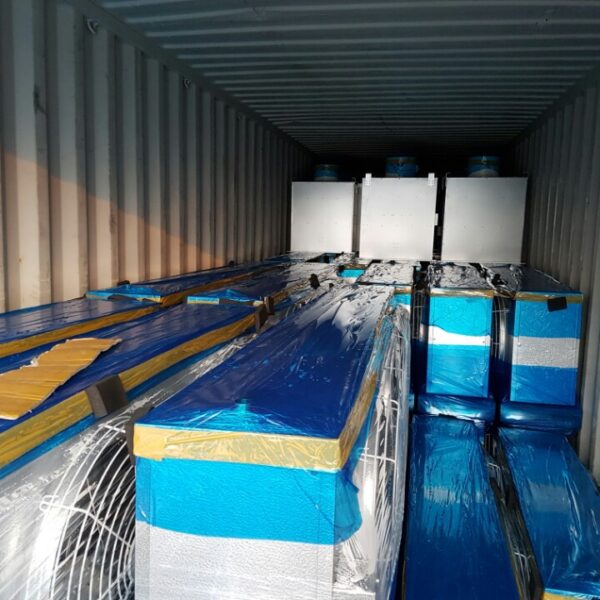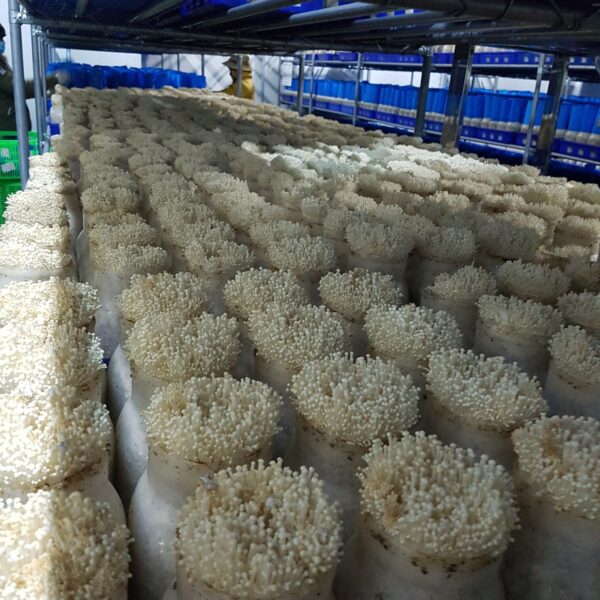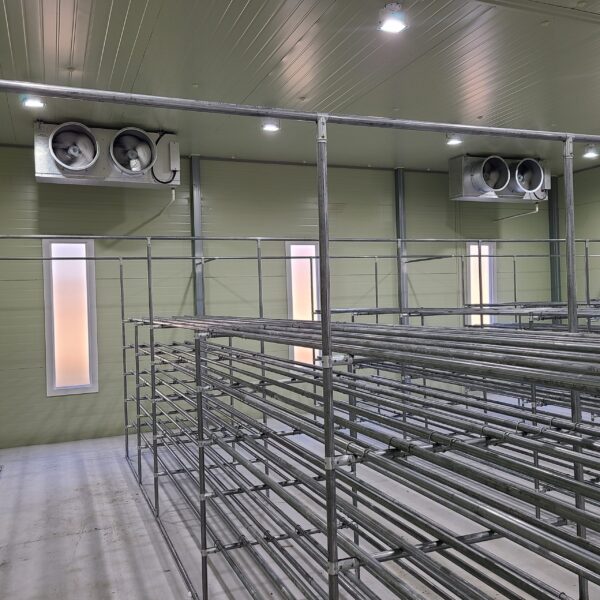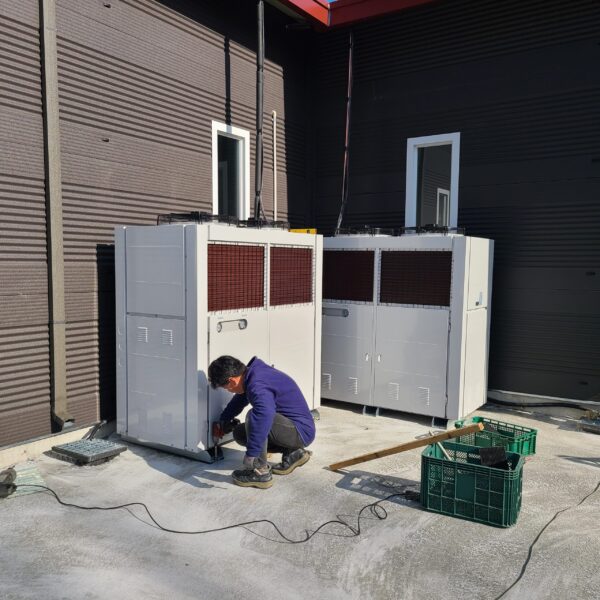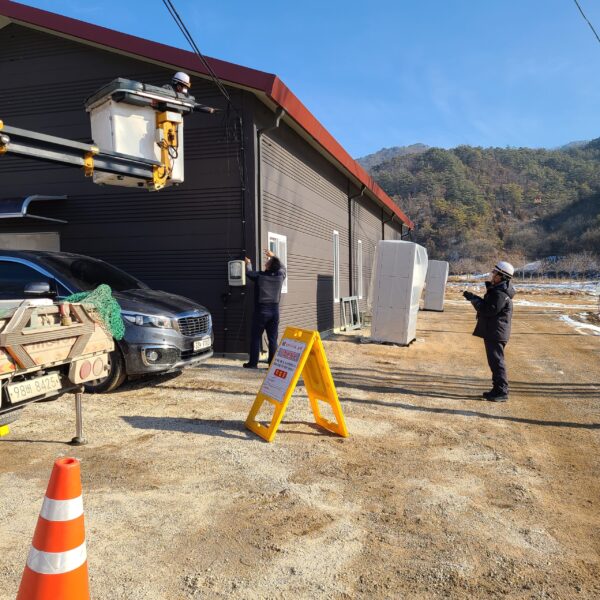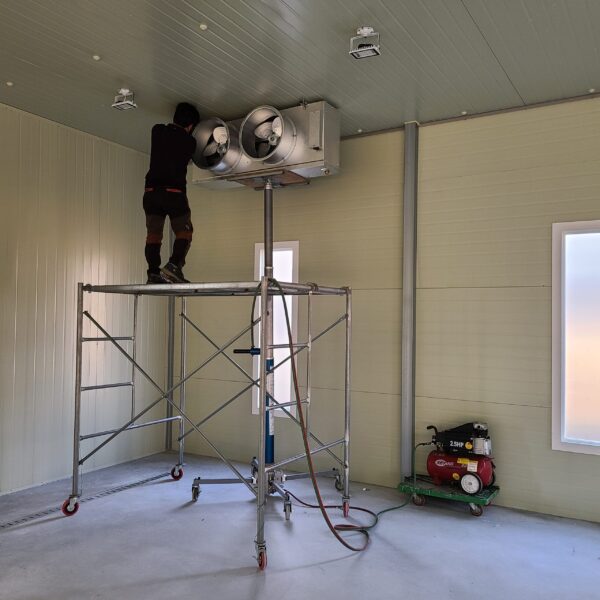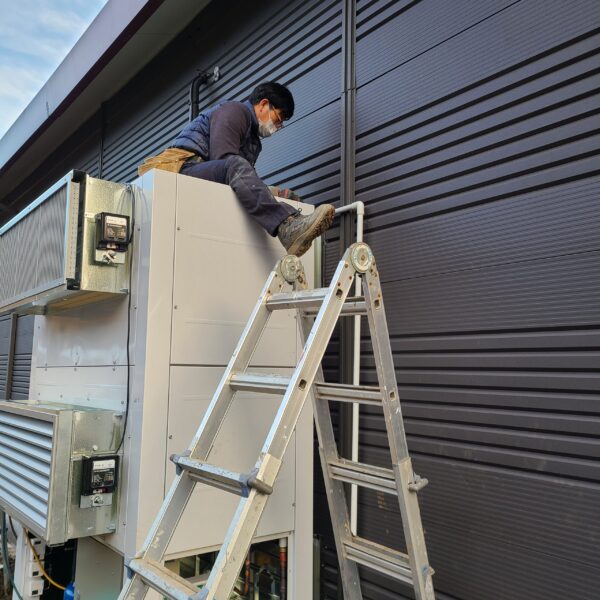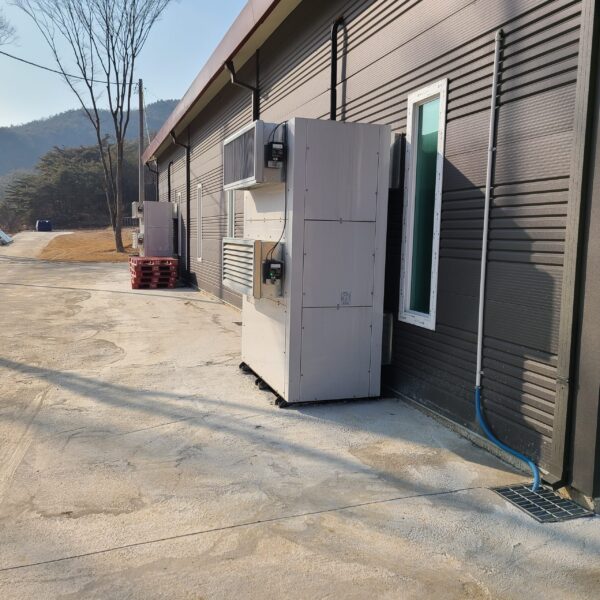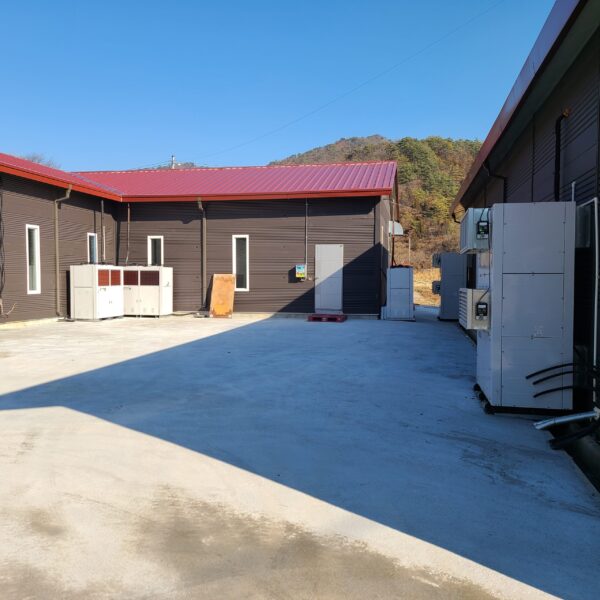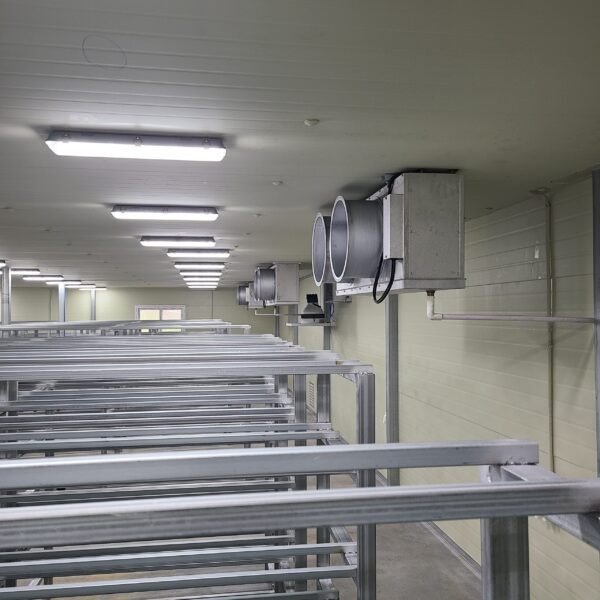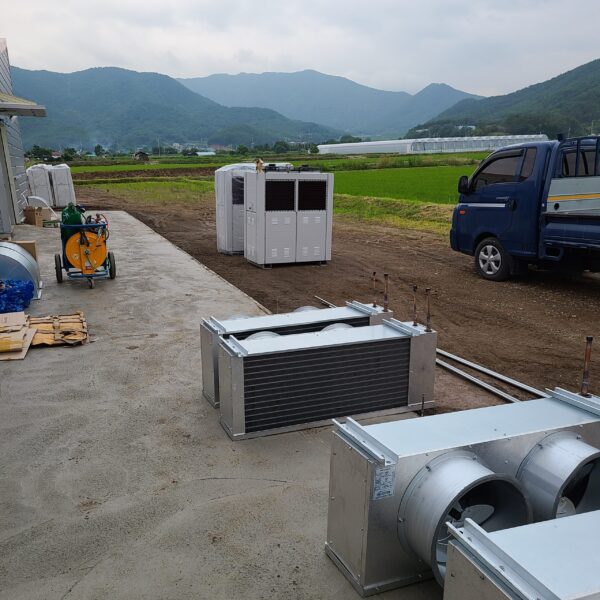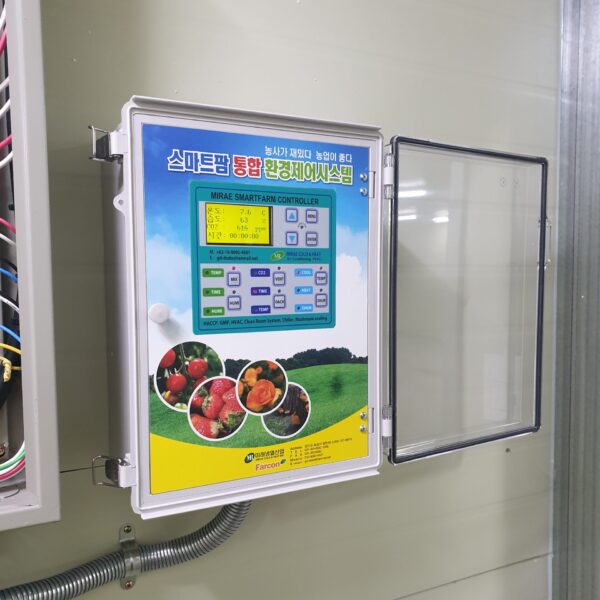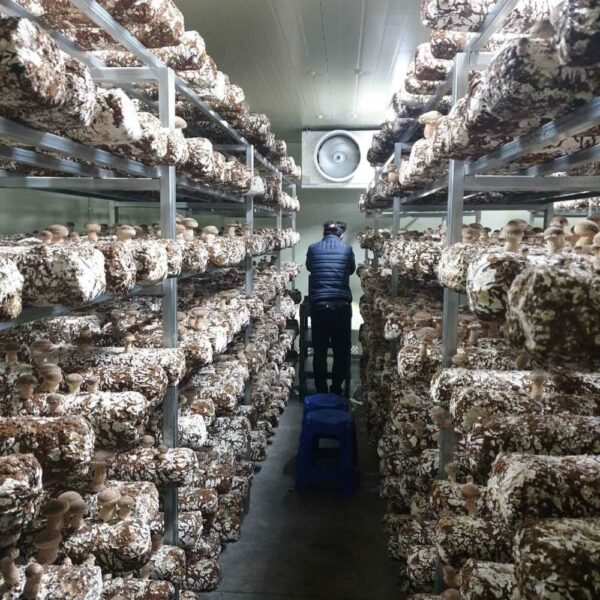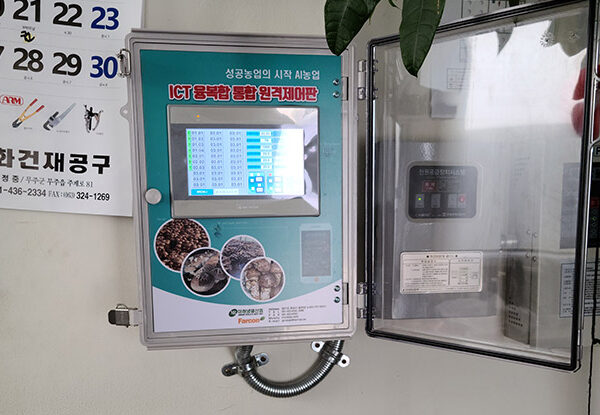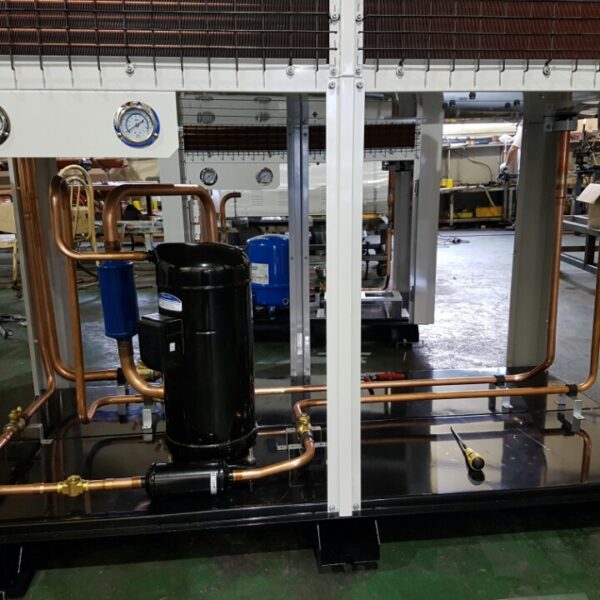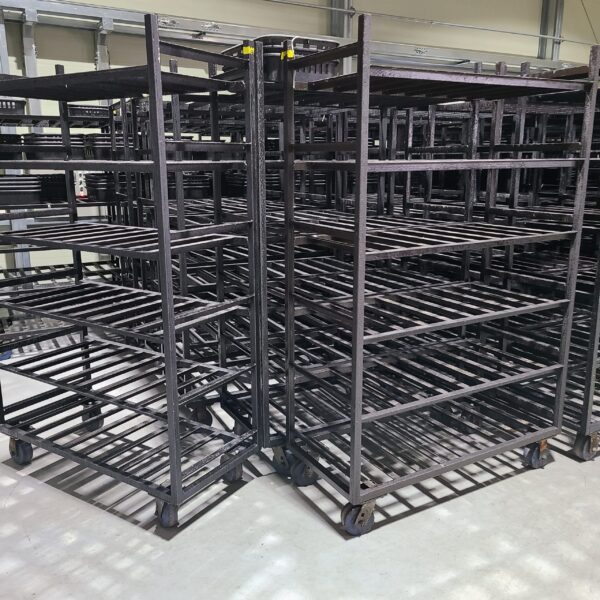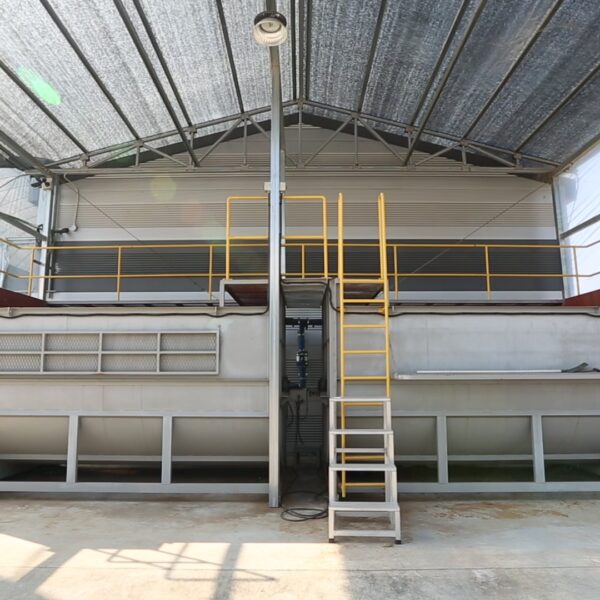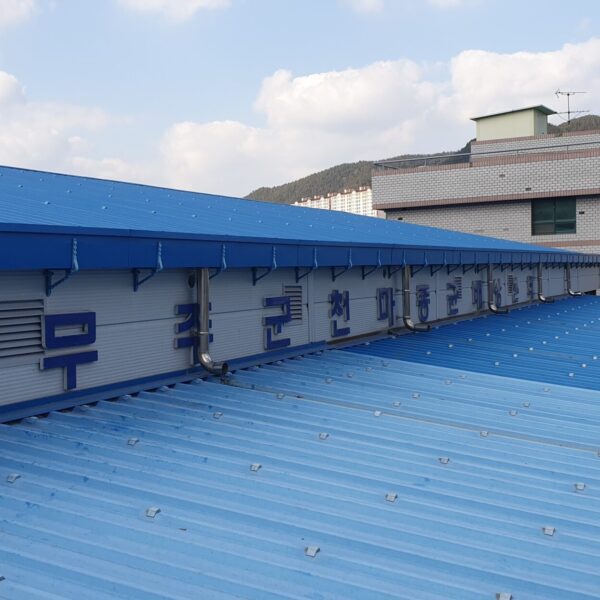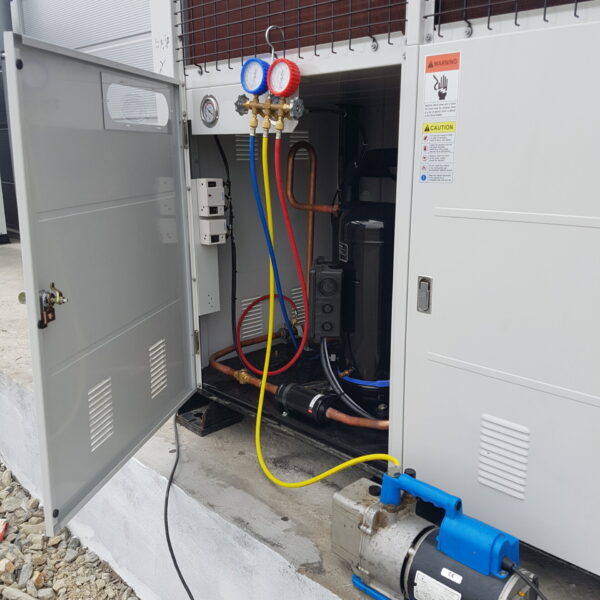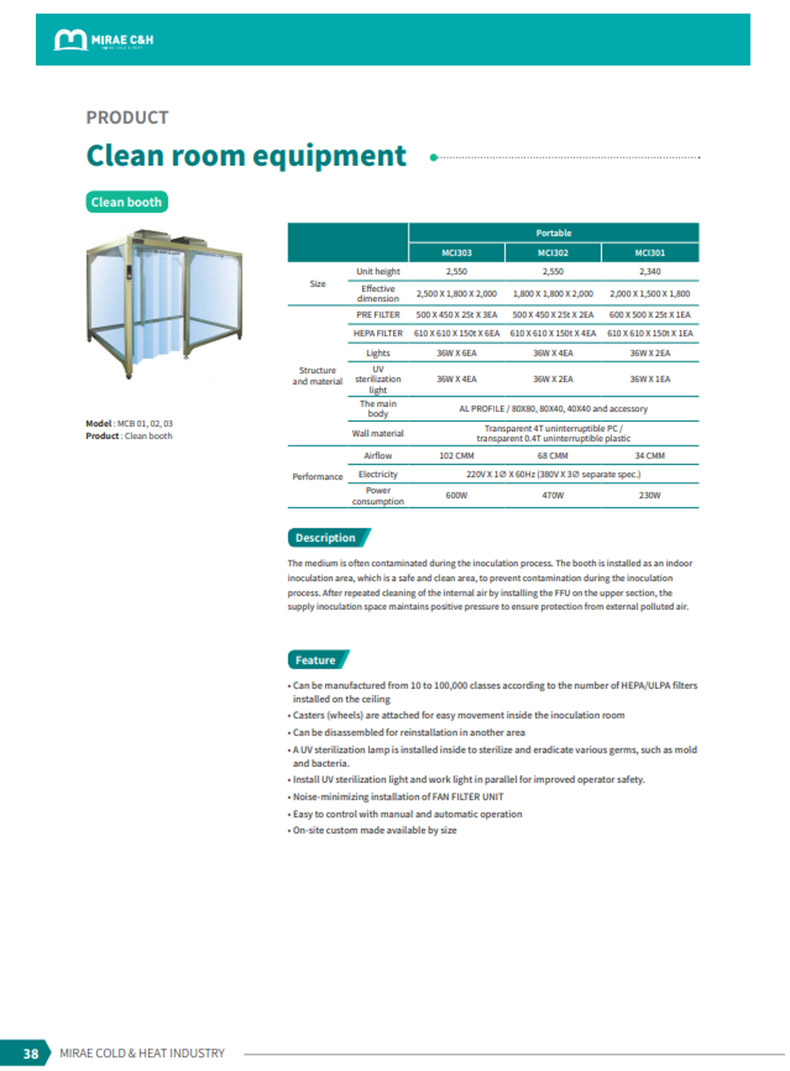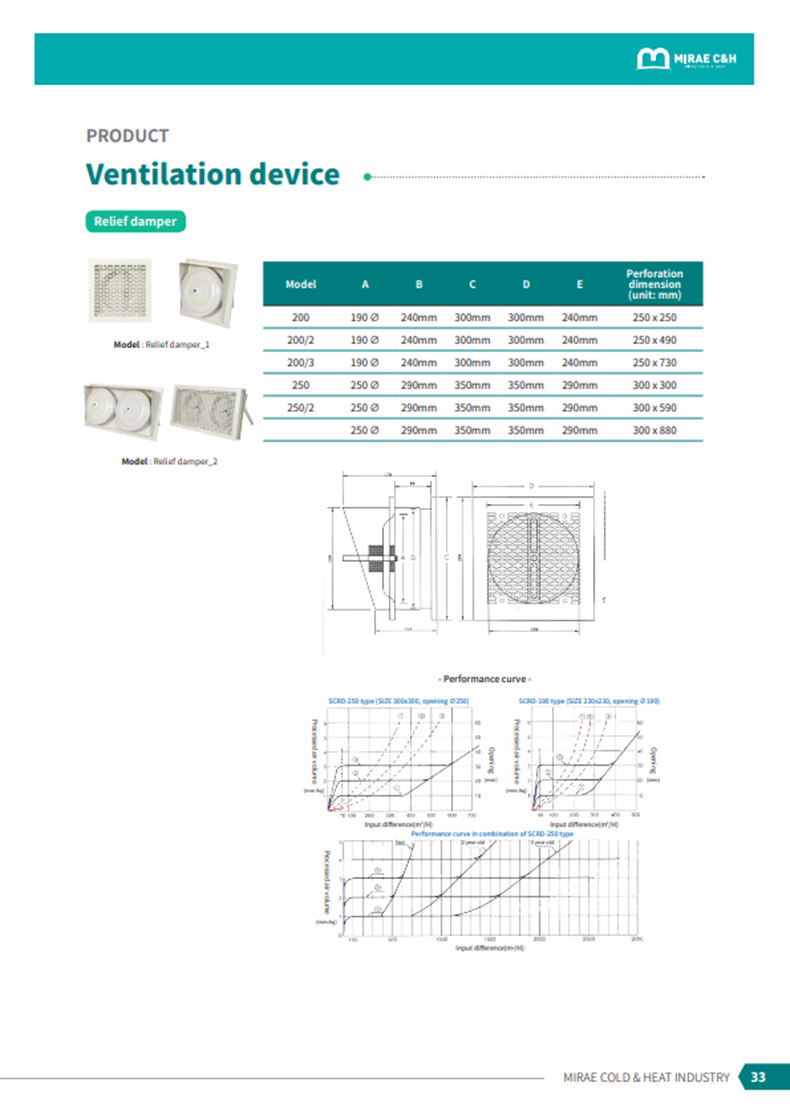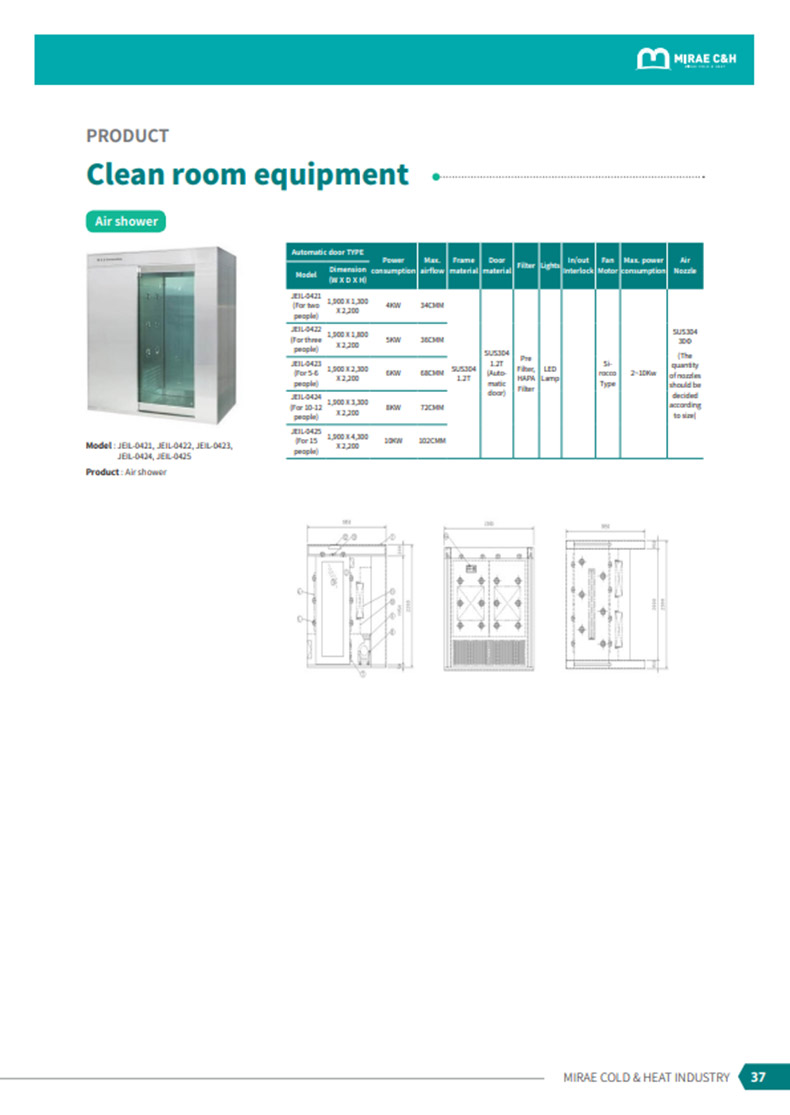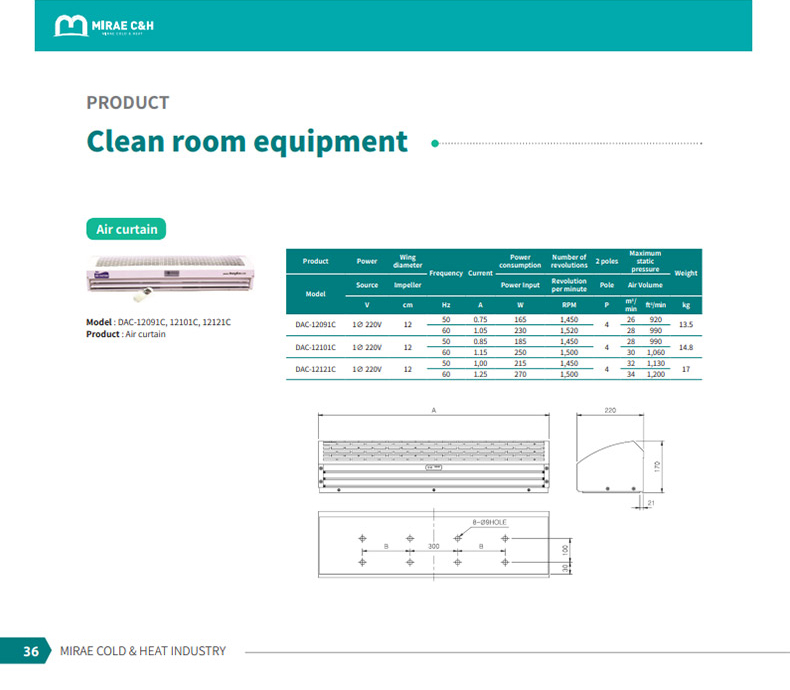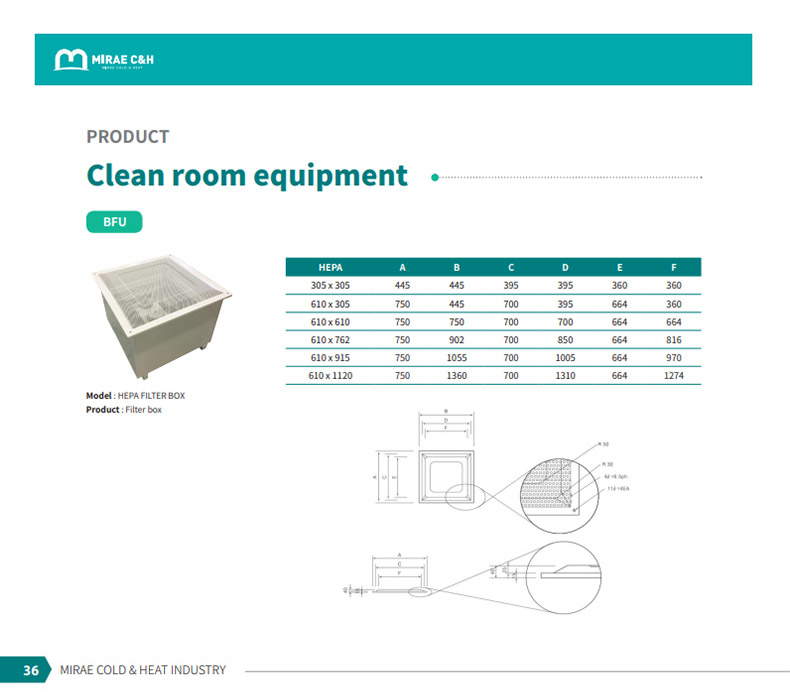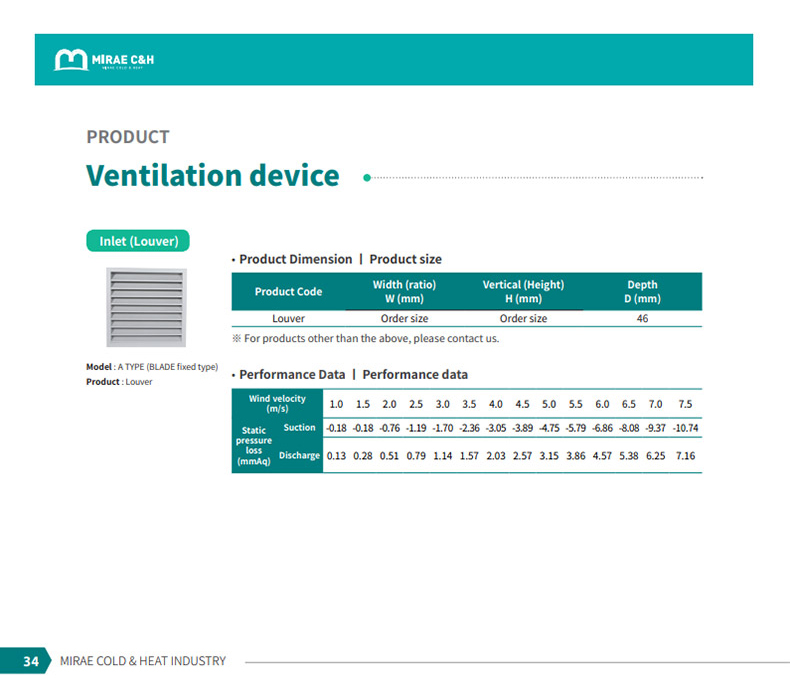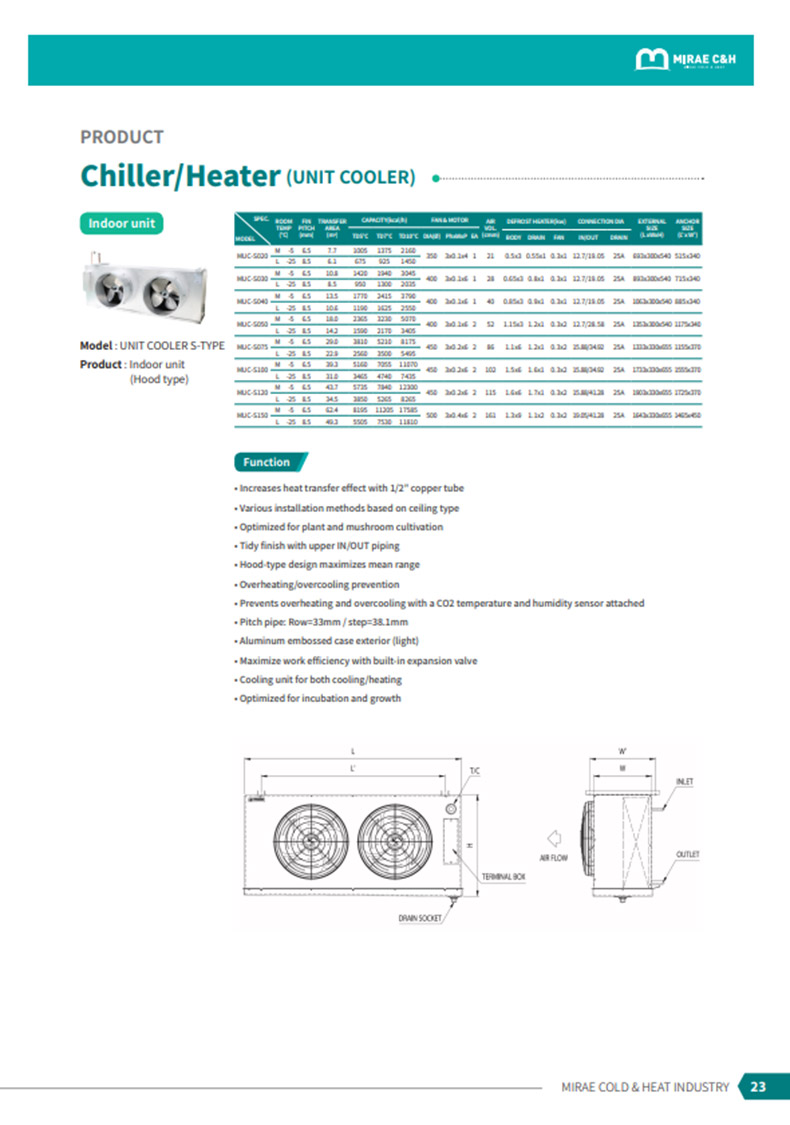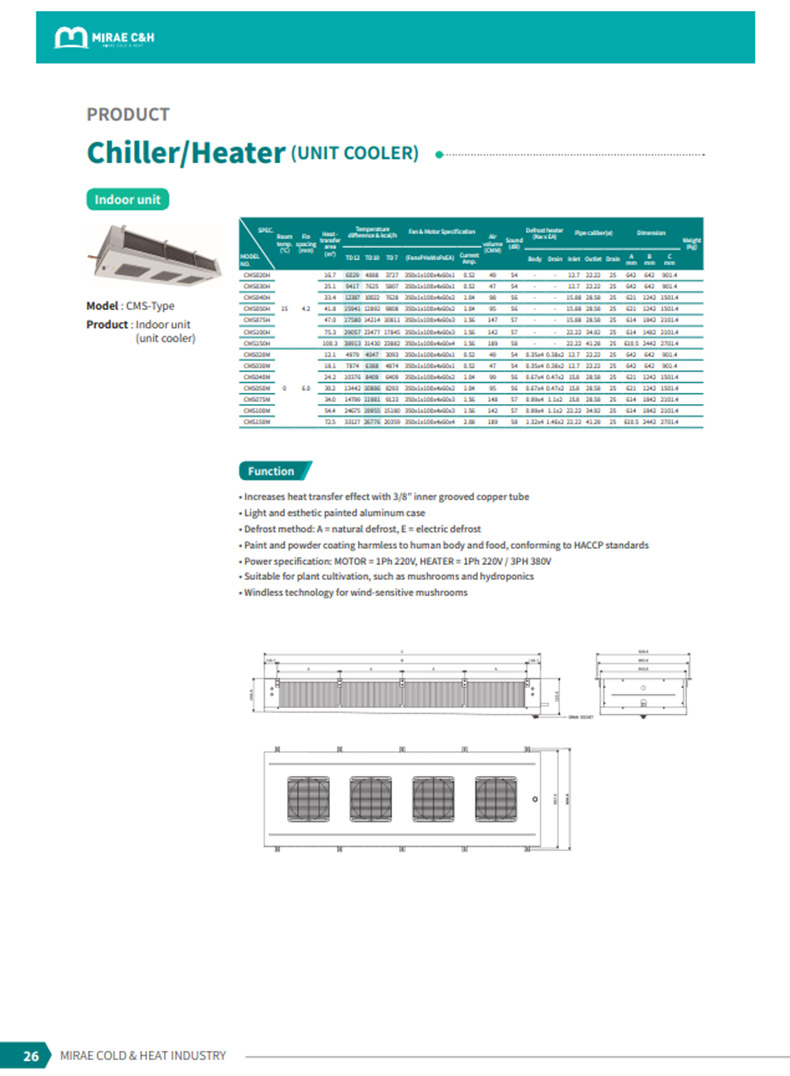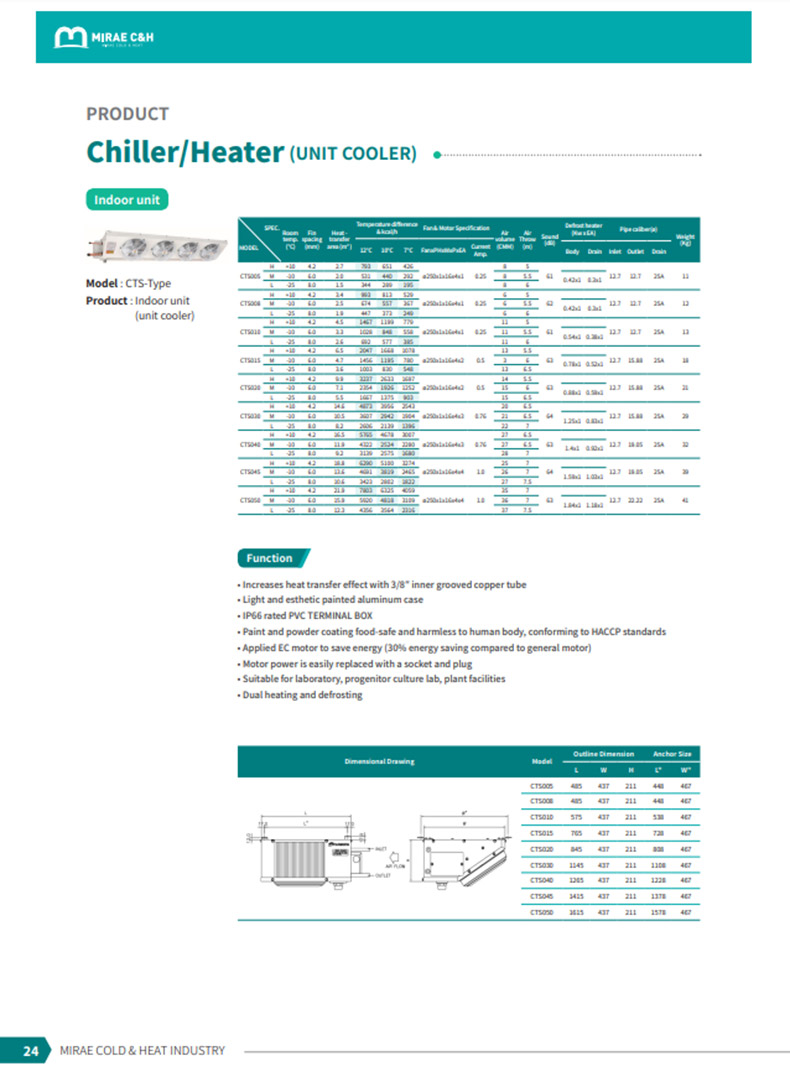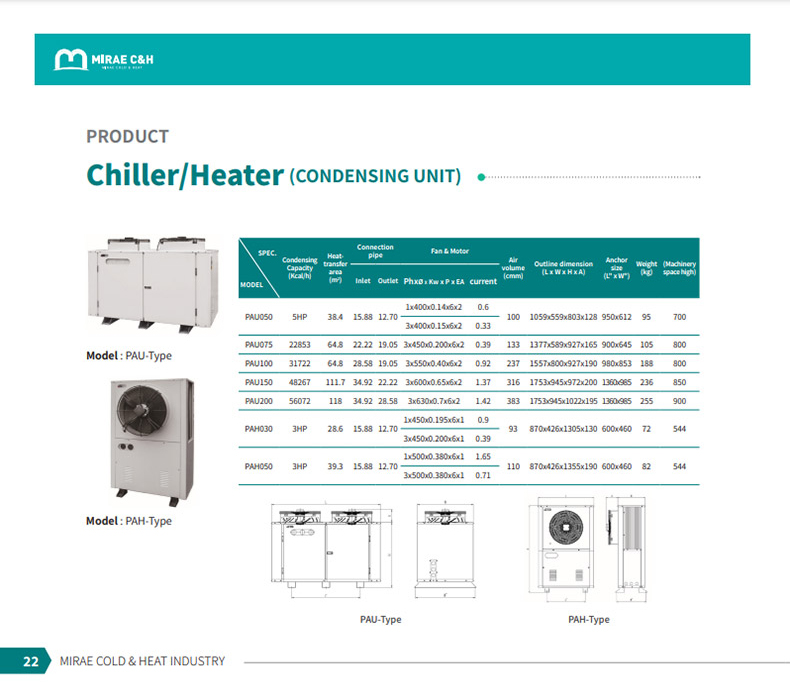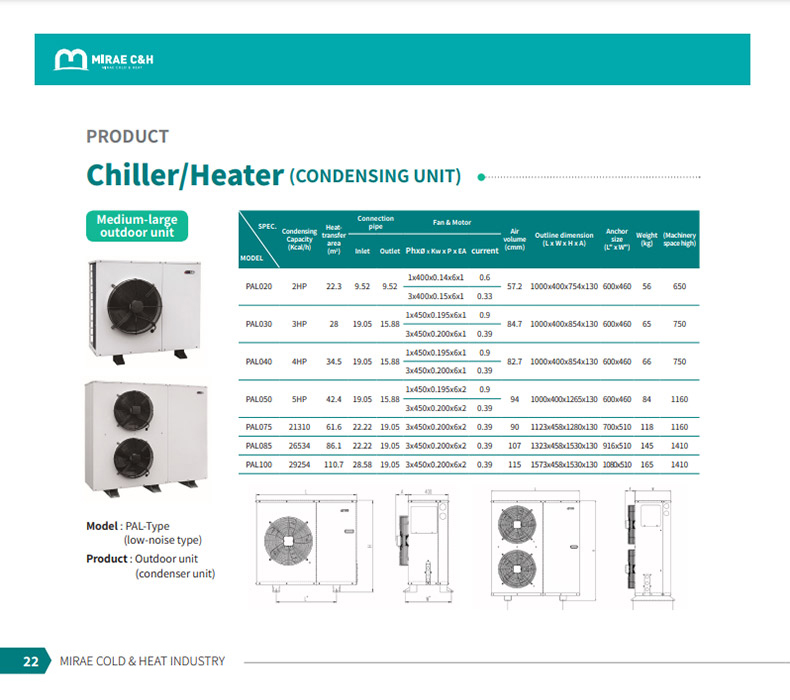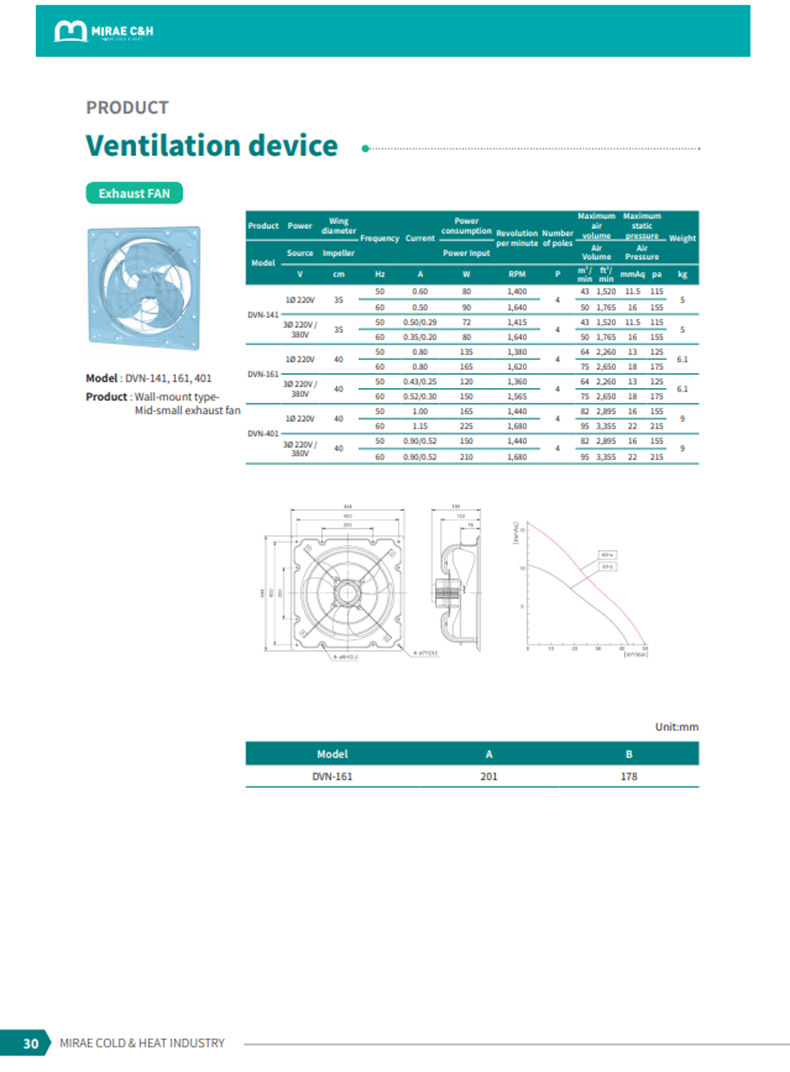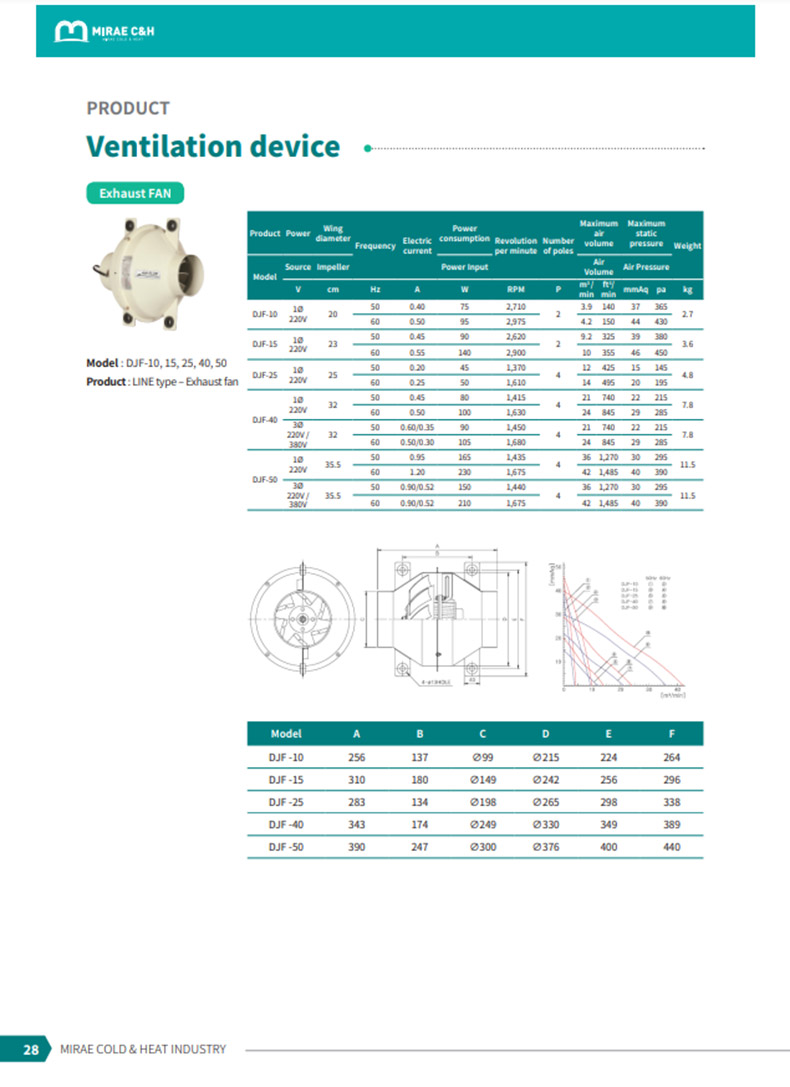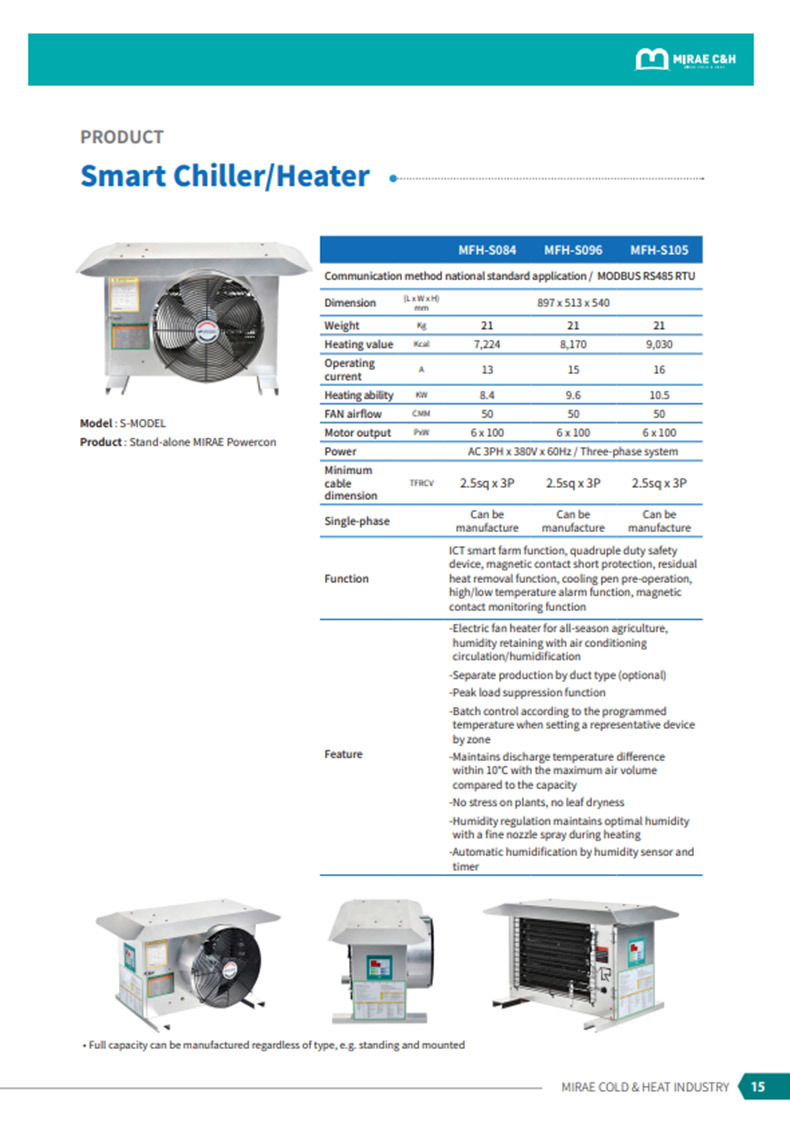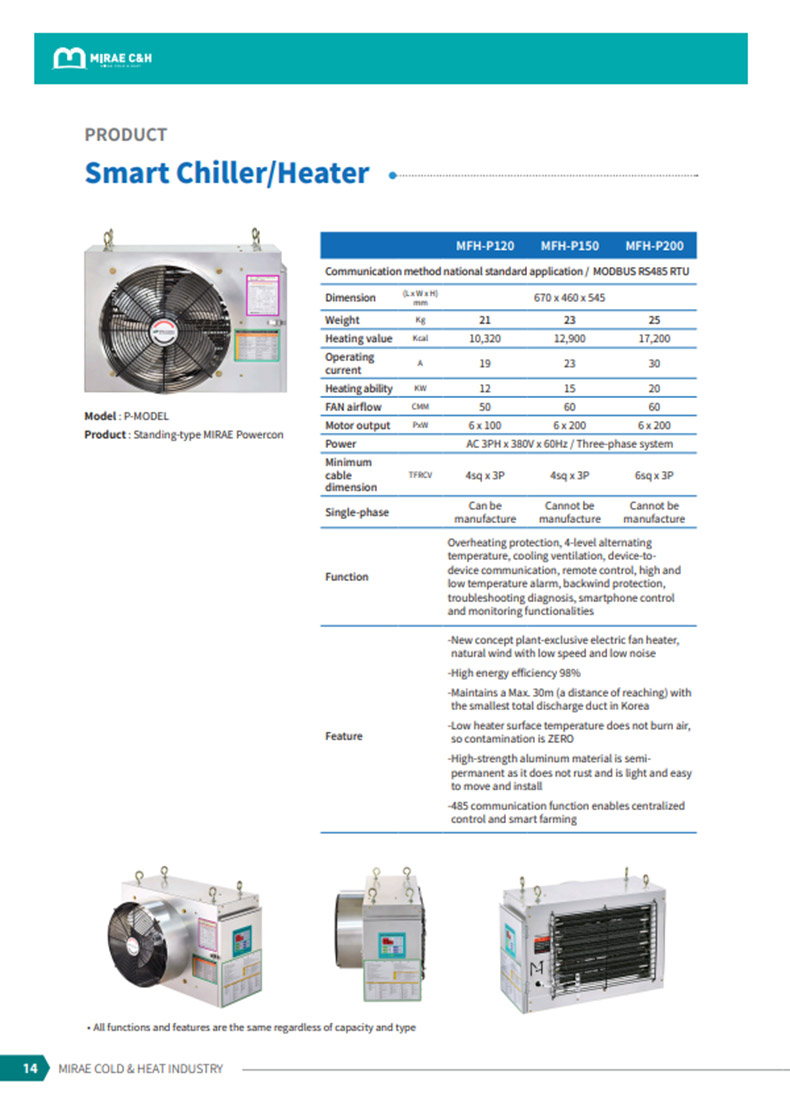When the cold storage warehouse is divided into industrial and agricultural uses, it can be divided into low-temperature storage warehouses for fresh agricultural and marine products used for agriculture, which produce agricultural and marine products that can be stored for a long time, and agricultural products that cannot be stored for a long time. Agricultural and fishery warehouses for long-term storage products such as apples, pears, chestnuts, sweet potatoes, potatoes, onions, etc. within a year are relatively small and medium-sized with a size of more than 20 pyeong, which is comparable to that of farm households. Fresh vegetables and mushrooms such as strawberries, tomatoes, cucumbers, paprika, etc., which cannot be stored for a long period of time, cannot be stored for a long time, so they are intended to be sold within 1 month after production. In the case of refrigeration and freezing facilities to maintain freshness in the distribution process up to final consumer sales of the product, and storage for several days after production and before packaging and shipment, the scale is small within 10 pyeong, and it also depends on the size of the farm.
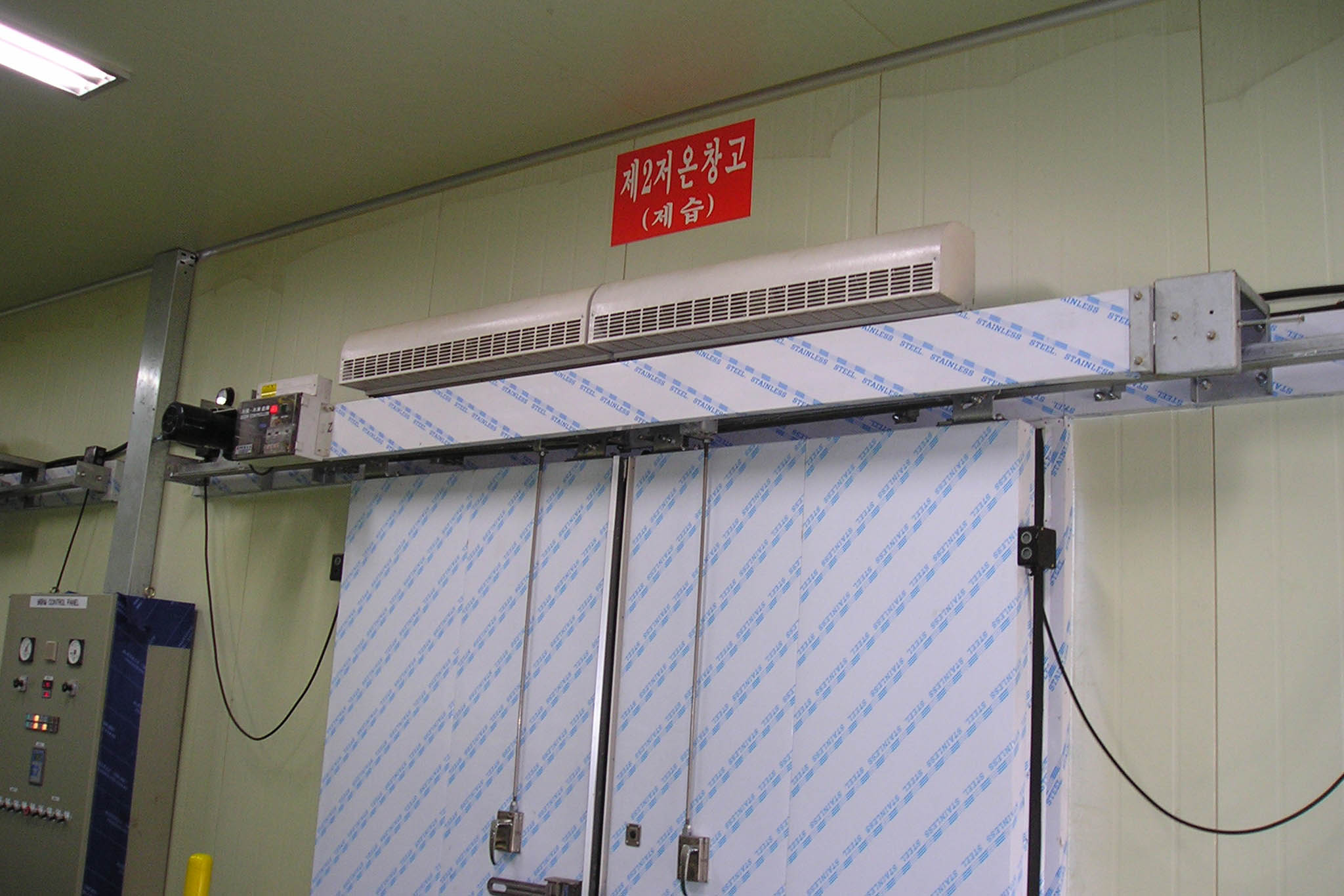
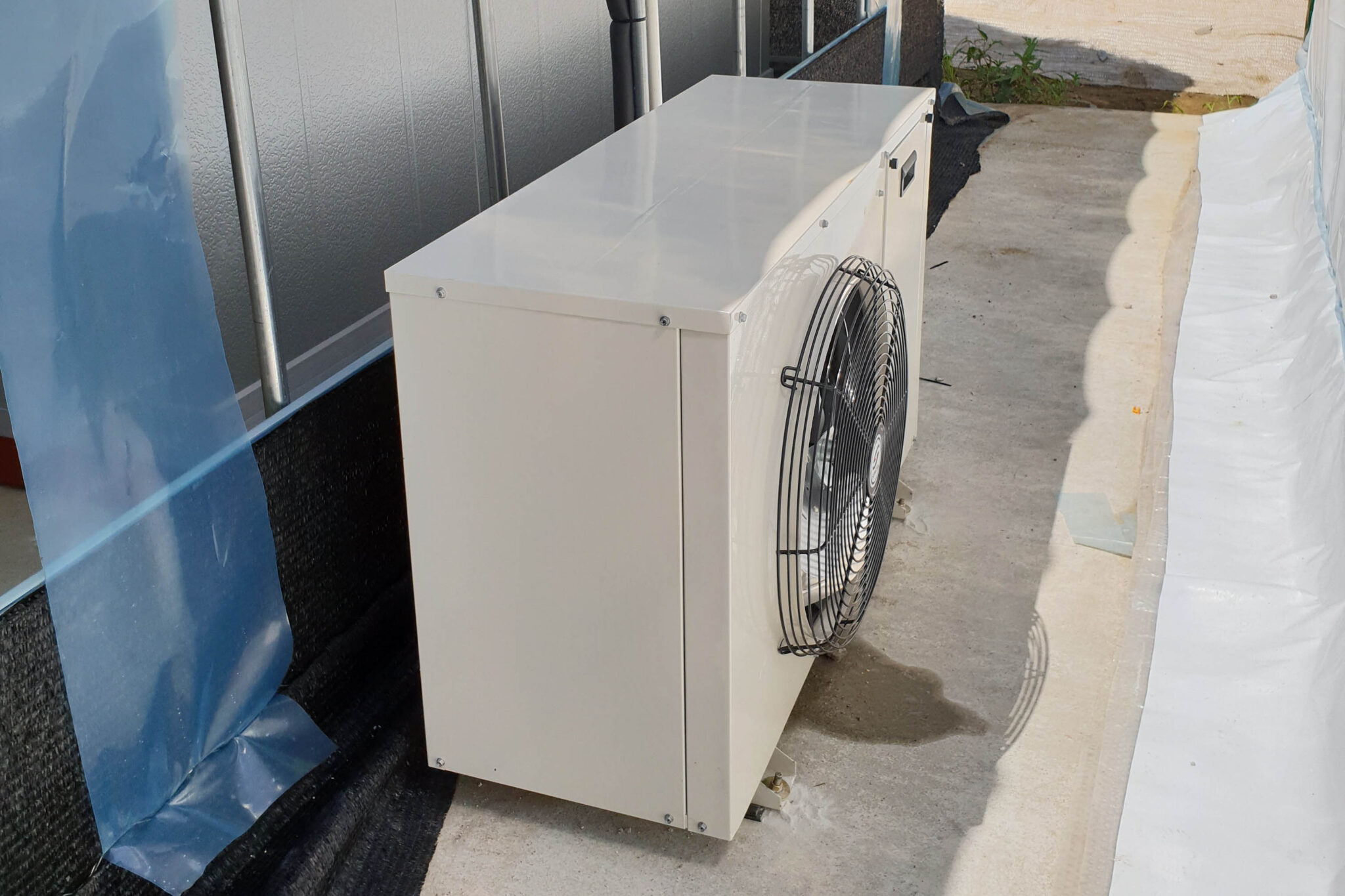
The low-temperature storage facility used by the farm determines the size of the building by determining the facility size of the storage facility based on the type of agricultural products produced, production, storage method, storage period, etc. Second, the location of the warehouse is determined by examining the terrain, logistics, and transportation accessibility of the land and reviewing the future new town development plan.
In the case of simultaneous production and sales in the site selection process, the installation of a portable cold storage within 5 pyeong of a retail store can be considered in consideration of transportation for retail sales and the accessibility of floating population in neighboring cities.
Agricultural cold storage is a facility that can be used for long-term storage and optimal freshness of harvested agricultural products depending on the intended use. It is a rapid refrigeration facility that can quickly stop breathing or carbon assimilation in order to maintain the quality state at the time of harvest for a long period of time by stopping the growth through rapid temperature removal of produced agricultural products. It is necessary to raise the product temperature above the dew point temperature while waiting for a certain amount of time before shipment to a low-temperature storage room, small packaging, and preparation room for shipment. This is a process of gradually increasing the product temperature in a room that maintains a low-humidity state above the dew point temperature in order to prevent condensation due to a temperature difference in the room temperature distribution process after low-temperature storage. In case of distribution through a cold chain, it is omitted.
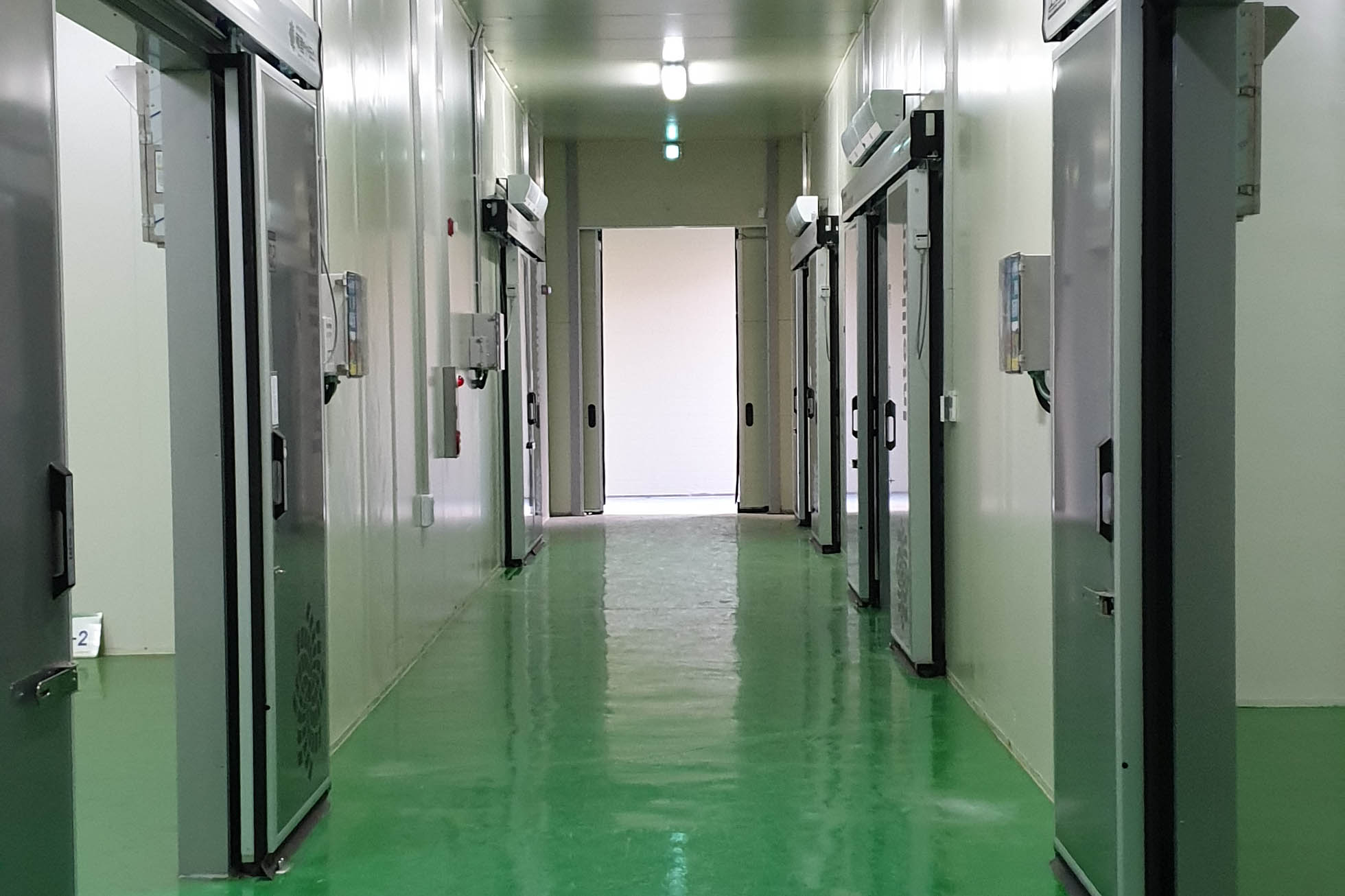
1) Classification according to storage temperature
– Cryogenic storage: In order to maintain the quality of high-quality frozen products such as large quantities of fish, salmon, shrimp, etc., it is also stored at a maximum of –65℃ below -50℃.
– F-class storage: For storage of general frozen cargo, it is usually kept below -20℃, but it is often stored at or below -25℃.
– C class storage: Although it is the storage temperature of fresh vegetables such as fruits and vegetables, it is necessary to manage both temperature and humidity depending on the storage product.
2) Cooling down method
After the facility construction is completed, the temperature in the storage room is lowered to the design temperature during the commissioning process of the equipment and maintained for a certain period of time while monitoring the normal operation of the equipment and the deformation of cracks in the building. Prevents freezing and cracking of structures.
Class C storage: After reaching the set temperature of 0℃, it is carried out for 15 days at a deviation of 3℃
SF-class storage: After sufficient drying process for 15 days at room temperature, it is lowered to -55℃ by -1.5℃ per day.
Class F storage: At room temperature, from 0℃ to -25℃ for 15 days, it is lowered by 1.5℃ per day for 17 days.
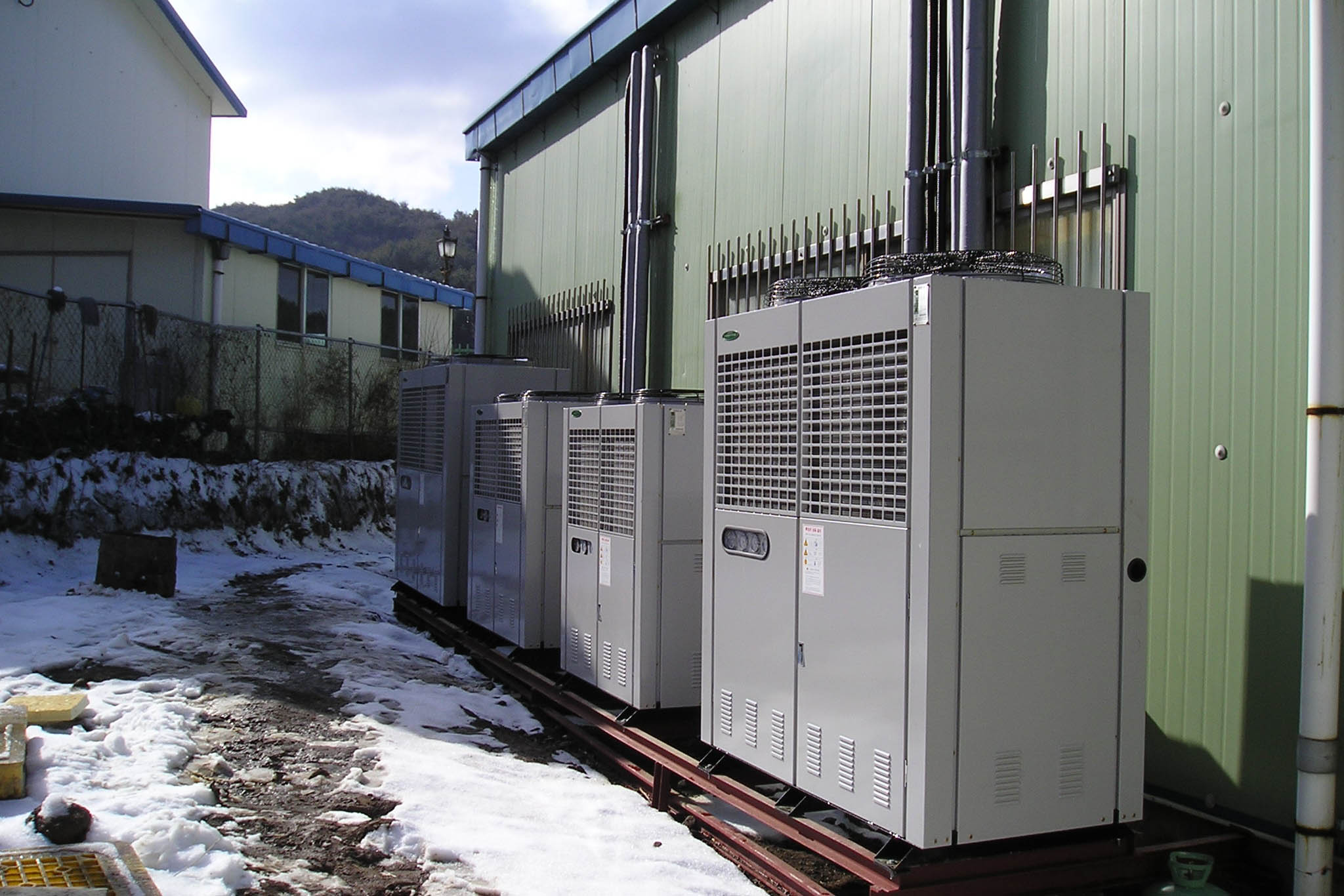
3) Defrost method of cold storage warehouse
The defrost function during operation is an essential function of the refrigerated cold storage warehouse, and there is no facility where this function is omitted. As such, the defrost function is important among the refrigeration facilities in low-temperature warehouses. Depending on the operation method of this defrost function, it significantly affects the operating cost of the refrigeration facility and the quality control of the stored goods. This is a phenomenon in which ice accumulates on the surface of the evaporator when ice is accumulated due to long-term operation, and eventually air does not pass through, making heat exchange impossible. In addition, the heat exchange efficiency deteriorates over time. For this reason, if more than a certain amount of ice accumulates, the defrost function is to stop the refrigeration equipment and melt the ice.
Classification by defrost method
When classifying by defrost method, natural defrost is divided into steel defrost. Natural defrost is a method of periodically stopping the refrigerator as a stationary defrost in the refrigerator at room temperature and operating the cooler fan to melt the ice on the surface of the cooler using the air in the storage. is a method that uses a separate facility and is divided into water spray defrost, electric defrost, and hot cutlet defrost.
With this description of the operation of each defrost method, the water spray defrost is a method used in the refrigeration and refrigeration facilities of a relatively large-capacity logistics warehouse. Because the heat capacity of water is large, it is possible to defrost in a short time as a method of melting, but the initial equipment cost such as defrost water storage tank, piping, pump equipment, etc. It is widely used in equipment. Hot cutlet defrost is a method of melting the ice on the surface of the evaporator by using the condensation heat of the refrigerant vapor flowing into the evaporator by reversing the refrigeration cycle at the time of defrosting.
Electric defrost is a method of melting ice by inserting an electric heater into the evaporator coil at regular intervals, stopping the operation of the refrigeration facility at the time of defrosting, and inserting a defrost heater.
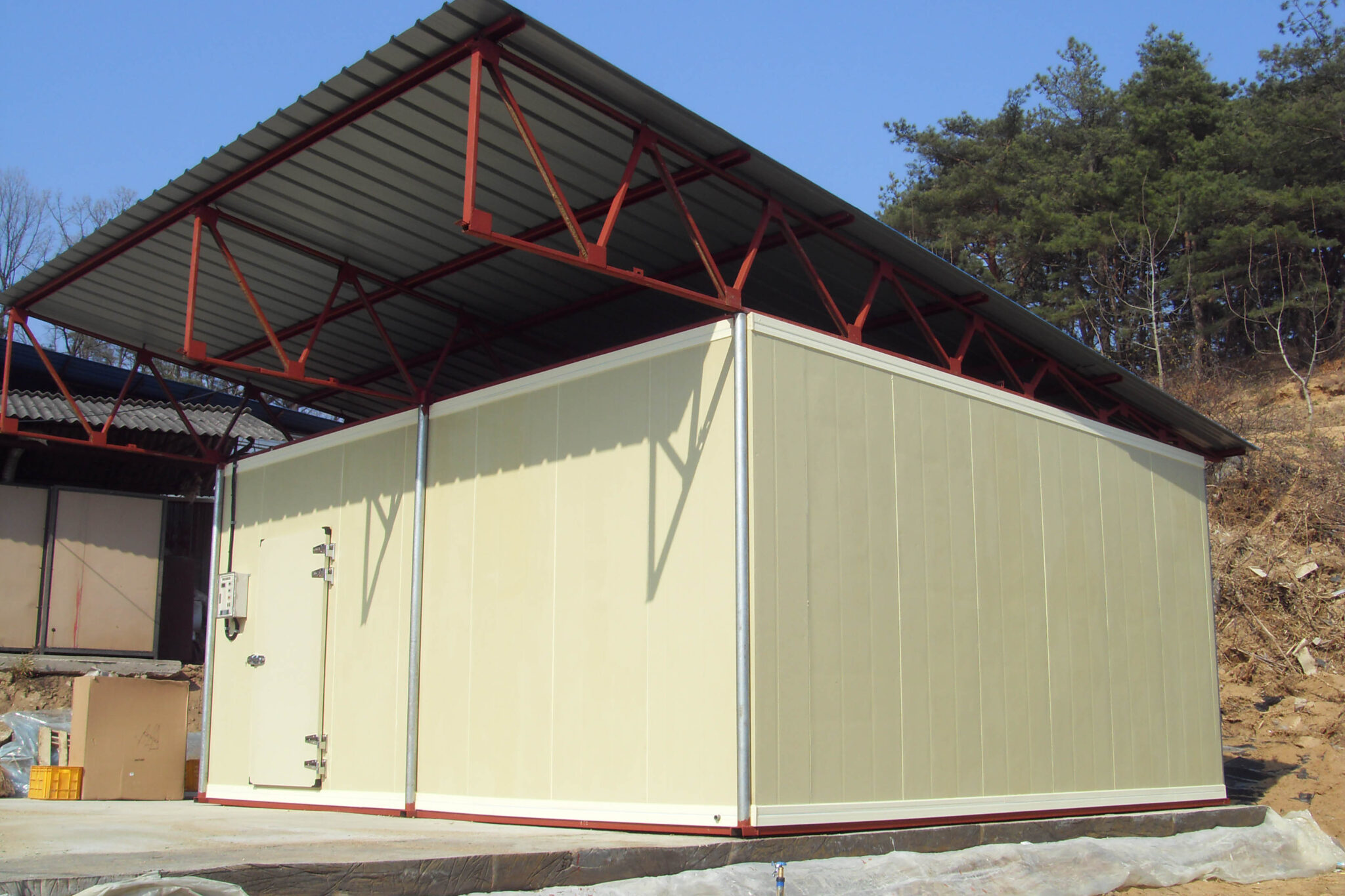
Control method of defrost system
The most ideal system is the control method that accurately detects the amount of ice accumulated in the cooler, starts the defrost at the optimal time when the heat exchange efficiency of the evaporator decreases, and terminates the defrost by detecting the time when all the ice has melted.
As such, it is more important to control the defrost equipment by accurately finding the start and end points of the defrost method than the type of equipment for each defrost method. For example, by using a 24-hour timer for 30 minutes 4 times a day, the time is set and the time is adjusted according to the storage period according to the condition of the stored agricultural products. This is a simple method with few failures, but when the set time is not correct, the cooler operates regardless of whether ice is present, resulting in power wastage and deterioration of quality due to temperature rise during the defrost period. Although there are many problems such as damage to the refrigerator due to the loss of function of the cooler, it is the preferred method by many equipment companies because of the low equipment cost.

As a method to compensate for the problem of the unconditional uniform timer defrost method, a method of detecting the defrost time based on temperature and pressure change by installing various sensors in the refrigerant circulation system of a cooler and refrigeration facility has been widely used recently. This is a method to detect the evaporation temperature of the refrigerant by installing a temperature sensor on the surface of the cooler to determine the time of defrost. It is important to find and set the correct temperature value through error verification several times to set the starting point and type time by referring to the temperature.
At this time, the position of the temperature sensor to be installed can be installed on the suction side pipe of the cooler on the evaporator surface of the cooler, or the pressure value can be used by installing a pressure sensor on the low pressure side.
Smart farm in cold storage warehouse
4) Smart farm in cold storage warehouse
The most important function of the cold storage is how long it can safely store the freshness of fresh produce. Such refrigerated and frozen warehouses are inevitably vulnerable to breakdowns in structure, and when used for a long period of time, failures due to equipment aging are unavoidable. Moreover, when the repair period is prolonged due to a major failure, huge antacid losses occur.
In the case of a farmhouse where a separate professional manager cannot be assigned, such as a large-scale agricultural and fishery product warehouse, it is impossible to detect and take preemptive measures in advance of a frozen warehouse failure, and it is not easy to find and take follow-up measures immediately after a failure.
The safest and trouble-free way to manage and operate a warehouse is the best way, but all machines cannot avoid failure for various reasons. Since control devices such as controllers interact and interact with each other, in the event of a breakdown, it is often impossible to even understand the details of the failure unless you are an expert. It is absolutely impossible for a farmer to grasp the details of a failure before and after failure, and this is an expert area.
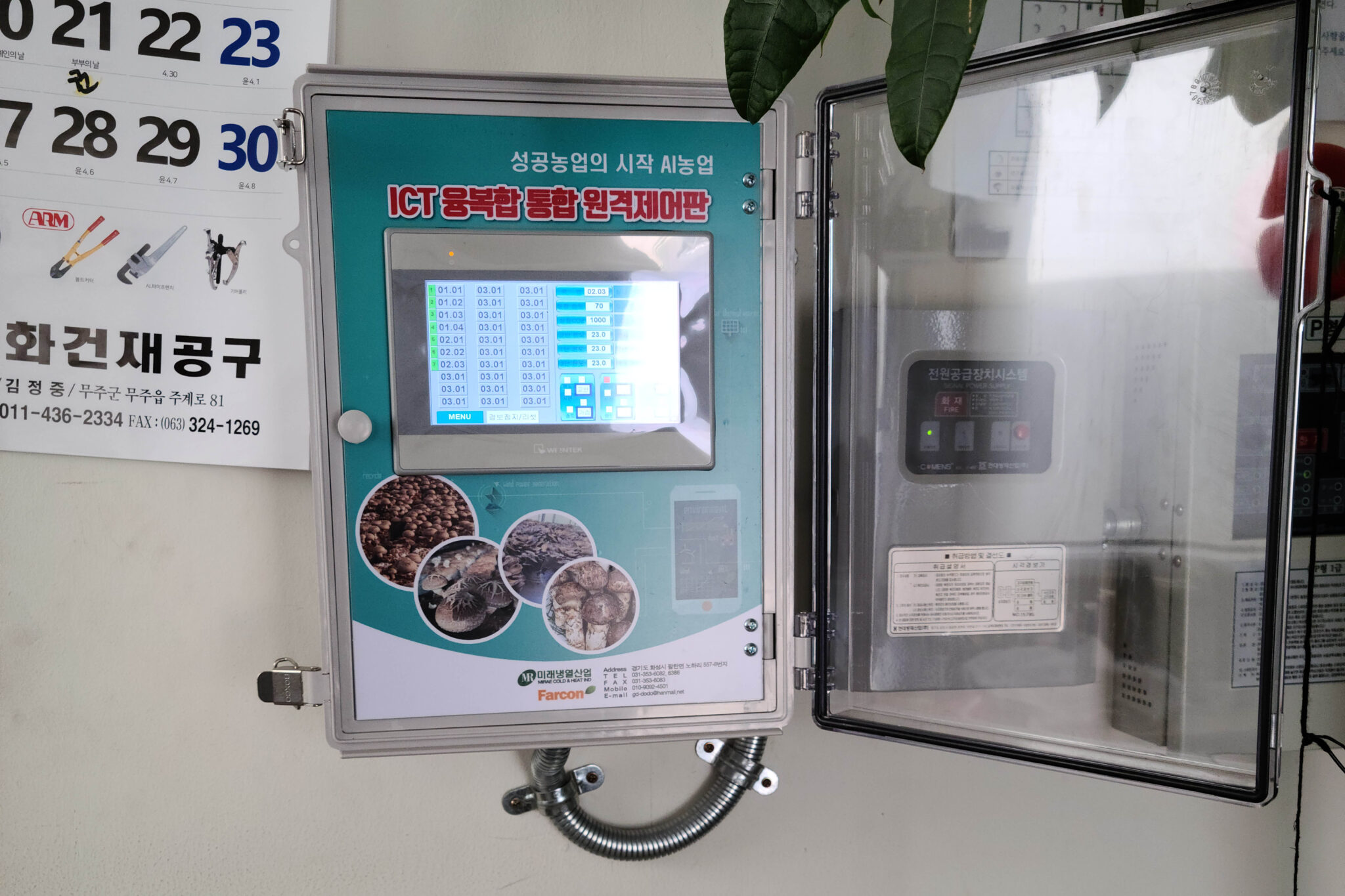
모든 기계는 중대고장전 관련하여 이상징후를 나타내는데 특히 냉동설비는 더욱 그러하다. 설비가 정상가동중 순식간에 고장으로 멈추는 경우는 흔하지 않은 일로 일정부분 이상 징후 즉 사전에 내용을 알리는데, 그러한 현상을 수차반복 후 정지한다. 이러한 징후를 사전 파악하여 중대고장을 미연에 방지하기 위한 방법으로 냉동설비에 전류센서 압력센서 소음센서등을 설치하여 정상가동시 각종자료를 사전 설정하여 운전중 설정값의 오차범위 이탈 시 이러한 내용을 관리자에게 통보하여 장비 가동중 이상 유무를 파악하여 조치함으로 중대고장을 차단한다.
버섯재배사 수경재배사와 같은 실내수직농업인 경우 대부분 냉난방공조 환경제어설비를 설치하고 복합환경제어 시스템으로 설비를 제어하고 ICT 스마트팜 통합원격제어반을 도입하여 핸드폰으로 원격 제어하는 농가의 경우 저온창고의 냉동설비 제어도 통합원격제어반에 연결하여 사용시 스마트제어가 가능하여 이와 같은 이상징후를 사전 파악하여 대처가 가능한데, 상세고장내용까지도 스마트폰으로 확인이 가능하여 농장주와 원격으로 조치가 가능하고 부품교환 등 대부분의 수리가 가능하다.
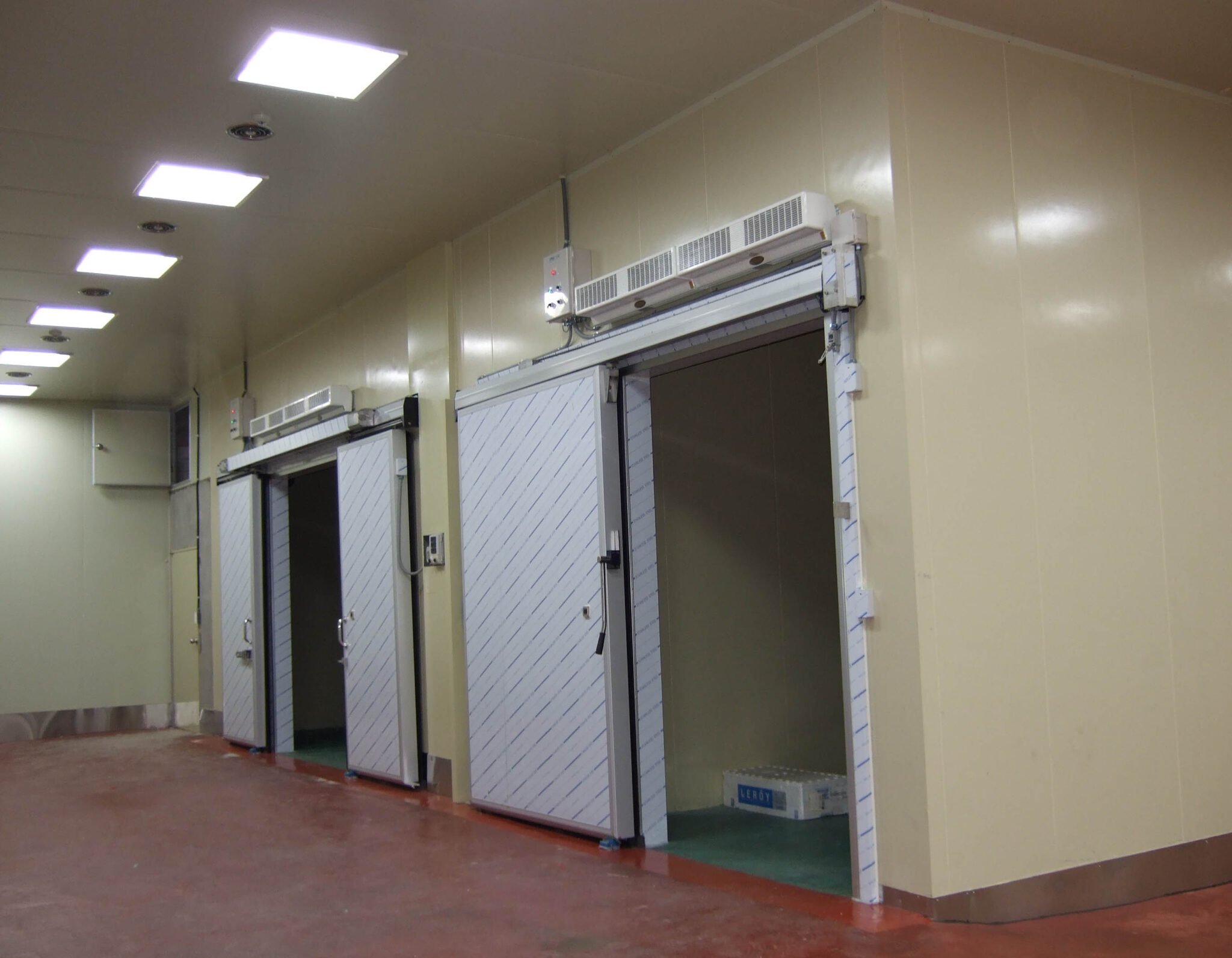
Long-term storage method
for export of shiitake mushrooms
Long-term storage method
for export of shiitake mushrooms

